
- Online Course

40 Best Essays of All Time (Including Links & Writing Tips)
I wanted to improve my writing skills. I thought that reading the forty best essays of all time would bring me closer to my goal.
I had little money (buying forty collections of essays was out of the question) so I’ve found them online instead. I’ve hacked through piles of them, and finally, I’ve found the great ones. Now I want to share the whole list with you (with the addition of my notes about writing). Each item on the list has a direct link to the essay, so please click away and indulge yourself. Also, next to each essay, there’s an image of the book that contains the original work.
About this essay list:
Reading essays is like indulging in candy; once you start, it’s hard to stop. I sought out essays that were not only well-crafted but also impactful. These pieces genuinely shifted my perspective. Whether you’re diving in for enjoyment or to hone your writing, these essays promise to leave an imprint. It’s fascinating how an essay can resonate with you, and even if details fade, its essence remains. I haven’t ranked them in any way; they’re all stellar. Skim through, explore the summaries, and pick up some writing tips along the way. For more essay gems, consider “Best American Essays” by Joyce Carol Oates or “101 Essays That Will Change The Way You Think” curated by Brianna Wiest.
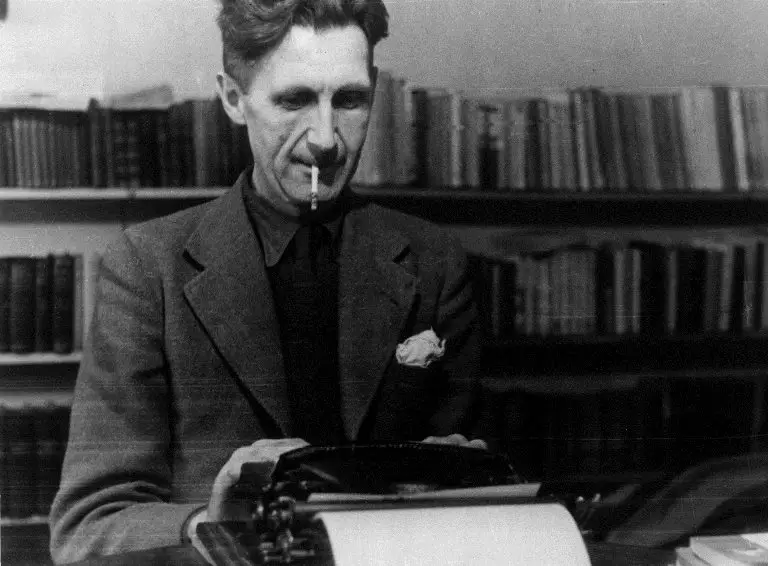
40 Best Essays of All Time (With Links And Writing Tips)
1. david sedaris – laugh, kookaburra.
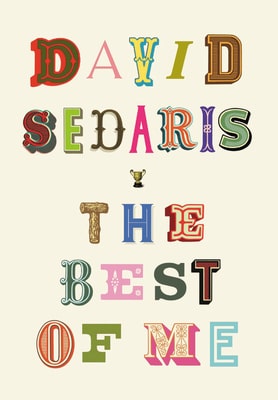
A great family drama takes place against the backdrop of the Australian wilderness. And the Kookaburra laughs… This is one of the top essays of the lot. It’s a great mixture of family reminiscences, travel writing, and advice on what’s most important in life. You’ll also learn an awful lot about the curious culture of the Aussies.
Writing tips from the essay:
- Use analogies (you can make it funny or dramatic to achieve a better effect): “Don’t be afraid,” the waiter said, and he talked to the kookaburra in a soothing, respectful voice, the way you might to a child with a switchblade in his hand”.
- You can touch a few cognate stories in one piece of writing . Reveal the layers gradually. Intertwine them and arrange for a grand finale where everything is finally clear.
- Be on the side of the reader. Become their friend and tell the story naturally, like around the dinner table.
- Use short, punchy sentences. Tell only as much as is required to make your point vivid.
- Conjure sentences that create actual feelings: “I had on a sweater and a jacket, but they weren’t quite enough, and I shivered as we walked toward the body, and saw that it was a . . . what, exactly?”
- You may ask a few tough questions in a row to provoke interest and let the reader think.
2. Charles D’Ambrosio – Documents
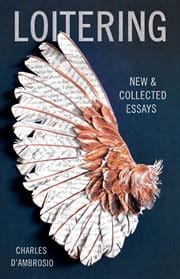
Do you think your life punches you in the face all too often? After reading this essay, you will change your mind. Reading about loss and hardships often makes us sad at first, but then enables us to feel grateful for our lives . D’Ambrosio shares his documents (poems, letters) that had a major impact on his life, and brilliantly shows how not to let go of the past.
- The most powerful stories are about your family and the childhood moments that shaped your life.
- You don’t need to build up tension and pussyfoot around the crux of the matter. Instead, surprise the reader by telling it like it is: “The poem was an allegory about his desire to leave our family.” Or: “My father had three sons. I’m the eldest; Danny, the youngest, killed himself sixteen years ago”.
- You can use real documents and quotes from your family and friends. It makes it so much more personal and relatable.
- Don’t cringe before the long sentence if you know it’s a strong one.
- At the end of the essay, you may come back to the first theme to close the circuit.
- Using slightly poetic language is acceptable, as long as it improves the story.
3. E. B. White – Once more to the lake
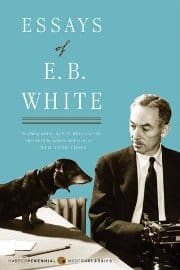
What does it mean to be a father? Can you see your younger self, reflected in your child? This beautiful essay tells the story of the author, his son, and their traditional stay at a placid lake hidden within the forests of Maine. This place of nature is filled with sunshine and childhood memories. It also provides for one of the greatest meditations on nature and the passing of time.
- Use sophisticated language, but not at the expense of readability.
- Use vivid language to trigger the mirror neurons in the reader’s brain: “I took along my son, who had never had any fresh water up his nose and who had seen lily pads only from train windows”.
- It’s important to mention universal feelings that are rarely talked about (it helps to create a bond between two minds): “You remember one thing, and that suddenly reminds you of another thing. I guess I remembered clearest of all the early mornings when the lake was cool and motionless”.
- Animate the inanimate: “this constant and trustworthy body of water”.
- Mentioning tales of yore is a good way to add some mystery and timelessness to your piece.
- Using double, or even triple “and” in one sentence is fine. It can make the sentence sing.
4. Zadie Smith – Fail Better
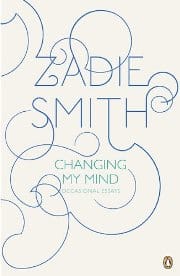
Aspiring writers feel tremendous pressure to perform. The daily quota of words often turns out to be nothing more than gibberish. What then? Also, should the writer please the reader or should she be fully independent? What does it mean to be a writer, anyway? This essay is an attempt to answer these questions, but its contents are not only meant for scribblers. Within it, you’ll find some great notes about literary criticism, how we treat art , and the responsibility of the reader.
- A perfect novel ? There’s no such thing.
- The novel always reflects the inner world of the writer. That’s why we’re fascinated with writers.
- Writing is not simply about craftsmanship, but about taking your reader to the unknown lands. In the words of Christopher Hitchens: “Your ideal authors ought to pull you from the foundering of your previous existence, not smilingly guide you into a friendly and peaceable harbor.”
- Style comes from your unique personality and the perception of the world. It takes time to develop it.
- Never try to tell it all. “All” can never be put into language. Take a part of it and tell it the best you can.
- Avoid being cliché. Try to infuse new life into your writing .
- Writing is about your way of being. It’s your game. Paradoxically, if you try to please everyone, your writing will become less appealing. You’ll lose the interest of the readers. This rule doesn’t apply in the business world where you have to write for a specific person (a target audience).
- As a reader, you have responsibilities too. According to the critics, every thirty years, there’s just a handful of great novels. Maybe it’s true. But there’s also an element of personal connection between the reader and the writer. That’s why for one person a novel is a marvel, while for the other, nothing special at all. That’s why you have to search and find the author who will touch you.
5. Virginia Woolf – Death of the Moth
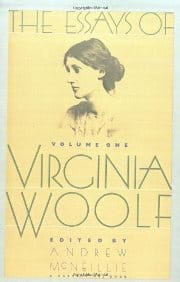
Amid an ordinary day, sitting in a room of her own, Virginia Woolf tells about the epic struggle for survival and the evanescence of life. This short essay is truly powerful. In the beginning, the atmosphere is happy. Life is in full force. And then, suddenly, it fades away. This sense of melancholy would mark the last years of Woolf’s life.
- The melody of language… A good sentence is like music: “Moths that fly by day are not properly to be called moths; they do not excite that pleasant sense of dark autumn nights and ivy-blossom which the commonest yellow- underwing asleep in the shadow of the curtain never fails to rouse in us”.
- You can show the grandest in the mundane (for example, the moth at your window and the drama of life and death).
- Using simple comparisons makes the style more lucid: “Being intent on other matters I watched these futile attempts for a time without thinking, unconsciously waiting for him to resume his flight, as one waits for a machine, that has stopped momentarily, to start again without considering the reason of its failure”.
6. Meghan Daum – My Misspent Youth
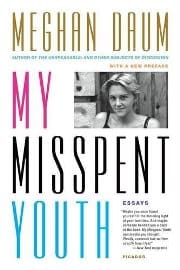
Many of us, at some point or another, dream about living in New York. Meghan Daum’s take on the subject differs slightly from what you might expect. There’s no glamour, no Broadway shows, and no fancy restaurants. Instead, there’s the sullen reality of living in one of the most expensive cities in the world. You’ll get all the juicy details about credit cards, overdue payments, and scrambling for survival. It’s a word of warning. But it’s also a great story about shattered fantasies of living in a big city. Word on the street is: “You ain’t promised mañana in the rotten manzana.”
- You can paint a picture of your former self. What did that person believe in? What kind of world did he or she live in?
- “The day that turned your life around” is a good theme you may use in a story. Memories of a special day are filled with emotions. Strong emotions often breed strong writing.
- Use cultural references and relevant slang to create a context for your story.
- You can tell all the details of the story, even if in some people’s eyes you’ll look like the dumbest motherfucker that ever lived. It adds to the originality.
- Say it in a new way: “In this mindset, the dollars spent, like the mechanics of a machine no one bothers to understand, become an abstraction, an intangible avenue toward self-expression, a mere vehicle of style”.
- You can mix your personal story with the zeitgeist or the ethos of the time.
7. Roger Ebert – Go Gentle Into That Good Night
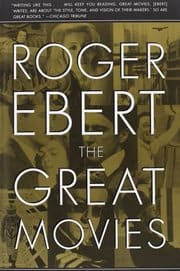
Probably the greatest film critic of all time, Roger Ebert, tells us not to rage against the dying of the light. This essay is full of courage, erudition, and humanism. From it, we learn about what it means to be dying (Hitchens’ “Mortality” is another great work on that theme). But there’s so much more. It’s a great celebration of life too. It’s about not giving up, and sticking to your principles until the very end. It brings to mind the famous scene from Dead Poets Society where John Keating (Robin Williams) tells his students: “Carpe, carpe diem, seize the day boys, make your lives extraordinary”.
- Start with a powerful sentence: “I know it is coming, and I do not fear it, because I believe there is nothing on the other side of death to fear.”
- Use quotes to prove your point -”‘Ask someone how they feel about death’, he said, ‘and they’ll tell you everyone’s gonna die’. Ask them, ‘In the next 30 seconds?’ No, no, no, that’s not gonna happen”.
- Admit the basic truths about reality in a childlike way (especially after pondering quantum physics) – “I believe my wristwatch exists, and even when I am unconscious, it is ticking all the same. You have to start somewhere”.
- Let other thinkers prove your point. Use quotes and ideas from your favorite authors and friends.
8. George Orwell – Shooting an Elephant
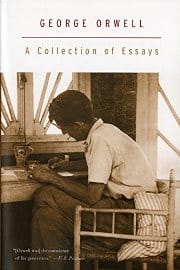
Even after one reading, you’ll remember this one for years. The story, set in British Burma, is about shooting an elephant (it’s not for the squeamish). It’s also the most powerful denunciation of colonialism ever put into writing. Orwell, apparently a free representative of British rule, feels to be nothing more than a puppet succumbing to the whim of the mob.
- The first sentence is the most important one: “In Moulmein, in Lower Burma, I was hated by large numbers of people — the only time in my life that I have been important enough for this to happen to me”.
- You can use just the first paragraph to set the stage for the whole piece of prose.
- Use beautiful language that stirs the imagination: “I remember that it was a cloudy, stuffy morning at the beginning of the rains.” Or: “I watched him beating his bunch of grass against his knees, with that preoccupied grandmotherly air that elephants have.”
- If you’ve ever been to war, you will have a story to tell: “(Never tell me, by the way, that the dead look peaceful. Most of the corpses I have seen looked devilish.)”
- Use simple words, and admit the sad truth only you can perceive: “They did not like me, but with the magical rifle in my hands I was momentarily worth watching”.
- Share words of wisdom to add texture to the writing: “I perceived at this moment that when the white man turns tyrant it is his freedom that he destroys.”
- I highly recommend reading everything written by Orwell, especially if you’re looking for the best essay collections on Amazon or Goodreads.
9. George Orwell – A Hanging
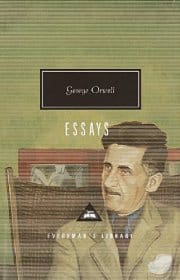
It’s just another day in Burma – time to hang a man. Without much ado, Orwell recounts the grim reality of taking another person’s life. A man is taken from his cage and in a few minutes, he’s going to be hanged. The most horrible thing is the normality of it. It’s a powerful story about human nature. Also, there’s an extraordinary incident with the dog, but I won’t get ahead of myself.
- Create brilliant, yet short descriptions of characters: “He was a Hindu, a puny wisp of a man, with a shaven head and vague liquid eyes. He had a thick, sprouting mustache, absurdly too big for his body, rather like the mustache of a comic man on the films”.
- Understand and share the felt presence of a unique experience: “It is curious, but till that moment I had never realized what it means to destroy a healthy, conscious man”.
- Make your readers hear the sound that will stay with them forever: “And then when the noose was fixed, the prisoner began crying out on his god. It was a high, reiterated cry of “Ram! Ram! Ram! Ram!”
- Make the ending original by refusing the tendency to seek closure or summing it up.
10. Christopher Hitchens – Assassins of The Mind
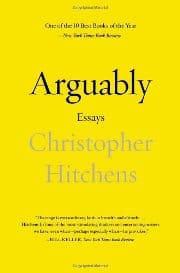
In one of the greatest essays written in defense of free speech, Christopher Hitchens shares many examples of how modern media kneel to the explicit threats of violence posed by Islamic extremists. He recounts the story of his friend, Salman Rushdie, author of Satanic Verses who, for many years, had to watch over his shoulder because of the fatwa of Ayatollah Khomeini. With his usual wit, Hitchens shares various examples of people who died because of their opinions and of editors who refuse to publish anything related to Islam because of fear (and it was written long before the Charlie Hebdo massacre). After reading the essay, you realize that freedom of expression is one of the most precious things we have and that we have to fight for it. I highly recommend all essay collections penned by Hitchens, especially the ones written for Vanity Fair.
- Assume that the readers will know the cultural references. When they do, their self-esteem goes up – they are a part of an insider group.
- When proving your point, give a variety of real-life examples from eclectic sources. Leave no room for ambiguity or vagueness. Research and overall knowledge are essential here.
- Use italics to emphasize a specific word or phrase (here I use the underlining): “We live now in a climate where every publisher and editor and politician has to weigh in advance the possibility of violent Muslim reprisal. In consequence, several things have not happened.”
- Think about how to make it sound more original: “So there is now a hidden partner in our cultural and academic and publishing and the broadcasting world: a shadowy figure that has, uninvited, drawn up a chair to the table.”
11. Christopher Hitchens – The New Commandments
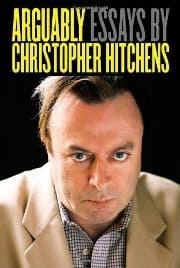
It’s high time to shatter the tablets and amend the biblical rules of conduct. Watch, as Christopher Hitchens slays one commandment after the other on moral, as well as historical grounds. For example, did you know that there are many versions of the divine law dictated by God to Moses which you can find in the Bible? Aren’t we thus empowered to write our version of a proper moral code? If you approach it with an open mind, this essay may change the way you think about the Bible and religion.
- Take the iconoclastic approach. Have a party on the hallowed soil.
- Use humor to undermine orthodox ideas (it seems to be the best way to deal with an established authority).
- Use sarcasm and irony when appropriate (or not): “Nobody is opposed to a day of rest. The international Communist movement got its start by proclaiming a strike for an eight-hour day on May 1, 1886, against Christian employers who used child labor seven days a week”.
- Defeat God on legal grounds: “Wise lawmakers know that it is a mistake to promulgate legislation that is impossible to obey”.
- Be ruthless in the logic of your argument. Provide evidence.
12. Phillip Lopate – Against Joie de Vivre
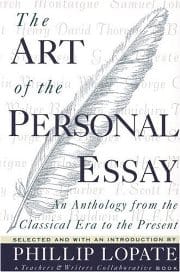
While reading this fantastic essay, this quote from Slavoj Žižek kept coming back to me: “I think that the only life of deep satisfaction is a life of eternal struggle, especially struggle with oneself. If you want to remain happy, just remain stupid. Authentic masters are never happy; happiness is a category of slaves”. I can bear the onus of happiness or joie de vivre for some time. But this force enables me to get free and wallow in the sweet feelings of melancholy and nostalgia. By reading this work of Lopate, you’ll enter into the world of an intelligent man who finds most social rituals a drag. It’s worth exploring.
- Go against the grain. Be flamboyant and controversial (if you can handle it).
- Treat the paragraph like a group of thoughts on one theme. Next paragraph, next theme.
- Use references to other artists to set the context and enrich the prose: “These sunny little canvases with their talented innocence, the third-generation spirit of Montmartre, bore testimony to a love of life so unbending as to leave an impression of rigid narrow-mindedness as extreme as any Savonarola. Their rejection of sorrow was total”.
- Capture the emotions in life that are universal, yet remain unspoken.
- Don’t be afraid to share your intimate experiences.
13. Philip Larkin – The Pleasure Principle
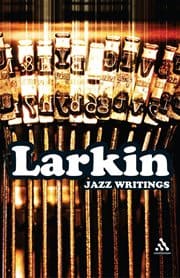
This piece comes from the Required Writing collection of personal essays. Larkin argues that reading in verse should be a source of intimate pleasure – not a medley of unintelligible thoughts that only the author can (or can’t?) decipher. It’s a sobering take on modern poetry and a great call to action for all those involved in it. Well worth a read.
- Write about complicated ideas (such as poetry) simply. You can change how people look at things if you express yourself enough.
- Go boldly. The reader wants a bold writer: “We seem to be producing a new kind of bad poetry, not the old kind that tries to move the reader and fails, but one that does not even try”.
- Play with words and sentence length. Create music: “It is time some of you playboys realized, says the judge, that reading a poem is hard work. Fourteen days in stir. Next case”.
- Persuade the reader to take action. Here, direct language is the most effective.
14. Sigmund Freud – Thoughts for the Times on War and Death
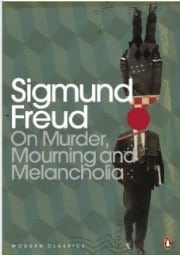
This essay reveals Freud’s disillusionment with the whole project of Western civilization. How the peaceful European countries could engage in a war that would eventually cost over 17 million lives? What stirs people to kill each other? Is it their nature, or are they puppets of imperial forces with agendas of their own? From the perspective of time, this work by Freud doesn’t seem to be fully accurate. Even so, it’s well worth your time.
- Commence with long words derived from Latin. Get grandiloquent, make your argument incontrovertible, and leave your audience discombobulated.
- Use unending sentences, so that the reader feels confused, yet impressed.
- Say it well: “In this way, he enjoyed the blue sea and the grey; the beauty of snow-covered mountains and green meadowlands; the magic of northern forests and the splendor of southern vegetation; the mood evoked by landscapes that recall great historical events, and the silence of untouched nature”.
- Human nature is a subject that never gets dry.
15. Zadie Smith – Some Notes on Attunement
“You are privy to a great becoming, but you recognize nothing” – Francis Dolarhyde. This one is about the elusiveness of change occurring within you. For Zadie, it was hard to attune to the vibes of Joni Mitchell – especially her Blue album. But eventually, she grew up to appreciate her genius, and all the other things changed as well. This top essay is all about the relationship between humans, and art. We shouldn’t like art because we’re supposed to. We should like it because it has an instantaneous, emotional effect on us. Although, according to Stansfield (Gary Oldman) in Léon, liking Beethoven is rather mandatory.
- Build an expectation of what’s coming: “The first time I heard her I didn’t hear her at all”.
- Don’t be afraid of repetition if it feels good.
- Psychedelic drugs let you appreciate things you never appreciated.
- Intertwine a personal journey with philosophical musings.
- Show rather than tell: “My friends pitied their eyes. The same look the faithful give you as you hand them back their “literature” and close the door in their faces”.
- Let the poets speak for you: “That time is past, / And all its aching joys are now no
- more, / And all its dizzy raptures”.
- By voicing your anxieties, you can heal the anxieties of the reader. In that way, you say: “I’m just like you. I’m your friend in this struggle”.
- Admit your flaws to make your persona more relatable.
16. Annie Dillard – Total Eclipse
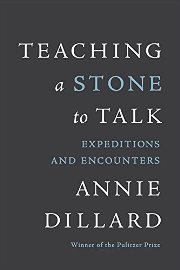
My imagination was always stirred by the scene of the solar eclipse in Pharaoh, by Boleslaw Prus. I wondered about the shock of the disoriented crowd when they saw how their ruler could switch off the light. Getting immersed in this essay by Annie Dillard has a similar effect. It produces amazement and some kind of primeval fear. It’s not only the environment that changes; it’s your mind and the perception of the world. After the eclipse, nothing is going to be the same again.
- Yet again, the power of the first sentence draws you in: “It had been like dying, that sliding down the mountain pass”.
- Don’t miss the extraordinary scene. Then describe it: “Up in the sky, like a crater from some distant cataclysm, was a hollow ring”.
- Use colloquial language. Write as you talk. Short sentences often win.
- Contrast the numinous with the mundane to enthrall the reader.
17. Édouard Levé – When I Look at a Strawberry, I Think of a Tongue

This suicidally beautiful essay will teach you a lot about the appreciation of life and the struggle with mental illness. It’s a collection of personal, apparently unrelated thoughts that show us the rich interior of the author. You look at the real-time thoughts of another person, and then recognize the same patterns within yourself… It sounds like a confession of a person who’s about to take their life, and it’s striking in its originality.
- Use the stream-of-consciousness technique and put random thoughts on paper. Then, polish them: “I have attempted suicide once, I’ve been tempted four times to attempt it”.
- Place the treasure deep within the story: “When I look at a strawberry, I think of a tongue, when I lick one, of a kiss”.
- Don’t worry about what people might think. The more you expose, the more powerful the writing. Readers also take part in the great drama. They experience universal emotions that mostly stay inside. You can translate them into writing.
18. Gloria E. Anzaldúa – How to Tame a Wild Tongue
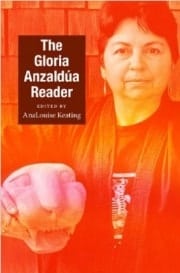
Anzaldúa, who was born in south Texas, had to struggle to find her true identity. She was American, but her culture was grounded in Mexico. In this way, she and her people were not fully respected in either of the countries. This essay is an account of her journey of becoming the ambassador of the Chicano (Mexican-American) culture. It’s full of anecdotes, interesting references, and different shades of Spanish. It’s a window into a new cultural dimension that you’ve never experienced before.
- If your mother tongue is not English, but you write in English, use some of your unique homeland vocabulary.
- You come from a rich cultural heritage. You can share it with people who never heard about it, and are not even looking for it, but it is of immense value to them when they discover it.
- Never forget about your identity. It is precious. It is a part of who you are. Even if you migrate, try to preserve it. Use it to your best advantage and become the voice of other people in the same situation.
- Tell them what’s really on your mind: “So if you want to hurt me, talk badly about my language. Ethnic identity is twin skin to linguistic identity – I am my language”.
19. Kurt Vonnegut – Dispatch From A Man Without a Country
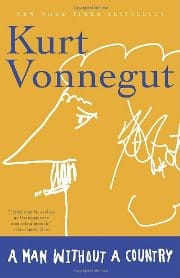
In terms of style, this essay is flawless. It’s simple, conversational, humorous, and yet, full of wisdom. And when Vonnegut becomes a teacher and draws an axis of “beginning – end”, and, “good fortune – bad fortune” to explain literature, it becomes outright hilarious. It’s hard to find an author with such a down-to-earth approach. He doesn’t need to get intellectual to prove a point. And the point could be summed up by the quote from Great Expectations – “On the Rampage, Pip, and off the Rampage, Pip – such is Life!”
- Start with a curious question: “Do you know what a twerp is?”
- Surprise your readers with uncanny analogies: “I am from a family of artists. Here I am, making a living in the arts. It has not been a rebellion. It’s as though I had taken over the family Esso station.”
- Use your natural language without too many special effects. In time, the style will crystalize.
- An amusing lesson in writing from Mr. Vonnegut: “Here is a lesson in creative writing. First rule: Do not use semicolons. They are transvestite hermaphrodites representing absolutely nothing. All they do is show you’ve been to college”.
- You can put actual images or vignettes between the paragraphs to illustrate something.
20. Mary Ruefle – On Fear
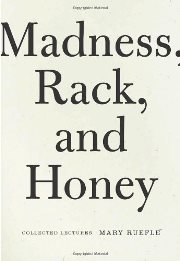
Most psychologists and gurus agree that fear is the greatest enemy of success or any creative activity. It’s programmed into our minds to keep us away from imaginary harm. Mary Ruefle takes on this basic human emotion with flair. She explores fear from so many angles (especially in the world of poetry-writing) that at the end of this personal essay, you will look at it, dissect it, untangle it, and hopefully be able to say “f**k you” the next time your brain is trying to stop you.
- Research your subject thoroughly. Ask people, have interviews, get expert opinions, and gather as much information as possible. Then scavenge through the fields of data, and pull out the golden bits that will let your prose shine.
- Use powerful quotes to add color to your story: “The poet who embarks on the creation of the poem (as I know by experience), begins with the aimless sensation of a hunter about to embark on a night hunt through the remotest of forests. Unaccountable dread stirs in his heart”. – Lorca.
- Writing advice from the essay: “One of the fears a young writer has is not being able to write as well as he or she wants to, the fear of not being able to sound like X or Y, a favorite author. But out of fear, hopefully, is born a young writer’s voice”.
21. Susan Sontag – Against Interpretation
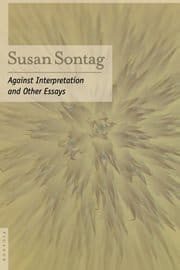
In this highly intellectual essay, Sontag fights for art and its interpretation. It’s a great lesson, especially for critics and interpreters who endlessly chew on works that simply defy interpretation. Why don’t we just leave the art alone? I always hated it when at school they asked me: “What did the author have in mind when he did X or Y?” Iēsous Pantocrator! Hell if I know! I will judge it through my subjective experience!
- Leave the art alone: “Today is such a time, when the project of interpretation is reactionary, stifling. Like the fumes of the automobile and heavy industry which befoul the urban atmosphere, the effusion of interpretations of art today poisons our sensibilities”.
- When you have something really important to say, style matters less.
- There’s no use in creating a second meaning or inviting interpretation of our art. Just leave it be and let it speak for itself.
22. Nora Ephron – A Few Words About Breasts
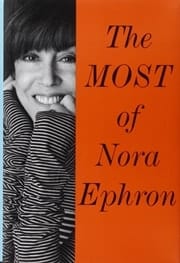
This is a heartwarming, coming-of-age story about a young girl who waits in vain for her breasts to grow. It’s simply a humorous and pleasurable read. The size of breasts is a big deal for women. If you’re a man, you may peek into the mind of a woman and learn many interesting things. If you’re a woman, maybe you’ll be able to relate and at last, be at peace with your bosom.
- Touch an interesting subject and establish a strong connection with the readers (in that case, women with small breasts). Let your personality shine through the written piece. If you are lighthearted, show it.
- Use hyphens to create an impression of real talk: “My house was full of apples and peaches and milk and homemade chocolate chip cookies – which were nice, and good for you, but-not-right-before-dinner-or-you’ll-spoil-your-appetite.”
- Use present tense when you tell a story to add more life to it.
- Share the pronounced, memorable traits of characters: “A previous girlfriend named Solange, who was famous throughout Beverly Hills High School for having no pigment in her right eyebrow, had knitted them for him (angora dice)”.
23. Carl Sagan – Does Truth Matter – Science, Pseudoscience, and Civilization
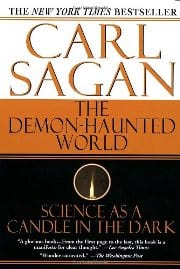
Carl Sagan was one of the greatest proponents of skepticism, and an author of numerous books, including one of my all-time favorites – The Demon-Haunted World . He was also a renowned physicist and the host of the fantastic Cosmos: A Personal Voyage series, which inspired a whole generation to uncover the mysteries of the cosmos. He was also a dedicated weed smoker – clearly ahead of his time. The essay that you’re about to read is a crystallization of his views about true science, and why you should check the evidence before believing in UFOs or similar sorts of crap.
- Tell people the brutal truth they need to hear. Be the one who spells it out for them.
- Give a multitude of examples to prove your point. Giving hard facts helps to establish trust with the readers and show the veracity of your arguments.
- Recommend a good book that will change your reader’s minds – How We Know What Isn’t So: The Fallibility of Human Reason in Everyday Life
24. Paul Graham – How To Do What You Love
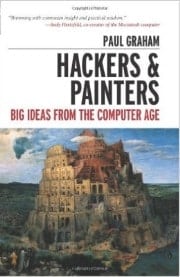
How To Do What You Love should be read by every college student and young adult. The Internet is flooded with a large number of articles and videos that are supposed to tell you what to do with your life. Most of them are worthless, but this one is different. It’s sincere, and there’s no hidden agenda behind it. There’s so much we take for granted – what we study, where we work, what we do in our free time… Surely we have another two hundred years to figure it out, right? Life’s too short to be so naïve. Please, read the essay and let it help you gain fulfillment from your work.
- Ask simple, yet thought-provoking questions (especially at the beginning of the paragraph) to engage the reader: “How much are you supposed to like what you do?”
- Let the readers question their basic assumptions: “Prestige is like a powerful magnet that warps even your beliefs about what you enjoy. It causes you to work not on what you like, but what you’d like to like”.
- If you’re writing for a younger audience, you can act as a mentor. It’s beneficial for younger people to read a few words of advice from a person with experience.
25. John Jeremiah Sullivan – Mister Lytle
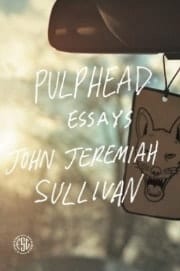
A young, aspiring writer is about to become a nurse of a fading writer – Mister Lytle (Andrew Nelson Lytle), and there will be trouble. This essay by Sullivan is probably my favorite one from the whole list. The amount of beautiful sentences it contains is just overwhelming. But that’s just a part of its charm. It also takes you to the Old South which has an incredible atmosphere. It’s grim and tawny but you want to stay there for a while.
- Short, distinct sentences are often the most powerful ones: “He had a deathbed, in other words. He didn’t go suddenly”.
- Stay consistent with the mood of the story. When reading Mister Lytle you are immersed in that southern, forsaken, gloomy world, and it’s a pleasure.
- The spectacular language that captures it all: “His French was superb, but his accent in English was best—that extinct mid-Southern, land-grant pioneer speech, with its tinges of the abandoned Celtic urban Northeast (“boned” for burned) and its raw gentility”.
- This essay is just too good. You have to read it.
26. Joan Didion – On Self Respect
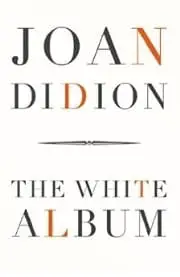
Normally, with that title, you would expect some straightforward advice about how to improve your character and get on with your goddamn life – but not from Joan Didion. From the very beginning, you can feel the depth of her thinking, and the unmistakable style of a true woman who’s been hurt. You can learn more from this essay than from whole books about self-improvement . It reminds me of the scene from True Detective, where Frank Semyon tells Ray Velcoro to “own it” after he realizes he killed the wrong man all these years ago. I guess we all have to “own it”, recognize our mistakes, and move forward sometimes.
- Share your moral advice: “Character — the willingness to accept responsibility for one’s own life — is the source from which self-respect springs”.
- It’s worth exploring the subject further from a different angle. It doesn’t matter how many people have already written on self-respect or self-reliance – you can still write passionately about it.
- Whatever happens, you must take responsibility for it. Brave the storms of discontent.
27. Susan Sontag – Notes on Camp
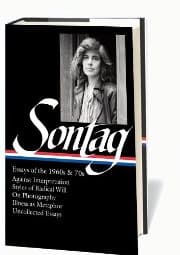
I’ve never read anything so thorough and lucid about an artistic current. After reading this essay, you will know what camp is. But not only that – you will learn about so many artists you’ve never heard of. You will follow their traces and go to places where you’ve never been before. You will vastly increase your appreciation of art. It’s interesting how something written as a list could be so amazing. All the listicles we usually see on the web simply cannot compare with it.
- Talking about artistic sensibilities is a tough job. When you read the essay, you will see how much research, thought and raw intellect came into it. But that’s one of the reasons why people still read it today, even though it was written in 1964.
- You can choose an unorthodox way of expression in the medium for which you produce. For example, Notes on Camp is a listicle – one of the most popular content formats on the web. But in the olden days, it was uncommon to see it in print form.
- Just think about what is camp: “And third among the great creative sensibilities is Camp: the sensibility of failed seriousness, of the theatricalization of experience. Camp refuses both the harmonies of traditional seriousness and the risks of fully identifying with extreme states of feeling”.
28. Ralph Waldo Emerson – Self-Reliance
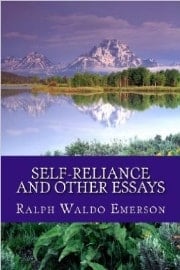
That’s the oldest one from the lot. Written in 1841, it still inspires generations of people. It will let you understand what it means to be self-made. It contains some of the most memorable quotes of all time. I don’t know why, but this one especially touched me: “Every true man is a cause, a country, and an age; requires infinite spaces and numbers and time fully to accomplish his design, and posterity seems to follow his steps as a train of clients”. Now isn’t it purely individualistic, American thought? Emerson told me (and he will tell you) to do something amazing with my life. The language it contains is a bit archaic, but that just adds to the weight of the argument. You can consider it to be a meeting with a great philosopher who shaped the ethos of the modern United States.
- You can start with a powerful poem that will set the stage for your work.
- Be free in your creative flow. Do not wait for the approval of others: “What I must do is all that concerns me, not what the people think. This rule, equally arduous in actual and in intellectual life, may serve for the whole distinction between greatness and meanness”.
- Use rhetorical questions to strengthen your argument: “I hear a preacher announce for his text and topic the expediency of one of the institutions of his church. Do I not know beforehand that not possibly say a new and spontaneous word?”
29. David Foster Wallace – Consider The Lobster
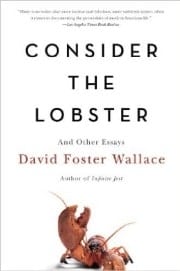
When you want simple field notes about a food festival, you needn’t send there the formidable David Foster Wallace. He sees right through the hypocrisy and cruelty behind killing hundreds of thousands of innocent lobsters – by boiling them alive. This essay uncovers some of the worst traits of modern American people. There are no apologies or hedging one’s bets. There’s just plain truth that stabs you in the eye like a lobster claw. After reading this essay, you may reconsider the whole animal-eating business.
- When it’s important, say it plainly and stagger the reader: “[Lobsters] survive right up until they’re boiled. Most of us have been in supermarkets or restaurants that feature tanks of live lobster, from which you can pick out your supper while it watches you point”.
- In your writing, put exact quotes of the people you’ve been interviewing (including slang and grammatical errors). It makes it more vivid, and interesting.
- You can use humor in serious situations to make your story grotesque.
- Use captions to expound on interesting points of your essay.
30. David Foster Wallace – The Nature of the Fun
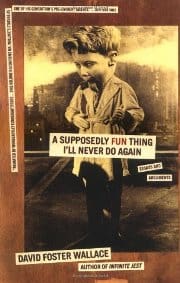
The famous novelist and author of the most powerful commencement speech ever done is going to tell you about the joys and sorrows of writing a work of fiction. It’s like taking care of a mutant child that constantly oozes smelly liquids. But you love that child and you want others to love it too. It’s a very humorous account of what it means to be an author. If you ever plan to write a novel, you should read that one. And the story about the Chinese farmer is just priceless.
- Base your point on a chimerical analogy. Here, the writer’s unfinished work is a “hideously damaged infant”.
- Even in expository writing, you may share an interesting story to keep things lively.
- Share your true emotions (even when you think they won’t interest anyone). Often, that’s exactly what will interest the reader.
- Read the whole essay for marvelous advice on writing fiction.
31. Margaret Atwood – Attitude
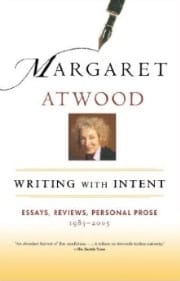
This is not an essay per se, but I included it on the list for the sake of variety. It was delivered as a commencement speech at The University of Toronto, and it’s about keeping the right attitude. Soon after leaving university, most graduates have to forget about safety, parties, and travel and start a new life – one filled with a painful routine that will last until they drop. Atwood says that you don’t have to accept that. You can choose how you react to everything that happens to you (and you don’t have to stay in that dead-end job for the rest of your days).
- At times, we are all too eager to persuade, but the strongest persuasion is not forceful. It’s subtle. It speaks to the heart. It affects you gradually.
- You may be tempted to talk about a subject by first stating what it is not, rather than what it is. Try to avoid that.
- Simple advice for writers (and life in general): “When faced with the inevitable, you always have a choice. You may not be able to alter reality, but you can alter your attitude towards it”.
32. Jo Ann Beard – The Fourth State of Matter
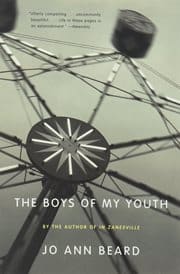
Read that one as soon as possible. It’s one of the most masterful and impactful essays you’ll ever read. It’s like a good horror – a slow build-up, and then your jaw drops to the ground. To summarize the story would be to spoil it, so I recommend that you just dig in and devour this essay in one sitting. It’s a perfect example of “show, don’t tell” writing, where the actions of characters are enough to create the right effect. No need for flowery adjectives here.
- The best story you will tell is going to come from your personal experience.
- Use mysteries that will nag the reader. For example, at the beginning of the essay, we learn about the “vanished husband” but there’s no explanation. We have to keep reading to get the answer.
- Explain it in simple terms: “You’ve got your solid, your liquid, your gas, and then your plasma”. Why complicate?
33. Terence McKenna – Tryptamine Hallucinogens and Consciousness
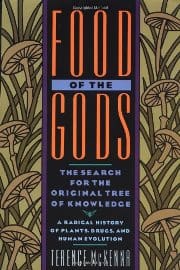
To me, Terence McKenna was one of the most interesting thinkers of the twentieth century. His many lectures (now available on YouTube) attracted millions of people who suspect that consciousness holds secrets yet to be unveiled. McKenna consumed psychedelic drugs for most of his life and it shows (in a positive way). Many people consider him a looney, and a hippie, but he was so much more than that. He dared to go into the abyss of his psyche and come back to tell the tale. He also wrote many books (the most famous being Food Of The Gods ), built a huge botanical garden in Hawaii , lived with shamans, and was a connoisseur of all things enigmatic and obscure. Take a look at this essay, and learn more about the explorations of the subconscious mind.
- Become the original thinker, but remember that it may require extraordinary measures: “I call myself an explorer rather than a scientist because the area that I’m looking at contains insufficient data to support even the dream of being a science”.
- Learn new words every day to make your thoughts lucid.
- Come up with the most outlandish ideas to push the envelope of what’s possible. Don’t take things for granted or become intellectually lazy. Question everything.
34. Eudora Welty – The Little Store
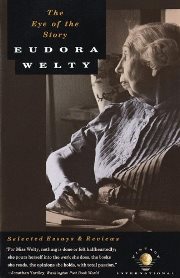
By reading this little-known essay, you will be transported into the world of the old American South. It’s a remembrance of trips to the little store in a little town. It’s warm and straightforward, and when you read it, you feel like a child once more. All these beautiful memories live inside of us. They lay somewhere deep in our minds, hidden from sight. The work by Eudora Welty is an attempt to uncover some of them and let you get reacquainted with some smells and tastes of the past.
- When you’re from the South, flaunt it. It’s still good old English but sometimes it sounds so foreign. I can hear the Southern accent too: “There were almost tangible smells – licorice recently sucked in a child’s cheek, dill-pickle brine that had leaked through a paper sack in a fresh trail across the wooden floor, ammonia-loaded ice that had been hoisted from wet Croker sacks and slammed into the icebox with its sweet butter at the door, and perhaps the smell of still-untrapped mice”.
- Yet again, never forget your roots.
- Childhood stories can be the most powerful ones. You can write about how they shaped you.
35. John McPhee – The Search for Marvin Gardens
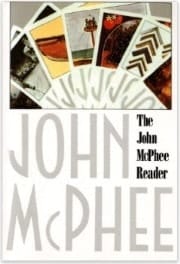
The Search for Marvin Gardens contains many layers of meaning. It’s a story about a Monopoly championship, but also, it’s the author’s search for the lost streets visible on the board of the famous board game. It also presents a historical perspective on the rise and fall of civilizations, and on Atlantic City, which once was a lively place, and then, slowly declined, the streets filled with dirt and broken windows.
- There’s nothing like irony: “A sign- ‘Slow, Children at Play’- has been bent backward by an automobile”.
- Telling the story in apparently unrelated fragments is sometimes better than telling the whole thing in a logical order.
- Creativity is everything. The best writing may come just from connecting two ideas and mixing them to achieve a great effect. Shush! The muse is whispering.
36. Maxine Hong Kingston – No Name Woman
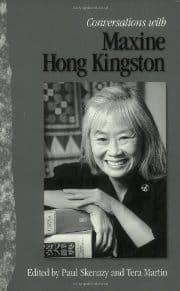
A dead body at the bottom of the well makes for a beautiful literary device. The first line of Orhan Pamuk’s novel My Name Is Red delivers it perfectly: “I am nothing but a corpse now, a body at the bottom of a well”. There’s something creepy about the idea of the well. Just think about the “It puts the lotion in the basket” scene from The Silence of the Lambs. In the first paragraph of Kingston’s essay, we learn about a suicide committed by uncommon means of jumping into the well. But this time it’s a real story. Who was this woman? Why did she do it? Read the essay.
- Mysterious death always gets attention. The macabre details are like daiquiris on a hot day – you savor them – you don’t let them spill.
- One sentence can speak volumes: “But the rare urge west had fixed upon our family, and so my aunt crossed boundaries not delineated in space”.
- It’s interesting to write about cultural differences – especially if you have the relevant experience. Something normal for us is unthinkable for others. Show this different world.
- The subject of sex is never boring.
37. Joan Didion – On Keeping A Notebook
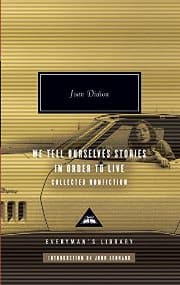
Slouching Towards Bethlehem is one of the most famous collections of essays of all time. In it, you will find a curious piece called On Keeping A Notebook. It’s not only a meditation about keeping a journal. It’s also Didion’s reconciliation with her past self. After reading it, you will seriously reconsider your life’s choices and look at your life from a wider perspective.
- When you write things down in your journal, be more specific – unless you want to write a deep essay about it years later.
- Use the beauty of the language to relate to the past: “I have already lost touch with a couple of people I used to be; one of them, a seventeen-year-old, presents little threat, although it would be of some interest to me to know again what it feels like to sit on a river levee drinking vodka-and-orange-juice and listening to Les Paul and Mary Ford and their echoes sing ‘How High the Moon’ on the car radio”.
- Drop some brand names if you want to feel posh.
38. Joan Didion – Goodbye To All That
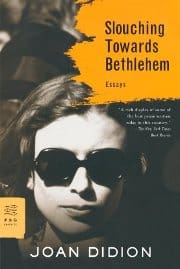
This one touched me because I also lived in New York City for a while. I don’t know why, but stories about life in NYC are so often full of charm and this eerie-melancholy-jazz feeling. They are powerful. They go like this: “There was a hard blizzard in NYC. As the sound of sirens faded, Tony descended into the dark world of hustlers and pimps.” That’s pulp literature but in the context of NYC, it always sounds cool. Anyway, this essay is amazing in too many ways. You just have to read it.
- Talk about New York City. They will read it.
- Talk about the human experience: “It did occur to me to call the desk and ask that the air conditioner be turned off, I never called, because I did not know how much to tip whoever might come—was anyone ever so young?”
- Look back at your life and reexamine it. Draw lessons from it.
39. George Orwell – Reflections on Gandhi
George Orwell could see things as they were. No exaggeration, no romanticism – just facts. He recognized totalitarianism and communism for what they were and shared his worries through books like 1984 and Animal Farm . He took the same sober approach when dealing with saints and sages. Today, we regard Gandhi as one of the greatest political leaders of the twentieth century – and rightfully so. But did you know that when asked about the Jews during World War II, Gandhi said that they should commit collective suicide and that it: “would have aroused the world and the people of Germany to Hitler’s violence.” He also recommended utter pacifism in 1942, during the Japanese invasion, even though he knew it would cost millions of lives. But overall he was a good guy. Read the essay and broaden your perspective on the Bapu of the Indian Nation.
- Share a philosophical thought that stops the reader for a moment: “No doubt alcohol, tobacco, and so forth are things that a saint must avoid, but sainthood is also a thing that human beings must avoid”.
- Be straightforward in your writing – no mannerisms, no attempts to create ‘style’, and no invocations of the numinous – unless you feel the mystical vibe.
40. George Orwell – Politics and the English Language
Let Mr. Orwell give you some writing tips. Written in 1946, this essay is still one of the most helpful documents on writing in English. Orwell was probably the first person who exposed the deliberate vagueness of political language. He was very serious about it and I admire his efforts to slay all unclear sentences (including ones written by distinguished professors). But it’s good to make it humorous too from time to time. My favorite examples of that would be the immortal Soft Language sketch by George Carlin or the “Romans Go Home” scene from Monty Python’s Life of Brian. Overall, it’s a great essay filled with examples from many written materials. It’s a must-read for any writer.
- Listen to the master: “This mixture of vagueness and sheer incompetence is the most marked characteristic of modern English prose.” Do something about it.
- This essay is all about writing better, so go to the source if you want the goodies.

Other Essays You May Find Interesting
The list that I’ve prepared is by no means complete. The literary world is full of exciting essays and you’ll never know which one is going to change your life. I’ve found reading essays very rewarding because sometimes, a single one means more than reading a whole book. It’s almost like wandering around and peeking into the minds of the greatest writers and thinkers that ever lived. To make this list more comprehensive, below I included more essays you may find interesting.
Oliver Sacks – On Libraries
One of the greatest contributors to the knowledge about the human mind, Oliver Sacks meditates on the value of libraries and his love of books.
Noam Chomsky – The Responsibility of Intellectuals
Chomsky did probably more than anyone else to define the role of the intelligentsia in the modern world . There is a war of ideas over there – good and bad – intellectuals are going to be those who ought to be fighting for the former.
Sam Harris – The Riddle of The Gun
Sam Harris, now a famous philosopher and neuroscientist, takes on the problem of gun control in the United States. His thoughts are clear of prejudice. After reading this, you’ll appreciate the value of logical discourse overheated, irrational debate that more often than not has real implications on policy.
Tim Ferriss – Some Practical Thoughts on Suicide
This piece was written as a blog post , but it’s worth your time. The author of the NYT bestseller The 4-Hour Workweek shares an emotional story about how he almost killed himself, and what can you do to save yourself or your friends from suicide.
Edward Said – Reflections on Exile
The life of Edward Said was a truly fascinating one. Born in Jerusalem, he lived between Palestine and Egypt and finally settled down in the United States, where he completed his most famous work – Orientalism. In this essay, he shares his thoughts about what it means to be in exile.
Richard Feynman – It’s as Simple as One, Two, Three…
Richard Feynman is one of the most interesting minds of the twentieth century. He was a brilliant physicist, but also an undeniably great communicator of science, an artist, and a traveler. By reading this essay, you can observe his thought process when he tries to figure out what affects our perception of time. It’s a truly fascinating read.
Rabindranath Tagore – The Religion of The Forest
I like to think about Tagore as my spiritual Friend. His poems are just marvelous. They are like some of the Persian verses that praise love, nature, and the unity of all things. By reading this short essay, you will learn a lot about Indian philosophy and its relation to its Western counterpart.
Richard Dawkins – Letter To His 10-Year-Old Daughter
Every father should be able to articulate his philosophy of life to his children. With this letter that’s similar to what you find in the Paris Review essays , the famed atheist and defender of reason, Richard Dawkins, does exactly that. It’s beautifully written and stresses the importance of looking at evidence when we’re trying to make sense of the world.
Albert Camus – The Minotaur (or, The Stop In Oran)
Each person requires a period of solitude – a period when one’s able to gather thoughts and make sense of life. There are many places where you may attempt to find quietude. Albert Camus tells about his favorite one.
Koty Neelis – 21 Incredible Life Lessons From Anthony Bourdain
I included it as the last one because it’s not really an essay, but I just had to put it somewhere. In this listicle, you’ll find the 21 most original thoughts of the high-profile cook, writer, and TV host, Anthony Bourdain. Some of them are shocking, others are funny, but they’re all worth checking out.
Lucius Annaeus Seneca – On the Shortness of Life
It’s similar to the Rubaiyat of Omar Khayyam because it praises life. Seneca shares some of his stoic philosophy and tells you not to waste your time on stupidities. Drink! – for once dead you shall never return.
Bertrand Russell – In Praise of Idleness
This old essay is a must-read for modern humans. We are so preoccupied with our work, our phones, and all the media input we drown in our business. Bertrand Russell tells you to chill out a bit – maybe it will do you some good.
James Baldwin – Stranger in the Village
It’s an essay on the author’s experiences as an African-American in a Swiss village, exploring race, identity, and alienation while highlighting the complexities of racial dynamics and the quest for belonging.
Bonus – More writing tips from two great books
The mission to improve my writing skills took me further than just going through the essays. I’ve come across some great books on writing too. I highly recommend you read them in their entirety. They’re written beautifully and contain lots of useful knowledge. Below you’ll find random (but useful) notes that I took from The Sense of Style and On Writing.
The Sense of Style – By Steven Pinker
- Style manuals are full of inconsistencies. Following their advice might not be the best idea. They might make your prose boring.
- Grammarians from all eras condemn students for not knowing grammar. But it just evolves. It cannot be rigid.
- “Nothing worth learning can be taught” – Oscar Wilde. It’s hard to learn to write from a manual – you have to read, write, and analyze.
- Good writing makes you imagine things and feel them for yourself – use word pictures.
- Don’t fear using voluptuous words.
- Phonesthetics – or how the words sound.
- Use parallel language (consistency of tense).
- Good writing finishes strong.
- Write to someone. Never write for no one in mind. Try to show people your view of the world.
- Don’t tell everything you are going to say in summary (signposting) – be logical, but be conversational.
- Don’t be pompous.
- Don’t use quotation marks where they don’t “belong”. Be confident about your style.
- Don’t hedge your claims (research first, and then tell it like it is).
- Avoid clichés and meta-concepts (concepts about concepts). Be more straightforward!
- Not prevention – but prevents or prevented – don’t use dead nouns.
- Be more vivid while using your mother tongue – don’t use passive where it’s not needed. Direct the reader’s gaze to something in the world.
- The curse of knowledge – the reader doesn’t know what you know – beware of that.
- Explain technical terms.
- Use examples when you explain a difficult term.
- If you ever say “I think I understand this” it probably means you don’t.
- It’s better to underestimate the lingo of your readers than to overestimate it.
- Functional fixedness – if we know some object (or idea) well, we tend to see it in terms of usage, not just as an object.
- Use concrete language instead of an abstraction.
- Show your work to people before you publish (get feedback!).
- Wait for a few days and then revise, revise, revise. Think about clarity and the sound of sentences. Then show it to someone. Then revise one more time. Then publish (if it’s to be serious work).
- Look at it from the perspective of other people.
- Omit needless words.
- Put the heaviest words at the end of the sentence.
- It’s good to use the passive, but only when appropriate.
- Check all text for cohesion. Make sure that the sentences flow gently.
- In expository work, go from general to more specific. But in journalism start from the big news and then give more details.
- Use the paragraph break to give the reader a moment to take a breath.
- Use the verb instead of a noun (make it more active) – not “cancellation”, but “canceled”. But after you introduce the action, you can refer to it with a noun.
- Avoid too many negations.
- If you write about why something is so, don’t spend too much time writing about why it is not.
On Writing Well – By William Zinsser
- Writing is a craft. You need to sit down every day and practice your craft.
- You should re-write and polish your prose a lot.
- Throw out all the clutter. Don’t keep it because you like it. Aim for readability.
- Look at the best examples of English literature . There’s hardly any needless garbage there.
- Use shorter expressions. Don’t add extra words that don’t bring any value to your work.
- Don’t use pompous language. Use simple language and say plainly what’s going on (“because” equals “because”).
- The media and politics are full of cluttered prose (because it helps them to cover up for their mistakes).
- You can’t add style to your work (and especially, don’t add fancy words to create an illusion of style). That will look fake. You need to develop a style.
- Write in the “I” mode. Write to a friend or just for yourself. Show your personality. There is a person behind the writing.
- Choose your words carefully. Use the dictionary to learn different shades of meaning.
- Remember about phonology. Make music with words .
- The lead is essential. Pull the reader in. Otherwise, your article is dead.
- You don’t have to make the final judgment on any topic. Just pick the right angle.
- Do your research. Not just obvious research, but a deep one.
- When it’s time to stop, stop. And finish strong. Think about the last sentence. Surprise them.
- Use quotations. Ask people. Get them talking.
- If you write about travel, it must be significant to the reader. Don’t bother with the obvious. Choose your words with special care. Avoid travel clichés at all costs. Don’t tell that the sand was white and there were rocks on the beach. Look for the right detail.
- If you want to learn how to write about art, travel, science, etc. – read the best examples available. Learn from the masters.
- Concentrate on one big idea (“Let’s not go peeing down both legs”).
- “The reader has to feel that the writer is feeling good.”
- One very helpful question: “What is the piece really about?” (Not just “What the piece is about?”)
Now immerse yourself in the world of essays
By reading the essays from the list above, you’ll become a better writer , a better reader, but also a better person. An essay is a special form of writing. It is the only literary form that I know of that is an absolute requirement for career or educational advancement. Nowadays, you can use an AI essay writer or an AI essay generator that will get the writing done for you, but if you have personal integrity and strong moral principles, avoid doing this at all costs. For me as a writer, the effect of these authors’ masterpieces is often deeply personal. You won’t be able to find the beautiful thoughts they contain in any other literary form. I hope you enjoy the read and that it will inspire you to do your writing. This list is only an attempt to share some of the best essays available online. Next up, you may want to check the list of magazines and websites that accept personal essays .

Digital marketing course: Join my full AI Marketing course, with over 6h and 30 minutes of video lessons and 5 bonuses and learn the skills necessary to thrive as a marketer in the digital era.

Rafal Reyzer
Hey there, welcome to my blog! I'm a full-time entrepreneur building two companies, a digital marketer, and a content creator with 10+ years of experience. I started RafalReyzer.com to provide you with great tools and strategies you can use to become a proficient digital marketer and achieve freedom through online creativity. My site is a one-stop shop for digital marketers, and content enthusiasts who want to be independent, earn more money, and create beautiful things. Explore my journey here , and don't miss out on my AI Marketing Mastery online course.
- lol Badge Feed
- win Badge Feed
- trending Badge Feed
Browse links
- © 2024 BuzzFeed, Inc
- Consent Preferences
- Accessibility Statement
17 Personal Essays That Will Change Your Life
Think essays are just something boring you write for class? These masterpieces will make you totally reconsider.

BuzzFeed News Reporter
1. "Goodbye To All That" – Joan Didion

The final piece in one of her two most beloved collections, Slouching Towards Bethlehem , this essay contains everything there is to love about Didion — her sharp eye, her unbelievable concision, her expression of emotions that are real and contradictory. It follows her arrival in New York and her departure eight years later, and in so doing discusses the city and youth — and the romantic lies that both are. She writes: "... I was in love with New York. I do not mean 'love' in any colloquial way, I mean that I was in love with the city, the way you love the first person who ever touches you and never love anyone quite that way again."
2. "Mr. Lytle, an Essay" – John Jeremiah Sullivan

Sullivan has become one of the most talked about magazine writers of the last few years. This piece, which you can read online at the Paris Review , and was collected in his highly recommended book, Pulphead , is one of his best. It discusses, with such grace, being mentored in his twenties by once-famous Southern Renaissance writer Andrew Lytle. It's a meditation on art and futility, the Old South, and the sheer strangeness that can be relationships between men.
3. "Once More to the Lake" – E.B. White

Recognized for his children's literature (including Stuart Little and Charlotte's Web ) and popularizing Strunk's The Elements of Style , White was also an accomplished essayist. "Once More to the Lake" follows White and his son to Maine, where they spend a week along the same lake White visited with his father as a boy. It is one of the most moving reflections upon fatherhood, summertime, America, and mortality ever crafted. You can find it in many anthologies and in The Collected Essays of E.B. White .
4. "Ticket to the Fair" – David Foster Wallace

Those who knock Wallace for his verbosity — or associate him merely with a liberal use of footnotes — haven't read one of his classic essays through to the end. This one, which you can read online at Harper's or in his collection A Supposedly Fun Thing I'll Never Do Again , follows him home to Illinois, specifically to the state fair there. Laugh-out-loud hilarious and almost ridiculous in its level of detail, it explores the author's fractured identity, the Midwest versus the East Coast, and the American experience at large.
5. "A Few Words About Breasts" – Nora Ephron

Published in Esquire in 1975, this is the best-known essay by the late, great screenwriter and essayist. While she renders the experience of being flat-chested in the '50s with incredible humor and pathos, it is the essay's ending — the shock of it — that makes this unforgettable.
6. "Self-Reliance" — Ralph Waldo Emerson

One of Emerson's most influential essays, you can read it online or in nearly every collection of his works. While his prose's formality may be a shock at first, what he says he says with great clarity and to the great empowerment of his reader. It is a declaration of the fact that true happiness, in oneself and all relationships, must spurn from self-love and honest expression: "I must be myself. I cannot break myself any longer for you, or you. If you can love me for what I am, we shall be the happier. If you cannot, I will still seek to deserve that you should."
7. "Here Is a Lesson in Creative Writing" – Kurt Vonnegut

Though it's collected in his great and final collection of essays, Man Without a Country , you can read an adaptation online at Lapham's Quarterly . While it's a must-read for aspiring creative writers, it's about more than writing — much, much more — despite its brevity and characteristic Vonnegut wit. It opens with the best slam of the semicolon ever.
8. "Notes of a Native Son" – James Baldwin

The titular essay from this collection — which honestly you should just read — is an ambitious and candid discussion of the passing of his father during a time of great racial turmoil. It opens: "On the twenty-ninth of July, in 1943, my father died. On the same day, a few hours later, his last child was born. Over a month before this, while all our energies were concentrated in waiting for these events, there had been, in Detroit, one of the bloodiest race riots of the century. A few hours after my father's funeral, while he lay in state in the undertaker's chapel, a race riot broke out in Harlem. In the morning of the third of August, we drove my father through the graveyard through a wilderness of smashed glass."
9. "The Invisible Made Visible" – David Rakoff

David Rakoff died a little over a year ago at the too-early age of 47. Just a few months prior, he read this essay about his cancer, his imminent death, and dancing, aloud as part of This American Life 's live show. As always with Rakoff's work, it was funny, painful, and revealed the author's intense love of the English language. Warning: When you watch this video , you will laugh audibly, several times, and you might cry.
10. "The Death of a Moth" – Virginia Woolf

The briefest — and perhaps densest — essay on this list, "The Death of the Moth," on its face, is about exactly that: Woolf notices a moth caught in her window and witnesses its death. Read it online and then read it again, and again.
11. "Total Eclipse " – Annie Dillard

This much-anthologized meditation follows Dillard and her husband as they drive to a mountaintop in Washington to witness a total eclipse — that rare event when the sun becomes entirely obscured, turning day briefly into night. Dillard's rendering of this experience showcases her enviable abilities to both observe and describe. It's collected in Teaching a Stone to Talk .
12. "Sliver of Sky" – Barry Lopez

Well-known nature writer Barry Lopez shocked many when he published this essay in January, in which he confessed being raped throughout his adolescence by his mother's sometime boyfriend. It is an affecting and horrifying portrait of what it is to be a victim of sexual abuse. Unfortunately you do have to be a Harper's subscriber to read it (for now).
13. "Shooting an Elephant" — George Orwell

Prior to penning 1984 and Animal Farm , Orwell was posted as a policeman in Burma, where he once had to shoot a rampaging elephant. The resultant essay, published in 1936, is a condemnation of imperialism — and his own selfish desire to not be implicated by it. Read it online or find it in the collection of the same title .
14. "Shipping Out" — David Foster Wallace

Yes, Wallace deserves two on this list. Also collected in A Supposedly Fun Thing I'll Never Do Again and originally published in Harper's , this is another travelogue turned existential rumination that shows unabashedly and hilariously the horrors of society (this time via a cruise ship) and really says more about the author himself.
15. "The Braindead Megaphone" – George Saunders

Saunders is more famous for his fiction (like many of the folks on this list) but that doesn't mean his essays are not fantastic. The first in the eponymous collection , "The Braindead Megaphone" takes on the current political and media climate in America that will make you shake your head in a I've-always-thought-that-but-never-really-put-it-that-way-myself way.
16. "We Do Abortions Here" — Sallie Tisdale

Tisdale was a nurse at an abortion clinic when she published this essay in 1987. She writes honestly and movingly about something she knows few want to think let alone read about. "There is a numbing sameness lurking in this job," she says, "the same questions, the same answers, even the same trembling tone in the voices. The worst is the sameness of human failure, of inadequacy in the face of each day’s dull demands." Read it for free online .
17. "The White Album" — Joan Didion

Of course Didion also gets two on this list. If you have not read this classic, do so now. It tracks our culture's — and the author's — transition out of the cataclysmic era that was the late '60s into something else much darker. It also contains an unforgettable image of Jim Morrison wearing black vinyl pants. Find it in the collection of the same name.
Share This Article

Choose Your Test
Sat / act prep online guides and tips, 3 great narrative essay examples + tips for writing.
General Education

A narrative essay is one of the most intimidating assignments you can be handed at any level of your education. Where you've previously written argumentative essays that make a point or analytic essays that dissect meaning, a narrative essay asks you to write what is effectively a story .
But unlike a simple work of creative fiction, your narrative essay must have a clear and concrete motif —a recurring theme or idea that you’ll explore throughout. Narrative essays are less rigid, more creative in expression, and therefore pretty different from most other essays you’ll be writing.
But not to fear—in this article, we’ll be covering what a narrative essay is, how to write a good one, and also analyzing some personal narrative essay examples to show you what a great one looks like.
What Is a Narrative Essay?
At first glance, a narrative essay might sound like you’re just writing a story. Like the stories you're used to reading, a narrative essay is generally (but not always) chronological, following a clear throughline from beginning to end. Even if the story jumps around in time, all the details will come back to one specific theme, demonstrated through your choice in motifs.
Unlike many creative stories, however, your narrative essay should be based in fact. That doesn’t mean that every detail needs to be pure and untainted by imagination, but rather that you shouldn’t wholly invent the events of your narrative essay. There’s nothing wrong with inventing a person’s words if you can’t remember them exactly, but you shouldn’t say they said something they weren’t even close to saying.
Another big difference between narrative essays and creative fiction—as well as other kinds of essays—is that narrative essays are based on motifs. A motif is a dominant idea or theme, one that you establish before writing the essay. As you’re crafting the narrative, it’ll feed back into your motif to create a comprehensive picture of whatever that motif is.
For example, say you want to write a narrative essay about how your first day in high school helped you establish your identity. You might discuss events like trying to figure out where to sit in the cafeteria, having to describe yourself in five words as an icebreaker in your math class, or being unsure what to do during your lunch break because it’s no longer acceptable to go outside and play during lunch. All of those ideas feed back into the central motif of establishing your identity.
The important thing to remember is that while a narrative essay is typically told chronologically and intended to read like a story, it is not purely for entertainment value. A narrative essay delivers its theme by deliberately weaving the motifs through the events, scenes, and details. While a narrative essay may be entertaining, its primary purpose is to tell a complete story based on a central meaning.
Unlike other essay forms, it is totally okay—even expected—to use first-person narration in narrative essays. If you’re writing a story about yourself, it’s natural to refer to yourself within the essay. It’s also okay to use other perspectives, such as third- or even second-person, but that should only be done if it better serves your motif. Generally speaking, your narrative essay should be in first-person perspective.
Though your motif choices may feel at times like you’re making a point the way you would in an argumentative essay, a narrative essay’s goal is to tell a story, not convince the reader of anything. Your reader should be able to tell what your motif is from reading, but you don’t have to change their mind about anything. If they don’t understand the point you are making, you should consider strengthening the delivery of the events and descriptions that support your motif.
Narrative essays also share some features with analytical essays, in which you derive meaning from a book, film, or other media. But narrative essays work differently—you’re not trying to draw meaning from an existing text, but rather using an event you’ve experienced to convey meaning. In an analytical essay, you examine narrative, whereas in a narrative essay you create narrative.
The structure of a narrative essay is also a bit different than other essays. You’ll generally be getting your point across chronologically as opposed to grouping together specific arguments in paragraphs or sections. To return to the example of an essay discussing your first day of high school and how it impacted the shaping of your identity, it would be weird to put the events out of order, even if not knowing what to do after lunch feels like a stronger idea than choosing where to sit. Instead of organizing to deliver your information based on maximum impact, you’ll be telling your story as it happened, using concrete details to reinforce your theme.

3 Great Narrative Essay Examples
One of the best ways to learn how to write a narrative essay is to look at a great narrative essay sample. Let’s take a look at some truly stellar narrative essay examples and dive into what exactly makes them work so well.
A Ticket to the Fair by David Foster Wallace
Today is Press Day at the Illinois State Fair in Springfield, and I’m supposed to be at the fairgrounds by 9:00 A.M. to get my credentials. I imagine credentials to be a small white card in the band of a fedora. I’ve never been considered press before. My real interest in credentials is getting into rides and shows for free. I’m fresh in from the East Coast, for an East Coast magazine. Why exactly they’re interested in the Illinois State Fair remains unclear to me. I suspect that every so often editors at East Coast magazines slap their foreheads and remember that about 90 percent of the United States lies between the coasts, and figure they’ll engage somebody to do pith-helmeted anthropological reporting on something rural and heartlandish. I think they asked me to do this because I grew up here, just a couple hours’ drive from downstate Springfield. I never did go to the state fair, though—I pretty much topped out at the county fair level. Actually, I haven’t been back to Illinois for a long time, and I can’t say I’ve missed it.
Throughout this essay, David Foster Wallace recounts his experience as press at the Illinois State Fair. But it’s clear from this opening that he’s not just reporting on the events exactly as they happened—though that’s also true— but rather making a point about how the East Coast, where he lives and works, thinks about the Midwest.
In his opening paragraph, Wallace states that outright: “Why exactly they’re interested in the Illinois State Fair remains unclear to me. I suspect that every so often editors at East Coast magazines slap their foreheads and remember that about 90 percent of the United States lies between the coasts, and figure they’ll engage somebody to do pith-helmeted anthropological reporting on something rural and heartlandish.”
Not every motif needs to be stated this clearly , but in an essay as long as Wallace’s, particularly since the audience for such a piece may feel similarly and forget that such a large portion of the country exists, it’s important to make that point clear.
But Wallace doesn’t just rest on introducing his motif and telling the events exactly as they occurred from there. It’s clear that he selects events that remind us of that idea of East Coast cynicism , such as when he realizes that the Help Me Grow tent is standing on top of fake grass that is killing the real grass beneath, when he realizes the hypocrisy of craving a corn dog when faced with a real, suffering pig, when he’s upset for his friend even though he’s not the one being sexually harassed, and when he witnesses another East Coast person doing something he wouldn’t dare to do.
Wallace is literally telling the audience exactly what happened, complete with dates and timestamps for when each event occurred. But he’s also choosing those events with a purpose—he doesn’t focus on details that don’t serve his motif. That’s why he discusses the experiences of people, how the smells are unappealing to him, and how all the people he meets, in cowboy hats, overalls, or “black spandex that looks like cheesecake leotards,” feel almost alien to him.
All of these details feed back into the throughline of East Coast thinking that Wallace introduces in the first paragraph. He also refers back to it in the essay’s final paragraph, stating:
At last, an overarching theory blooms inside my head: megalopolitan East Coasters’ summer treats and breaks and literally ‘getaways,’ flights-from—from crowds, noise, heat, dirt, the stress of too many sensory choices….The East Coast existential treat is escape from confines and stimuli—quiet, rustic vistas that hold still, turn inward, turn away. Not so in the rural Midwest. Here you’re pretty much away all the time….Something in a Midwesterner sort of actuates , deep down, at a public event….The real spectacle that draws us here is us.
Throughout this journey, Wallace has tried to demonstrate how the East Coast thinks about the Midwest, ultimately concluding that they are captivated by the Midwest’s less stimuli-filled life, but that the real reason they are interested in events like the Illinois State Fair is that they are, in some ways, a means of looking at the East Coast in a new, estranging way.
The reason this works so well is that Wallace has carefully chosen his examples, outlined his motif and themes in the first paragraph, and eventually circled back to the original motif with a clearer understanding of his original point.
When outlining your own narrative essay, try to do the same. Start with a theme, build upon it with examples, and return to it in the end with an even deeper understanding of the original issue. You don’t need this much space to explore a theme, either—as we’ll see in the next example, a strong narrative essay can also be very short.

Death of a Moth by Virginia Woolf
After a time, tired by his dancing apparently, he settled on the window ledge in the sun, and, the queer spectacle being at an end, I forgot about him. Then, looking up, my eye was caught by him. He was trying to resume his dancing, but seemed either so stiff or so awkward that he could only flutter to the bottom of the window-pane; and when he tried to fly across it he failed. Being intent on other matters I watched these futile attempts for a time without thinking, unconsciously waiting for him to resume his flight, as one waits for a machine, that has stopped momentarily, to start again without considering the reason of its failure. After perhaps a seventh attempt he slipped from the wooden ledge and fell, fluttering his wings, on to his back on the window sill. The helplessness of his attitude roused me. It flashed upon me that he was in difficulties; he could no longer raise himself; his legs struggled vainly. But, as I stretched out a pencil, meaning to help him to right himself, it came over me that the failure and awkwardness were the approach of death. I laid the pencil down again.
In this essay, Virginia Woolf explains her encounter with a dying moth. On surface level, this essay is just a recounting of an afternoon in which she watched a moth die—it’s even established in the title. But there’s more to it than that. Though Woolf does not begin her essay with as clear a motif as Wallace, it’s not hard to pick out the evidence she uses to support her point, which is that the experience of this moth is also the human experience.
In the title, Woolf tells us this essay is about death. But in the first paragraph, she seems to mostly be discussing life—the moth is “content with life,” people are working in the fields, and birds are flying. However, she mentions that it is mid-September and that the fields were being plowed. It’s autumn and it’s time for the harvest; the time of year in which many things die.
In this short essay, she chronicles the experience of watching a moth seemingly embody life, then die. Though this essay is literally about a moth, it’s also about a whole lot more than that. After all, moths aren’t the only things that die—Woolf is also reflecting on her own mortality, as well as the mortality of everything around her.
At its core, the essay discusses the push and pull of life and death, not in a way that’s necessarily sad, but in a way that is accepting of both. Woolf begins by setting up the transitional fall season, often associated with things coming to an end, and raises the ideas of pleasure, vitality, and pity.
At one point, Woolf tries to help the dying moth, but reconsiders, as it would interfere with the natural order of the world. The moth’s death is part of the natural order of the world, just like fall, just like her own eventual death.
All these themes are set up in the beginning and explored throughout the essay’s narrative. Though Woolf doesn’t directly state her theme, she reinforces it by choosing a small, isolated event—watching a moth die—and illustrating her point through details.
With this essay, we can see that you don’t need a big, weird, exciting event to discuss an important meaning. Woolf is able to explore complicated ideas in a short essay by being deliberate about what details she includes, just as you can be in your own essays.

Notes of a Native Son by James Baldwin
On the twenty-ninth of July, in 1943, my father died. On the same day, a few hours later, his last child was born. Over a month before this, while all our energies were concentrated in waiting for these events, there had been, in Detroit, one of the bloodiest race riots of the century. A few hours after my father’s funeral, while he lay in state in the undertaker’s chapel, a race riot broke out in Harlem. On the morning of the third of August, we drove my father to the graveyard through a wilderness of smashed plate glass.
Like Woolf, Baldwin does not lay out his themes in concrete terms—unlike Wallace, there’s no clear sentence that explains what he’ll be talking about. However, you can see the motifs quite clearly: death, fatherhood, struggle, and race.
Throughout the narrative essay, Baldwin discusses the circumstances of his father’s death, including his complicated relationship with his father. By introducing those motifs in the first paragraph, the reader understands that everything discussed in the essay will come back to those core ideas. When Baldwin talks about his experience with a white teacher taking an interest in him and his father’s resistance to that, he is also talking about race and his father’s death. When he talks about his father’s death, he is also talking about his views on race. When he talks about his encounters with segregation and racism, he is talking, in part, about his father.
Because his father was a hard, uncompromising man, Baldwin struggles to reconcile the knowledge that his father was right about many things with his desire to not let that hardness consume him, as well.
Baldwin doesn’t explicitly state any of this, but his writing so often touches on the same motifs that it becomes clear he wants us to think about all these ideas in conversation with one another.
At the end of the essay, Baldwin makes it more clear:
This fight begins, however, in the heart and it had now been laid to my charge to keep my own heart free of hatred and despair. This intimation made my heart heavy and, now that my father was irrecoverable, I wished that he had been beside me so that I could have searched his face for the answers which only the future would give me now.
Here, Baldwin ties together the themes and motifs into one clear statement: that he must continue to fight and recognize injustice, especially racial injustice, just as his father did. But unlike his father, he must do it beginning with himself—he must not let himself be closed off to the world as his father was. And yet, he still wishes he had his father for guidance, even as he establishes that he hopes to be a different man than his father.
In this essay, Baldwin loads the front of the essay with his motifs, and, through his narrative, weaves them together into a theme. In the end, he comes to a conclusion that connects all of those things together and leaves the reader with a lasting impression of completion—though the elements may have been initially disparate, in the end everything makes sense.
You can replicate this tactic of introducing seemingly unattached ideas and weaving them together in your own essays. By introducing those motifs, developing them throughout, and bringing them together in the end, you can demonstrate to your reader how all of them are related. However, it’s especially important to be sure that your motifs and clear and consistent throughout your essay so that the conclusion feels earned and consistent—if not, readers may feel mislead.
5 Key Tips for Writing Narrative Essays
Narrative essays can be a lot of fun to write since they’re so heavily based on creativity. But that can also feel intimidating—sometimes it’s easier to have strict guidelines than to have to make it all up yourself. Here are a few tips to keep your narrative essay feeling strong and fresh.
Develop Strong Motifs
Motifs are the foundation of a narrative essay . What are you trying to say? How can you say that using specific symbols or events? Those are your motifs.
In the same way that an argumentative essay’s body should support its thesis, the body of your narrative essay should include motifs that support your theme.
Try to avoid cliches, as these will feel tired to your readers. Instead of roses to symbolize love, try succulents. Instead of the ocean representing some vast, unknowable truth, try the depths of your brother’s bedroom. Keep your language and motifs fresh and your essay will be even stronger!
Use First-Person Perspective
In many essays, you’re expected to remove yourself so that your points stand on their own. Not so in a narrative essay—in this case, you want to make use of your own perspective.
Sometimes a different perspective can make your point even stronger. If you want someone to identify with your point of view, it may be tempting to choose a second-person perspective. However, be sure you really understand the function of second-person; it’s very easy to put a reader off if the narration isn’t expertly deployed.
If you want a little bit of distance, third-person perspective may be okay. But be careful—too much distance and your reader may feel like the narrative lacks truth.
That’s why first-person perspective is the standard. It keeps you, the writer, close to the narrative, reminding the reader that it really happened. And because you really know what happened and how, you’re free to inject your own opinion into the story without it detracting from your point, as it would in a different type of essay.
Stick to the Truth
Your essay should be true. However, this is a creative essay, and it’s okay to embellish a little. Rarely in life do we experience anything with a clear, concrete meaning the way somebody in a book might. If you flub the details a little, it’s okay—just don’t make them up entirely.
Also, nobody expects you to perfectly recall details that may have happened years ago. You may have to reconstruct dialog from your memory and your imagination. That’s okay, again, as long as you aren’t making it up entirely and assigning made-up statements to somebody.
Dialog is a powerful tool. A good conversation can add flavor and interest to a story, as we saw demonstrated in David Foster Wallace’s essay. As previously mentioned, it’s okay to flub it a little, especially because you’re likely writing about an experience you had without knowing that you’d be writing about it later.
However, don’t rely too much on it. Your narrative essay shouldn’t be told through people explaining things to one another; the motif comes through in the details. Dialog can be one of those details, but it shouldn’t be the only one.
Use Sensory Descriptions
Because a narrative essay is a story, you can use sensory details to make your writing more interesting. If you’re describing a particular experience, you can go into detail about things like taste, smell, and hearing in a way that you probably wouldn’t do in any other essay style.
These details can tie into your overall motifs and further your point. Woolf describes in great detail what she sees while watching the moth, giving us the sense that we, too, are watching the moth. In Wallace’s essay, he discusses the sights, sounds, and smells of the Illinois State Fair to help emphasize his point about its strangeness. And in Baldwin’s essay, he describes shattered glass as a “wilderness,” and uses the feelings of his body to describe his mental state.
All these descriptions anchor us not only in the story, but in the motifs and themes as well. One of the tools of a writer is making the reader feel as you felt, and sensory details help you achieve that.
What’s Next?
Looking to brush up on your essay-writing capabilities before the ACT? This guide to ACT English will walk you through some of the best strategies and practice questions to get you prepared!
Part of practicing for the ACT is ensuring your word choice and diction are on point. Check out this guide to some of the most common errors on the ACT English section to be sure that you're not making these common mistakes!
A solid understanding of English principles will help you make an effective point in a narrative essay, and you can get that understanding through taking a rigorous assortment of high school English classes !

Melissa Brinks graduated from the University of Washington in 2014 with a Bachelor's in English with a creative writing emphasis. She has spent several years tutoring K-12 students in many subjects, including in SAT prep, to help them prepare for their college education.
Student and Parent Forum
Our new student and parent forum, at ExpertHub.PrepScholar.com , allow you to interact with your peers and the PrepScholar staff. See how other students and parents are navigating high school, college, and the college admissions process. Ask questions; get answers.

Ask a Question Below
Have any questions about this article or other topics? Ask below and we'll reply!
Improve With Our Famous Guides
- For All Students
The 5 Strategies You Must Be Using to Improve 160+ SAT Points
How to Get a Perfect 1600, by a Perfect Scorer
Series: How to Get 800 on Each SAT Section:
Score 800 on SAT Math
Score 800 on SAT Reading
Score 800 on SAT Writing
Series: How to Get to 600 on Each SAT Section:
Score 600 on SAT Math
Score 600 on SAT Reading
Score 600 on SAT Writing
Free Complete Official SAT Practice Tests
What SAT Target Score Should You Be Aiming For?
15 Strategies to Improve Your SAT Essay
The 5 Strategies You Must Be Using to Improve 4+ ACT Points
How to Get a Perfect 36 ACT, by a Perfect Scorer
Series: How to Get 36 on Each ACT Section:
36 on ACT English
36 on ACT Math
36 on ACT Reading
36 on ACT Science
Series: How to Get to 24 on Each ACT Section:
24 on ACT English
24 on ACT Math
24 on ACT Reading
24 on ACT Science
What ACT target score should you be aiming for?
ACT Vocabulary You Must Know
ACT Writing: 15 Tips to Raise Your Essay Score
How to Get Into Harvard and the Ivy League
How to Get a Perfect 4.0 GPA
How to Write an Amazing College Essay
What Exactly Are Colleges Looking For?
Is the ACT easier than the SAT? A Comprehensive Guide
Should you retake your SAT or ACT?
When should you take the SAT or ACT?
Stay Informed
Get the latest articles and test prep tips!
Looking for Graduate School Test Prep?
Check out our top-rated graduate blogs here:
GRE Online Prep Blog
GMAT Online Prep Blog
TOEFL Online Prep Blog
Holly R. "I am absolutely overjoyed and cannot thank you enough for helping me!”
Subscribe to our newsletter
100 short memoir examples - narrative personal essays, scars by david owen, these precious days by ann patchett, the same river twice by david quammen, 50 more great articles about life, after life by joan didion, now we are five by david sedaris, feet in smoke by john jeremiah sullivan, when things go missing by kathryn schulz, 25 more great articles about death.

Love and Relationships
True love by haruki murakami, dating online by emily witt, no labels, no drama by jordana narin, the worst friend date i ever had by samantha irby, 50 more great articles about love and relationships, my first time, twice by ariel levy, tragedy averted. minimal gagging. by lidia yuknavitch, a girl's guide to sexual purity by carmen maria machado, deeply, truly (but not physically) in love by lauren slater, 50 more great articles about sex, peculiar benefits by roxane gay, thanksgiving in mongolia by ariel levy, long day's journey by elizabeth gilbert, trapped by aron ralston, the kingdom of the lotus by patrick symmes, 50 more great articles about travel, ultimate glory by dave gessner, skating home backward by bill vaughn, off diamond head by william finnegan, tennis, trigonometry, tornadoes by david foster wallace, 50 more great articles about sport.
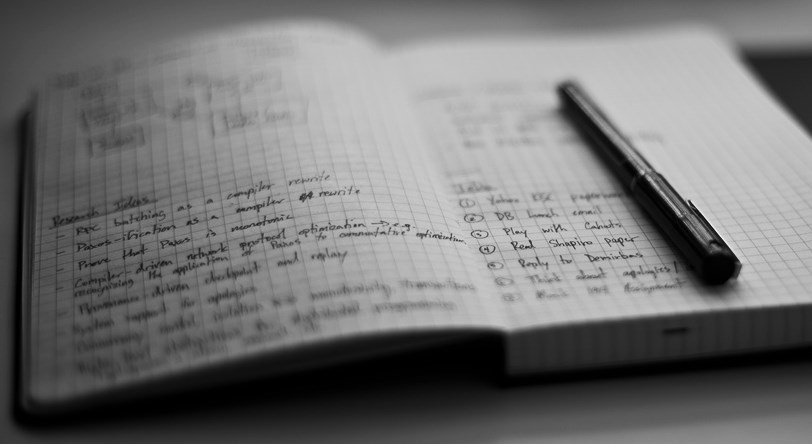
Notes of a Native Son by James Baldwin
How to slowly kill yourself and others in america by kiese laymon, the price of black ambition by roxane gay, 25 more great essays about race, the comfort zone by jonathan franzen, on being an only child by geoff dyer, a raccoon of my own by lauren slater, my dad tried to kill me with an alligator by harrison scott key, difficult girl by lena dunham, seventeen by steve edwards, age appropriate by jen doll, richard by allie brosh, 50 more great articles about growing up, lost in the meritocracy by walter kirn, dumb kids' class by mark bowden, fragments from an education by christopher hitchens, 20 more great articles about education, having children, joy by zadie smith, channel b by megan stielstra, a birth story by meaghan o'connell, i was pregnant, and then i wasn't by laura turner, 10 more great articles about having children.

Patient by Rachel Riederer
The empathy exams by leslie jamison, 50 more great articles about health, mental illness, adventures in depression by allie brosh, darkness visible by william styron, insane after coronavirus by patricia lockwood, 20 more great articles about mental health, explicit violence by lidia yuknavitch, heroin/e by cheryl strayed, me & my monkey by anonymous, me and my girls by david carr, my addicted son by david sheff, how i let drinking take over my life by william leith, 10 more great articles about addiction, autobiography of a body by lucy grealy, a few words about breasts by nora ephron, a thin line between mother and daughter by jennifer egan, the broken country by molly mccully, the trash heap has spoken by carmen maria machado, saying goodbye to my chest by naomi gordon-loebl, the onset by my ngoc to, 20 more great articles about body image, see also..., 150 great articles and essays.
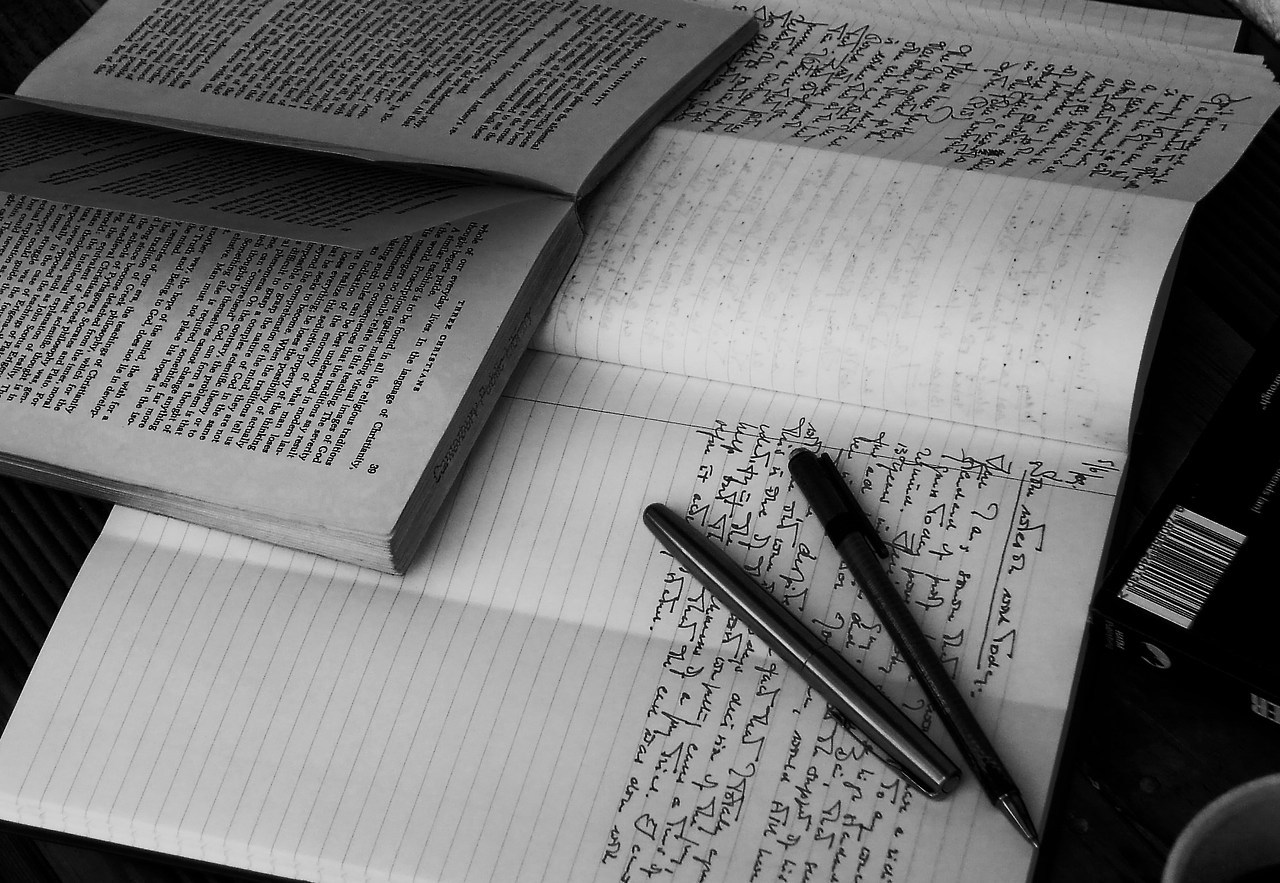
The Unspeakable Things Between Our Bellies by Lidia Yuknavitch
Woven by lidia yuknavitch, girl by alexander chee, pause by mary ruefle, lost cat by mary gaitskill, three by david sedaris, my life as an undocumented immigrant by jose antonio vargas, been down so long it looks like debt to me by m.h. miller, lucky girl by bridget potter, goodbye to all that by joan didion, my misspent youth by meghan daum, lost and found by colson whitehead, night-shifting for the hip fleet by mark jacobson, 25 more great articles about new york, the muse of coyote ugly saloon by elizabeth gilbert, quitting the paint factory by mark slouka, the loading dock manifesto by john hyduk, 40 more great articles about work, the real heroes are dead by james b. stewart, remains of the day by mary lee hannell, 10 more great articles about 9/11.

Book-Length Memoirs
Slouching towards bethlehem by joan didion, me talk pretty one day by david sedaris, just kids by patti smith, the chronology of water by lidia yuknavitch, a heartbreaking work of staggering genius by dave eggers, the glass castle by jeannette walls, brain on fire by susannah cahalan, irritable hearts by mac mcclelland, hunger by roxane gay, a sliver of light by shane bauer, joshua fattal and sarah shourd, 100 more great nonfiction books.
About The Electric Typewriter We search the net to bring you the best nonfiction, articles, essays and journalism
- Craft and Criticism
- Fiction and Poetry
- News and Culture
- Lit Hub Radio
- Reading Lists

- Literary Criticism
- Craft and Advice
- In Conversation
- On Translation
- Short Story
- From the Novel
- Bookstores and Libraries
- Film and TV
- Art and Photography
- Freeman’s
- The Virtual Book Channel
- Behind the Mic
- Beyond the Page
- The Cosmic Library
- The Critic and Her Publics
- Emergence Magazine
- Fiction/Non/Fiction
- First Draft: A Dialogue on Writing
- Future Fables
- The History of Literature
- I’m a Writer But
- Just the Right Book
- Lit Century
- The Literary Life with Mitchell Kaplan
- New Books Network
- Tor Presents: Voyage Into Genre
- Windham-Campbell Prizes Podcast
- Write-minded
- The Best of the Decade
- Best Reviewed Books
- BookMarks Daily Giveaway
- The Daily Thrill
- CrimeReads Daily Giveaway

The 10 Best Essay Collections of the Decade
Ever tried. ever failed. no matter..
Friends, it’s true: the end of the decade approaches. It’s been a difficult, anxiety-provoking, morally compromised decade, but at least it’s been populated by some damn fine literature. We’ll take our silver linings where we can.
So, as is our hallowed duty as a literary and culture website—though with full awareness of the potentially fruitless and endlessly contestable nature of the task—in the coming weeks, we’ll be taking a look at the best and most important (these being not always the same) books of the decade that was. We will do this, of course, by means of a variety of lists. We began with the best debut novels , the best short story collections , the best poetry collections , and the best memoirs of the decade , and we have now reached the fifth list in our series: the best essay collections published in English between 2010 and 2019.
The following books were chosen after much debate (and several rounds of voting) by the Literary Hub staff. Tears were spilled, feelings were hurt, books were re-read. And as you’ll shortly see, we had a hard time choosing just ten—so we’ve also included a list of dissenting opinions, and an even longer list of also-rans. As ever, free to add any of your own favorites that we’ve missed in the comments below.
The Top Ten
Oliver sacks, the mind’s eye (2010).
Toward the end of his life, maybe suspecting or sensing that it was coming to a close, Dr. Oliver Sacks tended to focus his efforts on sweeping intellectual projects like On the Move (a memoir), The River of Consciousness (a hybrid intellectual history), and Hallucinations (a book-length meditation on, what else, hallucinations). But in 2010, he gave us one more classic in the style that first made him famous, a form he revolutionized and brought into the contemporary literary canon: the medical case study as essay. In The Mind’s Eye , Sacks focuses on vision, expanding the notion to embrace not only how we see the world, but also how we map that world onto our brains when our eyes are closed and we’re communing with the deeper recesses of consciousness. Relaying histories of patients and public figures, as well as his own history of ocular cancer (the condition that would eventually spread and contribute to his death), Sacks uses vision as a lens through which to see all of what makes us human, what binds us together, and what keeps us painfully apart. The essays that make up this collection are quintessential Sacks: sensitive, searching, with an expertise that conveys scientific information and experimentation in terms we can not only comprehend, but which also expand how we see life carrying on around us. The case studies of “Stereo Sue,” of the concert pianist Lillian Kalir, and of Howard, the mystery novelist who can no longer read, are highlights of the collection, but each essay is a kind of gem, mined and polished by one of the great storytellers of our era. –Dwyer Murphy, CrimeReads Managing Editor
John Jeremiah Sullivan, Pulphead (2011)
The American essay was having a moment at the beginning of the decade, and Pulphead was smack in the middle. Without any hard data, I can tell you that this collection of John Jeremiah Sullivan’s magazine features—published primarily in GQ , but also in The Paris Review , and Harper’s —was the only full book of essays most of my literary friends had read since Slouching Towards Bethlehem , and probably one of the only full books of essays they had even heard of.
Well, we all picked a good one. Every essay in Pulphead is brilliant and entertaining, and illuminates some small corner of the American experience—even if it’s just one house, with Sullivan and an aging writer inside (“Mr. Lytle” is in fact a standout in a collection with no filler; fittingly, it won a National Magazine Award and a Pushcart Prize). But what are they about? Oh, Axl Rose, Christian Rock festivals, living around the filming of One Tree Hill , the Tea Party movement, Michael Jackson, Bunny Wailer, the influence of animals, and by god, the Miz (of Real World/Road Rules Challenge fame).
But as Dan Kois has pointed out , what connects these essays, apart from their general tone and excellence, is “their author’s essential curiosity about the world, his eye for the perfect detail, and his great good humor in revealing both his subjects’ and his own foibles.” They are also extremely well written, drawing much from fictional techniques and sentence craft, their literary pleasures so acute and remarkable that James Wood began his review of the collection in The New Yorker with a quiz: “Are the following sentences the beginnings of essays or of short stories?” (It was not a hard quiz, considering the context.)
It’s hard not to feel, reading this collection, like someone reached into your brain, took out the half-baked stuff you talk about with your friends, researched it, lived it, and represented it to you smarter and better and more thoroughly than you ever could. So read it in awe if you must, but read it. –Emily Temple, Senior Editor
Aleksandar Hemon, The Book of My Lives (2013)
Such is the sentence-level virtuosity of Aleksandar Hemon—the Bosnian-American writer, essayist, and critic—that throughout his career he has frequently been compared to the granddaddy of borrowed language prose stylists: Vladimir Nabokov. While it is, of course, objectively remarkable that anyone could write so beautifully in a language they learned in their twenties, what I admire most about Hemon’s work is the way in which he infuses every essay and story and novel with both a deep humanity and a controlled (but never subdued) fury. He can also be damn funny. Hemon grew up in Sarajevo and left in 1992 to study in Chicago, where he almost immediately found himself stranded, forced to watch from afar as his beloved home city was subjected to a relentless four-year bombardment, the longest siege of a capital in the history of modern warfare. This extraordinary memoir-in-essays is many things: it’s a love letter to both the family that raised him and the family he built in exile; it’s a rich, joyous, and complex portrait of a place the 90s made synonymous with war and devastation; and it’s an elegy for the wrenching loss of precious things. There’s an essay about coming of age in Sarajevo and another about why he can’t bring himself to leave Chicago. There are stories about relationships forged and maintained on the soccer pitch or over the chessboard, and stories about neighbors and mentors turned monstrous by ethnic prejudice. As a chorus they sing with insight, wry humor, and unimaginable sorrow. I am not exaggerating when I say that the collection’s devastating final piece, “The Aquarium”—which details his infant daughter’s brain tumor and the agonizing months which led up to her death—remains the most painful essay I have ever read. –Dan Sheehan, Book Marks Editor
Robin Wall Kimmerer, Braiding Sweetgrass (2013)
Of every essay in my relentlessly earmarked copy of Braiding Sweetgrass , Dr. Robin Wall Kimmerer’s gorgeously rendered argument for why and how we should keep going, there’s one that especially hits home: her account of professor-turned-forester Franz Dolp. When Dolp, several decades ago, revisited the farm that he had once shared with his ex-wife, he found a scene of destruction: The farm’s new owners had razed the land where he had tried to build a life. “I sat among the stumps and the swirling red dust and I cried,” he wrote in his journal.
So many in my generation (and younger) feel this kind of helplessness–and considerable rage–at finding ourselves newly adult in a world where those in power seem determined to abandon or destroy everything that human bodies have always needed to survive: air, water, land. Asking any single book to speak to this helplessness feels unfair, somehow; yet, Braiding Sweetgrass does, by weaving descriptions of indigenous tradition with the environmental sciences in order to show what survival has looked like over the course of many millennia. Kimmerer’s essays describe her personal experience as a Potawotami woman, plant ecologist, and teacher alongside stories of the many ways that humans have lived in relationship to other species. Whether describing Dolp’s work–he left the stumps for a life of forest restoration on the Oregon coast–or the work of others in maple sugar harvesting, creating black ash baskets, or planting a Three Sisters garden of corn, beans, and squash, she brings hope. “In ripe ears and swelling fruit, they counsel us that all gifts are multiplied in relationship,” she writes of the Three Sisters, which all sustain one another as they grow. “This is how the world keeps going.” –Corinne Segal, Senior Editor
Hilton Als, White Girls (2013)
In a world where we are so often reduced to one essential self, Hilton Als’ breathtaking book of critical essays, White Girls , which meditates on the ways he and other subjects read, project and absorb parts of white femininity, is a radically liberating book. It’s one of the only works of critical thinking that doesn’t ask the reader, its author or anyone he writes about to stoop before the doorframe of complete legibility before entering. Something he also permitted the subjects and readers of his first book, the glorious book-length essay, The Women , a series of riffs and psychological portraits of Dorothy Dean, Owen Dodson, and the author’s own mother, among others. One of the shifts of that book, uncommon at the time, was how it acknowledges the way we inhabit bodies made up of variously gendered influences. To read White Girls now is to experience the utter freedom of this gift and to marvel at Als’ tremendous versatility and intelligence.
He is easily the most diversely talented American critic alive. He can write into genres like pop music and film where being part of an audience is a fantasy happening in the dark. He’s also wired enough to know how the art world builds reputations on the nod of rich white patrons, a significant collision in a time when Jean-Michel Basquiat is America’s most expensive modern artist. Als’ swerving and always moving grip on performance means he’s especially good on describing the effect of art which is volatile and unstable and built on the mingling of made-up concepts and the hard fact of their effect on behavior, such as race. Writing on Flannery O’Connor for instance he alone puts a finger on her “uneasy and unavoidable union between black and white, the sacred and the profane, the shit and the stars.” From Eminem to Richard Pryor, André Leon Talley to Michael Jackson, Als enters the life and work of numerous artists here who turn the fascinations of race and with whiteness into fury and song and describes the complexity of their beauty like his life depended upon it. There are also brief memoirs here that will stop your heart. This is an essential work to understanding American culture. –John Freeman, Executive Editor
Eula Biss, On Immunity (2014)
We move through the world as if we can protect ourselves from its myriad dangers, exercising what little agency we have in an effort to keep at bay those fears that gather at the edges of any given life: of loss, illness, disaster, death. It is these fears—amplified by the birth of her first child—that Eula Biss confronts in her essential 2014 essay collection, On Immunity . As any great essayist does, Biss moves outward in concentric circles from her own very private view of the world to reveal wider truths, discovering as she does a culture consumed by anxiety at the pervasive toxicity of contemporary life. As Biss interrogates this culture—of privilege, of whiteness—she interrogates herself, questioning the flimsy ways in which we arm ourselves with science or superstition against the impurities of daily existence.
Five years on from its publication, it is dismaying that On Immunity feels as urgent (and necessary) a defense of basic science as ever. Vaccination, we learn, is derived from vacca —for cow—after the 17th-century discovery that a small application of cowpox was often enough to inoculate against the scourge of smallpox, an etymological digression that belies modern conspiratorial fears of Big Pharma and its vaccination agenda. But Biss never scolds or belittles the fears of others, and in her generosity and openness pulls off a neat (and important) trick: insofar as we are of the very world we fear, she seems to be suggesting, we ourselves are impure, have always been so, permeable, vulnerable, yet so much stronger than we think. –Jonny Diamond, Editor-in-Chief
Rebecca Solnit, The Mother of All Questions (2016)
When Rebecca Solnit’s essay, “Men Explain Things to Me,” was published in 2008, it quickly became a cultural phenomenon unlike almost any other in recent memory, assigning language to a behavior that almost every woman has witnessed—mansplaining—and, in the course of identifying that behavior, spurring a movement, online and offline, to share the ways in which patriarchal arrogance has intersected all our lives. (It would also come to be the titular essay in her collection published in 2014.) The Mother of All Questions follows up on that work and takes it further in order to examine the nature of self-expression—who is afforded it and denied it, what institutions have been put in place to limit it, and what happens when it is employed by women. Solnit has a singular gift for describing and decoding the misogynistic dynamics that govern the world so universally that they can seem invisible and the gendered violence that is so common as to seem unremarkable; this naming is powerful, and it opens space for sharing the stories that shape our lives.
The Mother of All Questions, comprised of essays written between 2014 and 2016, in many ways armed us with some of the tools necessary to survive the gaslighting of the Trump years, in which many of us—and especially women—have continued to hear from those in power that the things we see and hear do not exist and never existed. Solnit also acknowledges that labels like “woman,” and other gendered labels, are identities that are fluid in reality; in reviewing the book for The New Yorker , Moira Donegan suggested that, “One useful working definition of a woman might be ‘someone who experiences misogyny.'” Whichever words we use, Solnit writes in the introduction to the book that “when words break through unspeakability, what was tolerated by a society sometimes becomes intolerable.” This storytelling work has always been vital; it continues to be vital, and in this book, it is brilliantly done. –Corinne Segal, Senior Editor
Valeria Luiselli, Tell Me How It Ends (2017)
The newly minted MacArthur fellow Valeria Luiselli’s four-part (but really six-part) essay Tell Me How It Ends: An Essay in Forty Questions was inspired by her time spent volunteering at the federal immigration court in New York City, working as an interpreter for undocumented, unaccompanied migrant children who crossed the U.S.-Mexico border. Written concurrently with her novel Lost Children Archive (a fictional exploration of the same topic), Luiselli’s essay offers a fascinating conceit, the fashioning of an argument from the questions on the government intake form given to these children to process their arrivals. (Aside from the fact that this essay is a heartbreaking masterpiece, this is such a good conceit—transforming a cold, reproducible administrative document into highly personal literature.) Luiselli interweaves a grounded discussion of the questionnaire with a narrative of the road trip Luiselli takes with her husband and family, across America, while they (both Mexican citizens) wait for their own Green Card applications to be processed. It is on this trip when Luiselli reflects on the thousands of migrant children mysteriously traveling across the border by themselves. But the real point of the essay is to actually delve into the real stories of some of these children, which are agonizing, as well as to gravely, clearly expose what literally happens, procedural, when they do arrive—from forms to courts, as they’re swallowed by a bureaucratic vortex. Amid all of this, Luiselli also takes on more, exploring the larger contextual relationship between the United States of America and Mexico (as well as other countries in Central America, more broadly) as it has evolved to our current, adverse moment. Tell Me How It Ends is so small, but it is so passionate and vigorous: it desperately accomplishes in its less-than-100-pages-of-prose what centuries and miles and endless records of federal bureaucracy have never been able, and have never cared, to do: reverse the dehumanization of Latin American immigrants that occurs once they set foot in this country. –Olivia Rutigliano, CrimeReads Editorial Fellow
Zadie Smith, Feel Free (2018)
In the essay “Meet Justin Bieber!” in Feel Free , Zadie Smith writes that her interest in Justin Bieber is not an interest in the interiority of the singer himself, but in “the idea of the love object”. This essay—in which Smith imagines a meeting between Bieber and the late philosopher Martin Buber (“Bieber and Buber are alternative spellings of the same German surname,” she explains in one of many winning footnotes. “Who am I to ignore these hints from the universe?”). Smith allows that this premise is a bit premise -y: “I know, I know.” Still, the resulting essay is a very funny, very smart, and un-tricky exploration of individuality and true “meeting,” with a dash of late capitalism thrown in for good measure. The melding of high and low culture is the bread and butter of pretty much every prestige publication on the internet these days (and certainly of the Twitter feeds of all “public intellectuals”), but the essays in Smith’s collection don’t feel familiar—perhaps because hers is, as we’ve long known, an uncommon skill. Though I believe Smith could probably write compellingly about anything, she chooses her subjects wisely. She writes with as much electricity about Brexit as the aforementioned Beliebers—and each essay is utterly engrossing. “She contains multitudes, but her point is we all do,” writes Hermione Hoby in her review of the collection in The New Republic . “At the same time, we are, in our endless difference, nobody but ourselves.” –Jessie Gaynor, Social Media Editor
Tressie McMillan Cottom, Thick: And Other Essays (2019)
Tressie McMillan Cottom is an academic who has transcended the ivory tower to become the sort of public intellectual who can easily appear on radio or television talk shows to discuss race, gender, and capitalism. Her collection of essays reflects this duality, blending scholarly work with memoir to create a collection on the black female experience in postmodern America that’s “intersectional analysis with a side of pop culture.” The essays range from an analysis of sexual violence, to populist politics, to social media, but in centering her own experiences throughout, the collection becomes something unlike other pieces of criticism of contemporary culture. In explaining the title, she reflects on what an editor had said about her work: “I was too readable to be academic, too deep to be popular, too country black to be literary, and too naïve to show the rigor of my thinking in the complexity of my prose. I had wanted to create something meaningful that sounded not only like me, but like all of me. It was too thick.” One of the most powerful essays in the book is “Dying to be Competent” which begins with her unpacking the idiocy of LinkedIn (and the myth of meritocracy) and ends with a description of her miscarriage, the mishandling of black woman’s pain, and a condemnation of healthcare bureaucracy. A finalist for the 2019 National Book Award for Nonfiction, Thick confirms McMillan Cottom as one of our most fearless public intellectuals and one of the most vital. –Emily Firetog, Deputy Editor
Dissenting Opinions
The following books were just barely nudged out of the top ten, but we (or at least one of us) couldn’t let them pass without comment.
Elif Batuman, The Possessed (2010)
In The Possessed Elif Batuman indulges her love of Russian literature and the result is hilarious and remarkable. Each essay of the collection chronicles some adventure or other that she had while in graduate school for Comparative Literature and each is more unpredictable than the next. There’s the time a “well-known 20th-centuryist” gave a graduate student the finger; and the time when Batuman ended up living in Samarkand, Uzbekistan, for a summer; and the time that she convinced herself Tolstoy was murdered and spent the length of the Tolstoy Conference in Yasnaya Polyana considering clues and motives. Rich in historic detail about Russian authors and literature and thoughtfully constructed, each essay is an amalgam of critical analysis, cultural criticism, and serious contemplation of big ideas like that of identity, intellectual legacy, and authorship. With wit and a serpentine-like shape to her narratives, Batuman adopts a form reminiscent of a Socratic discourse, setting up questions at the beginning of her essays and then following digressions that more or less entreat the reader to synthesize the answer for herself. The digressions are always amusing and arguably the backbone of the collection, relaying absurd anecdotes with foreign scholars or awkward, surreal encounters with Eastern European strangers. Central also to the collection are Batuman’s intellectual asides where she entertains a theory—like the “problem of the person”: the inability to ever wholly capture one’s character—that ultimately layer the book’s themes. “You are certainly my most entertaining student,” a professor said to Batuman. But she is also curious and enthusiastic and reflective and so knowledgeable that she might even convince you (she has me!) that you too love Russian literature as much as she does. –Eleni Theodoropoulos, Editorial Fellow
Roxane Gay, Bad Feminist (2014)
Roxane Gay’s now-classic essay collection is a book that will make you laugh, think, cry, and then wonder, how can cultural criticism be this fun? My favorite essays in the book include Gay’s musings on competitive Scrabble, her stranded-in-academia dispatches, and her joyous film and television criticism, but given the breadth of topics Roxane Gay can discuss in an entertaining manner, there’s something for everyone in this one. This book is accessible because feminism itself should be accessible – Roxane Gay is as likely to draw inspiration from YA novels, or middle-brow shows about friendship, as she is to introduce concepts from the academic world, and if there’s anyone I trust to bridge the gap between high culture, low culture, and pop culture, it’s the Goddess of Twitter. I used to host a book club dedicated to radical reads, and this was one of the first picks for the club; a week after the book club met, I spied a few of the attendees meeting in the café of the bookstore, and found out that they had bonded so much over discussing Bad Feminist that they couldn’t wait for the next meeting of the book club to keep discussing politics and intersectionality, and that, in a nutshell, is the power of Roxane. –Molly Odintz, CrimeReads Associate Editor
Rivka Galchen, Little Labors (2016)
Generally, I find stories about the trials and tribulations of child-having to be of limited appeal—useful, maybe, insofar as they offer validation that other people have also endured the bizarre realities of living with a tiny human, but otherwise liable to drift into the musings of parents thrilled at the simple fact of their own fecundity, as if they were the first ones to figure the process out (or not). But Little Labors is not simply an essay collection about motherhood, perhaps because Galchen initially “didn’t want to write about” her new baby—mostly, she writes, “because I had never been interested in babies, or mothers; in fact, those subjects had seemed perfectly not interesting to me.” Like many new mothers, though, Galchen soon discovered her baby—which she refers to sometimes as “the puma”—to be a preoccupying thought, demanding to be written about. Galchen’s interest isn’t just in her own progeny, but in babies in literature (“Literature has more dogs than babies, and also more abortions”), The Pillow Book , the eleventh-century collection of musings by Sei Shōnagon, and writers who are mothers. There are sections that made me laugh out loud, like when Galchen continually finds herself in an elevator with a neighbor who never fails to remark on the puma’s size. There are also deeper, darker musings, like the realization that the baby means “that it’s not permissible to die. There are days when this does not feel good.” It is a slim collection that I happened to read at the perfect time, and it remains one of my favorites of the decade. –Emily Firetog, Deputy Editor
Charlie Fox, This Young Monster (2017)
On social media as in his writing, British art critic Charlie Fox rejects lucidity for allusion and doesn’t quite answer the Twitter textbox’s persistent question: “What’s happening?” These days, it’s hard to tell. This Young Monster (2017), Fox’s first book,was published a few months after Donald Trump’s election, and at one point Fox takes a swipe at a man he judges “direct from a nightmare and just a repulsive fucking goon.” Fox doesn’t linger on politics, though, since most of the monsters he looks at “embody otherness and make it into art, ripping any conventional idea of beauty to shreds and replacing it with something weird and troubling of their own invention.”
If clichés are loathed because they conform to what philosopher Georges Bataille called “the common measure,” then monsters are rebellious non-sequiturs, comedic or horrific derailments from a classical ideal. Perverts in the most literal sense, monsters have gone astray from some “proper” course. The book’s nine chapters, which are about a specific monster or type of monster, are full of callbacks to familiar and lesser-known media. Fox cites visual art, film, songs, and books with the screwy buoyancy of a savant. Take one of his essays, “Spook House,” framed as a stage play with two principal characters, Klaus (“an intoxicated young skinhead vampire”) and Hermione (“a teen sorceress with green skin and jet-black hair” who looks more like The Wicked Witch than her namesake). The chorus is a troupe of trick-or-treaters. Using the filmmaker Cameron Jamie as a starting point, the rest is free association on gothic decadence and Detroit and L.A. as cities of the dead. All the while, Klaus quotes from Artforum , Dazed & Confused , and Time Out. It’s a technical feat that makes fictionalized dialogue a conveyor belt for cultural criticism.
In Fox’s imagination, David Bowie and the Hydra coexist alongside Peter Pan, Dennis Hopper, and the maenads. Fox’s book reaches for the monster’s mask, not really to peel it off but to feel and smell the rubber schnoz, to know how it’s made before making sure it’s still snugly set. With a stylistic blend of arthouse suavity and B-movie chic, This Young Monster considers how monsters in culture are made. Aren’t the scariest things made in post-production? Isn’t the creature just duplicity, like a looping choir or a dubbed scream? –Aaron Robertson, Assistant Editor
Elena Passarello, Animals Strike Curious Poses (2017)
Elena Passarello’s collection of essays Animals Strike Curious Poses picks out infamous animals and grants them the voice, narrative, and history they deserve. Not only is a collection like this relevant during the sixth extinction but it is an ambitious historical and anthropological undertaking, which Passarello has tackled with thorough research and a playful tone that rather than compromise her subject, complicates and humanizes it. Passarello’s intention is to investigate the role of animals across the span of human civilization and in doing so, to construct a timeline of humanity as told through people’s interactions with said animals. “Of all the images that make our world, animal images are particularly buried inside us,” Passarello writes in her first essay, to introduce us to the object of the book and also to the oldest of her chosen characters: Yuka, a 39,000-year-old mummified woolly mammoth discovered in the Siberian permafrost in 2010. It was an occasion so remarkable and so unfathomable given the span of human civilization that Passarello says of Yuka: “Since language is epically younger than both thought and experience, ‘woolly mammoth’ means, to a human brain, something more like time.” The essay ends with a character placing a hand on a cave drawing of a woolly mammoth, accompanied by a phrase which encapsulates the author’s vision for the book: “And he becomes the mammoth so he can envision the mammoth.” In Passarello’s hands the imagined boundaries between the animal, natural, and human world disintegrate and what emerges is a cohesive if baffling integrated history of life. With the accuracy and tenacity of a journalist and the spirit of a storyteller, Elena Passarello has assembled a modern bestiary worthy of contemplation and awe. –Eleni Theodoropoulos, Editorial Fellow
Esmé Weijun Wang, The Collected Schizophrenias (2019)
Esmé Weijun Wang’s collection of essays is a kaleidoscopic look at mental health and the lives affected by the schizophrenias. Each essay takes on a different aspect of the topic, but you’ll want to read them together for a holistic perspective. Esmé Weijun Wang generously begins The Collected Schizophrenias by acknowledging the stereotype, “Schizophrenia terrifies. It is the archetypal disorder of lunacy.” From there, she walks us through the technical language, breaks down the Diagnostic and Statistical Manual ( DSM-5 )’s clinical definition. And then she gets very personal, telling us about how she came to her own diagnosis and the way it’s touched her daily life (her relationships, her ideas about motherhood). Esmé Weijun Wang is uniquely situated to write about this topic. As a former lab researcher at Stanford, she turns a precise, analytical eye to her experience while simultaneously unfolding everything with great patience for her reader. Throughout, she brilliantly dissects the language around mental health. (On saying “a person living with bipolar disorder” instead of using “bipolar” as the sole subject: “…we are not our diseases. We are instead individuals with disorders and malfunctions. Our conditions lie over us like smallpox blankets; we are one thing and the illness is another.”) She pinpoints the ways she arms herself against anticipated reactions to the schizophrenias: high fashion, having attended an Ivy League institution. In a particularly piercing essay, she traces mental illness back through her family tree. She also places her story within more mainstream cultural contexts, calling on groundbreaking exposés about the dangerous of institutionalization and depictions of mental illness in television and film (like the infamous Slender Man case, in which two young girls stab their best friend because an invented Internet figure told them to). At once intimate and far-reaching, The Collected Schizophrenias is an informative and important (and let’s not forget artful) work. I’ve never read a collection quite so beautifully-written and laid-bare as this. –Katie Yee, Book Marks Assistant Editor
Ross Gay, The Book of Delights (2019)
When Ross Gay began writing what would become The Book of Delights, he envisioned it as a project of daily essays, each focused on a moment or point of delight in his day. This plan quickly disintegrated; on day four, he skipped his self-imposed assignment and decided to “in honor and love, delight in blowing it off.” (Clearly, “blowing it off” is a relative term here, as he still produced the book.) Ross Gay is a generous teacher of how to live, and this moment of reveling in self-compassion is one lesson among many in The Book of Delights , which wanders from moments of connection with strangers to a shade of “red I don’t think I actually have words for,” a text from a friend reading “I love you breadfruit,” and “the sun like a guiding hand on my back, saying everything is possible. Everything .”
Gay does not linger on any one subject for long, creating the sense that delight is a product not of extenuating circumstances, but of our attention; his attunement to the possibilities of a single day, and awareness of all the small moments that produce delight, are a model for life amid the warring factions of the attention economy. These small moments range from the physical–hugging a stranger, transplanting fig cuttings–to the spiritual and philosophical, giving the impression of sitting beside Gay in his garden as he thinks out loud in real time. It’s a privilege to listen. –Corinne Segal, Senior Editor
Honorable Mentions
A selection of other books that we seriously considered for both lists—just to be extra about it (and because decisions are hard).
Terry Castle, The Professor and Other Writings (2010) · Joyce Carol Oates, In Rough Country (2010) · Geoff Dyer, Otherwise Known as the Human Condition (2011) · Christopher Hitchens, Arguably (2011) · Roberto Bolaño, tr. Natasha Wimmer, Between Parentheses (2011) · Dubravka Ugresic, tr. David Williams, Karaoke Culture (2011) · Tom Bissell, Magic Hours (2012) · Kevin Young, The Grey Album (2012) · William H. Gass, Life Sentences: Literary Judgments and Accounts (2012) · Mary Ruefle, Madness, Rack, and Honey (2012) · Herta Müller, tr. Geoffrey Mulligan, Cristina and Her Double (2013) · Leslie Jamison, The Empathy Exams (2014) · Meghan Daum, The Unspeakable (2014) · Daphne Merkin, The Fame Lunches (2014) · Charles D’Ambrosio, Loitering (2015) · Wendy Walters, Multiply/Divide (2015) · Colm Tóibín, On Elizabeth Bishop (2015) · Renee Gladman, Calamities (2016) · Jesmyn Ward, ed. The Fire This Time (2016) · Lindy West, Shrill (2016) · Mary Oliver, Upstream (2016) · Emily Witt, Future Sex (2016) · Olivia Laing, The Lonely City (2016) · Mark Greif, Against Everything (2016) · Durga Chew-Bose, Too Much and Not the Mood (2017) · Sarah Gerard, Sunshine State (2017) · Jim Harrison, A Really Big Lunch (2017) · J.M. Coetzee, Late Essays: 2006-2017 (2017) · Melissa Febos, Abandon Me (2017) · Louise Glück, American Originality (2017) · Joan Didion, South and West (2017) · Tom McCarthy, Typewriters, Bombs, Jellyfish (2017) · Hanif Abdurraqib, They Can’t Kill Us Until they Kill Us (2017) · Ta-Nehisi Coates, We Were Eight Years in Power (2017) · Samantha Irby, We Are Never Meeting in Real Life (2017) · Alexander Chee, How to Write an Autobiographical Novel (2018) · Alice Bolin, Dead Girls (2018) · Marilynne Robinson, What Are We Doing Here? (2018) · Lorrie Moore, See What Can Be Done (2018) · Maggie O’Farrell, I Am I Am I Am (2018) · Ijeoma Oluo, So You Want to Talk About Race (2018) · Rachel Cusk, Coventry (2019) · Jia Tolentino, Trick Mirror (2019) · Emily Bernard, Black is the Body (2019) · Toni Morrison, The Source of Self-Regard (2019) · Margaret Renkl, Late Migrations (2019) · Rachel Munroe, Savage Appetites (2019) · Robert A. Caro, Working (2019) · Arundhati Roy, My Seditious Heart (2019).

Emily Temple
Previous article, next article.

- RSS - Posts
Literary Hub
Created by Grove Atlantic and Electric Literature
Sign Up For Our Newsletters
How to Pitch Lit Hub
Advertisers: Contact Us
Privacy Policy
Support Lit Hub - Become A Member

Become a Lit Hub Supporting Member : Because Books Matter
For the past decade, Literary Hub has brought you the best of the book world for free—no paywall. But our future relies on you. In return for a donation, you’ll get an ad-free reading experience , exclusive editors’ picks, book giveaways, and our coveted Joan Didion Lit Hub tote bag . Most importantly, you’ll keep independent book coverage alive and thriving on the internet.

Become a member for as low as $5/month
Looking to publish? Meet your dream editor, designer and marketer on Reedsy.
Find the perfect editor for your next book
1 million authors trust the professionals on Reedsy. Come meet them.
Blog • Perfecting your Craft
Last updated on Oct 31, 2022
10 Personal Narrative Examples to Inspire Your Writing
Personal narratives are short pieces of creative nonfiction that recount a story from someone’s own experiences. They can be a memoir, a thinkpiece, or even a polemic — so long as the piece is grounded in the writer's beliefs and experiences, it can be considered a personal narrative.
Despite the nonfiction element, there’s no single way to approach this topic, and you can be as creative as you would be writing fiction. To inspire your writing and reveal the sheer diversity of this type of essay, here are ten great examples personal narratives from recent years:
1. “Only Disconnect” by Gary Shteyngart

Personal narratives don’t have to be long to be effective, as this thousand-word gem from the NYT book review proves. Published in 2010, just as smartphones were becoming a ubiquitous part of modern life, this piece echoes many of our fears surrounding technology and how it often distances us from reality.
In this narrative, Shteyngart navigates Manhattan using his new iPhone—or more accurately, is led by his iPhone, completely oblivious to the world around him. He’s completely lost to the magical happenstance of the city as he “follow[s] the arrow taco-ward”. But once he leaves for the country, and abandons the convenience of a cell phone connection, the real world comes rushing back in and he remembers what he’s been missing out on.
The downfalls of technology is hardly a new topic, but Shteyngart’s story remains evergreen because of how our culture has only spiraled further down the rabbit hole of technology addiction in the intervening years.
What can you learn from this piece?
Just because a piece of writing is technically nonfiction, that doesn’t mean that the narrative needs to be literal. Shteyngart imagines a Manhattan that physically changes around him when he’s using his iPhone, becoming an almost unrecognizable world. From this, we can see how a certain amount of dramatization can increase the impact of your message—even if that wasn’t exactly the way something happened.

FREE COURSE
How to Craft a Killer Short Story
From pacing to character development, master the elements of short fiction.
2. “Why I Hate Mother's Day” by Anne Lamott
The author of the classic writing text Bird by Bird digs into her views on motherhood in this piece from Salon. At once a personal narrative and a cultural commentary, Lamott explores the harmful effects that Mother’s Day may have on society —how its blind reverence to the concept of motherhood erases women’s agency and freedom to be flawed human beings.
Lamott points out that not all mothers are good, not everyone has a living mother to celebrate, and some mothers have lost their children, so have no one to celebrate with them. More importantly, she notes how this Hallmark holiday erases all the people who helped raise a woman, a long chain of mothers and fathers, friends and found family, who enable her to become a mother. While it isn’t anchored to a single story or event (like many classic personal narratives), Lamott’s exploration of her opinions creates a story about a culture that puts mothers on an impossible pedestal.
In a personal narrative essay, lived experience can be almost as valid as peer-reviewed research—so long as you avoid making unfounded assumptions. While some might point out that this is merely an opinion piece, Lamott cannily starts the essay by grounding it in the personal, revealing how she did not raise her son to celebrate Mother’s Day. This detail, however small, invites the reader into her private life and frames this essay as a story about her —and not just an exercise in being contrary.
3. “The Crane Wife” by CJ Hauser
Days after breaking off her engagement with her fiance, CJ Hauser joins a scientific expedition on the Texas coast r esearching whooping cranes . In this new environment, she reflects on the toxic relationship she left and how she found herself in this situation. She pulls together many seemingly disparate threads, using the expedition and the Japanese myth of the crane wife as a metaphor for her struggles.
Hauser’s interactions with the other volunteer researchers expand the scope of the narrative from her own mind, reminding her of the compassion she lacked in her relationship. In her attempts to make herself smaller, less needy, to please her fiance, she lost sight of herself and almost signed up to live someone else’s life, but among the whooping cranes of Texas, she takes the first step in reconnecting with herself.
With short personal narratives, there isn’t as much room to develop characters as you might have in a memoir so the details you do provide need to be clear and specific. Each of the volunteer researchers on Hauser’s expedition are distinct and recognizable though Hauser is economical in her descriptions.
For example, Hauser describes one researcher as “an eighty-four-year-old bachelor from Minnesota. He could not do most of the physical activities required by the trip, but had been on ninety-five Earthwatch expeditions, including this one once before. Warren liked birds okay. What Warren really loved was cocktail hour.”
In a few sentences, we get a clear picture of Warren's fun-loving, gregarious personality and how he fits in with the rest of the group.

How to Develop Characters
In 10 days, learn to develop complex characters readers will love.
4. “The Trash Heap Has Spoken” by Carmen Maria Machado
The films and TV shows of the 80s and 90s—cultural touchstones that practically raised a generation—hardly ever featured larger women on screen. And if they did, it was either as a villain or a literal trash heap. Carmen Maria Machado grew up watching these cartoons, and the absence of fat women didn’t faze her. Not until puberty hit and she went from a skinny kid to a fuller-figured teen. Suddenly uncomfortable in her skin, she struggled to find any positive representation in her favorite media.
As she gets older and more comfortable in her own body, Machado finds inspiration in Marjory the Trash Heap from Fraggle Rock and Ursula, everyone’s favorite sea witch from The Little Mermaid —characters with endless power in the unapologetic ways they inhabit their bodies. As Machado considers her own body through the years, it’s these characters she returns to as she faces society’s unkind, dismissive attitudes towards fat women.
Stories shape the world, even if they’re fictional. Some writers strive for realism, reflecting the world back on itself in all its ugliness, but Carmen Maria Machado makes a different point. There is power in being imaginative and writing the world as it could be, imagining something bigger, better, and more beautiful. So, write the story you want to see, change the narrative, look at it sideways, and show your readers how the world could look.
5. “Am I Disabled?” by Joanne Limburg
The titular question frames the narrative of Joanne Limburg’s essay as she considers the implications of disclosing her autism. What to some might seem a mundane occurrence—ticking ‘yes’, ‘no’, or ‘prefer not to say’ on a bureaucratic form—elicits both philosophical and practical questions for Limburg about what it means to be disabled and how disability is viewed by the majority of society.
Is the labor of disclosing her autism worth the insensitive questions she has to answer? What definition are people seeking, exactly? Will anyone believe her if she says yes? As she dissects the question of what disability is, she explores the very real personal effects this has on her life and those of other disabled people.
Limburg’s essay is written in a style known as the hermit crab essay , when an author uses an existing document form to contain their story. You can format your writing as a recipe, a job application, a resume, an email, or a to-do list – the possibilities are as endless as your creativity. The format you choose is important, though. It should connect in some way to the story you’re telling and add something to the reader’s experience as well as your overall theme.

FREE RESOURCE
Literary Devices Cheatsheet
Master these 40+ devices to level up your writing skills.
6. “Living Like Weasels” by Annie Dillard

While out on a walk in the woods behind her house, Annie Dillard encounters a wild weasel. In the short moment when they make eye contact, Dillard takes an imaginary journey through the weasel’s mind and wonders if the weasel’s approach to life is better than her own.
The weasel, as Dillard sees it, is a wild creature with jaws so powerful that when it clamps on to something, it won’t let go, even into death. Necessity drives it to be like this, and humanity, obsessed with choice, might think this kind of life is limiting, but the writer believes otherwise. The weasel’s necessity is the ultimate freedom, as long as you can find the right sort, the kind that will have you holding on for dear life and refusing to let go.
Make yourself the National Geographic explorer of your backyard or neighborhood and see what you can learn about yourself from what you discover. Annie Dillard, queen of the natural personal essay, discovers a lot about herself and her beliefs when meeting a weasel.
What insight can you glean from a blade of grass, for example? Does it remind you that despite how similar people might be, we are all unique? Do the flights of migrating birds give you perspective on the changes in your own life? Nature is a potent and never-ending spring of inspiration if you only think to look.

Show, Don't Tell
Master the golden rule of writing in 10 five-minute lessons.
7. “Love In Our Seventies” by Ellery Akers
“ And sometimes, when I lift the gray hair at the back of your neck and kiss your shoulder, I think, This is it.”
In under 400 words, poet Ellery Akers captures the joy she has found in discovering romance as a 75-year-old . The language is romantic, but her imagery is far from saccharine as she describes their daily life and the various states in which they’ve seen each other: in their pajamas, after cataract surgeries, while meditating. In each singular moment, Akers sees something she loves, underscoring an oft-forgotten truth. Love is most potent in its smallest gestures.
Personal narrative isn’t a defined genre with rigid rules, so your essay doesn’t have to be an essay. It can be a poem, as Akers’ is. The limitations of this form can lead to greater creativity as you’re trying to find a short yet evocative way to tell a story. It allows you to focus deeply on the emotions behind an idea and create an intimate connection with your reader.
8. “What a Black Woman Wishes Her Adoptive White Parents Knew” by Mariama Lockington

Mariama Lockington was adopted by her white parents in the early 80s, long before it was “trendy” for white people to adopt black children. Starting with a family photograph, the writer explores her complex feelings about her upbringing , the many ways her parents ignored her race for their own comfort, and how she came to feel like an outsider in her own home. In describing her childhood snapshots, she takes the reader from infancy to adulthood as she navigates trying to live as a black woman in a white family.
Lockington takes us on a journey through her life through a series of vignettes. These small, important moments serve as a framing device, intertwining to create a larger narrative about race, family, and belonging.
With this framing device, it’s easy to imagine Lockington poring over a photo album, each picture conjuring a different memory and infusing her story with equal parts sadness, regret, and nostalgia. You can create a similar effect by separating your narrative into different songs to create an album or episodes in a TV show. A unique structure can add an extra layer to your narrative and enhance the overall story.
9. “Drinking Chai to Savannah” by Anjali Enjeti
On a trip to Savannah with her friends, Anjali Enjeti is reminded of a racist incident she experienced as a teenager . The memory is prompted by her discomfort of traveling in Georgia as a South Asian woman and her friends’ seeming obliviousness to how others view them. As she recalls the tense and traumatic encounter she had in line at a Wendy’s and the worry she experiences in Savannah, Enjeti reflects on her understanding of otherness and race in America.
Enjeti paints the scene in Wendy’s with a deft hand. Using descriptive language, she invokes the five senses to capture the stress and fear she felt when the men in line behind her were hurling racist sentiments.
She writes, “He moves closer. His shadow eclipses mine. His hot, tobacco-tinged breath seeps over the collar of my dress.” The strong, evocative language she uses brings the reader into the scene and has them experience the same anxiety she does, understanding why this incident deeply impacted her.
10. “Siri Tells A Joke” by Debra Gwartney
One day, Debra Gwartney asks Siri—her iPhone’s digital assistant—to tell her a joke. In reply, Siri recites a joke with a familiar setup about three men stuck on a desert island. When the punchline comes, Gwartney reacts not with laughter, but with a memory of her husband , who had died less than six months prior.
In a short period, Gwartney goes through a series of losses—first, her house and her husband’s writing archives to a wildfire, and only a month after, her husband. As she reflects on death and the grief of those left behind in the wake of it, she recounts the months leading up to her husband’s passing and the interminable stretch after as she tries to find a way to live without him even as she longs for him.
A joke about three men on a deserted island seems like an odd setup for an essay about grief. However, Gwartney uses it to great effect, coming back to it later in the story and giving it greater meaning. By the end of her piece, she recontextualizes the joke, the original punchline suddenly becoming deeply sad. In taking something seemingly unrelated and calling back to it later, the essay’s message about grief and love becomes even more powerful.
Continue reading
Recommended posts from the Reedsy Blog

How Many Sentences Are in a Paragraph?
From fiction to nonfiction works, the length of a paragraph varies depending on its purpose. Here's everything you need to know.

Narrative Structure: Definition, Examples, and Writing Tips
What's the difference between story structure and narrative structure? And how do you choose the right narrative structure for you novel?

What is the Proust Questionnaire? 22 Questions to Write Better Characters
Inspired by Marcel Proust, check out the questionnaire that will help your characters remember things past.

What is Pathos? Definition and Examples in Literature
Pathos is a literary device that uses language to evoke an emotional response, typically to connect readers with the characters in a story.

How to Start a Children’s Book: Coming Up with Your Big Idea
If you've ever dreamed of writing a children's book but aren't sure where to start, check out this post to learn more about how you can create the perfect story for kids.

How to Become a Travel Writer in 5 Steps: A Guide for Travel Bugs
If you want to get paid to share your adventures, learn how to become a travel writer with these five tips.
Join a community of over 1 million authors
Reedsy is more than just a blog. Become a member today to discover how we can help you publish a beautiful book.
Bring your stories to life
Our free writing app lets you set writing goals and track your progress, so you can finally write that book!

1 million authors trust the professionals on Reedsy. Come meet them.
Enter your email or get started with a social account:
- Share full article
Advertisement
Supported by
Mentor texts
Telling Short, Memorable Stories From Your Life: ‘My Secret Pepsi Plot’
An invitation to students to tell a meaningful story in a limited number of words, with an example from The Times’s Lives column to help.

By Katherine Schulten
Our new Mentor Text series spotlights writing from The Times that students can learn from and emulate.
This entry, like several others we are publishing, focuses on an essay from The Times’s long-running Lives column to consider skills prized in narrative writing. We are starting with this genre to help support students participating in our 2020 Personal Narrative Essay Contest .
Our Personal Narrative Essay Contest is inspired by The New York Times’s Lives column, which ran from 1996 to 2017 and featured “short, powerful stories about meaningful life experiences .”
The editor of the column once posted some advice on “How to Write a Lives Essay” to guide those who submitted to the column annually. Much of that advice applies to our contest as well.
For example, several points boil down to reminders to keep it simple, including tips like:
Don’t try to fit your whole life into one “Lives.”
Don’t try to tell the whole story.
Tell a small story — an evocative, particular moment.
Better to start from something very simple that you think is interesting (an incident, a person) and expand upon it, rather than a large idea that you then have to fit into a short essay. For example, start with “the day the Santa Claus in the mall asked me on a date” rather than “the state of affairs that is dating in an older age bracket.”
This advice is similar to advice often given to high school seniors writing college essays : You have only 650 words to show admissions officers something important, interesting or memorable about who you are and what matters to you. A list of awards you’ve won won’t do it, but an engaging story about making brownies with your stepbrother just might.
As you’ll see when you read the texts below, none of them try to tell the whole story of a life, but, instead, illuminate an important aspect of it through focus on one event or moment. Yet that one focus ripples out, and says so much more.
Before You Read
Use the sentence starter below to write for a few minutes about whatever comes to mind. You will return to this writing in the “Now Try This” section.
A moment I’ll never forget from my childhood is …
Mentor Text: ‘ My Secret Pepsi Plot ,’ a 2014 Essay From the Lives Column, by Boris Fishman
This essay describes a memory from when the writer was 10 years old and his family had just immigrated from the Soviet Union to Brooklyn. “In the Soviet Union, we were secretly wealthy, but we arrived in Brooklyn as paupers,” he writes.
Somehow, his family ends up with 24 Pepsi-Colas in their refrigerator. The story of what happens next is Mr. Fishman’s short, powerful story:
Around this time I learned that American supermarkets gave back 5 cents for every returned empty. (Some states, like Michigan, its very name like a granite monument, gave you 10 cents.) I decided I would return those cans and give the money to my parents. My secret — a surprise.
Read the essay, focusing on how Mr. Fishman anchors the whole story in this one goal he had at age 10 — to return the Pepsi cans and get money for them.
As you read, you might trace the structure of the story. What does each paragraph do? What does each add to the telling of this small story?
Then, consider these questions:
How do the first two paragraphs set the stage for the story and give some necessary background?
How does telling this story allow the writer to show readers a particular time and place through the eyes of a new immigrant?
How does he pull you into the action, minute by minute, in the three paragraphs that begin “On Saturday afternoon …”?
How is money a theme throughout, in both stated and implied ways? What other ideas recur?
What is the role of the last paragraph?
Now Try This: Find Your Own Short, Powerful Stories
Look back at the writing you did before reading the mentor text. What is strongest about it? Could it become a short essay like the one you just read? If so, what would you need to do to shape it?
What other small stories — or “evocative, particular moments” — from your life might make wonderful short essays?
In a 2010 lesson plan, “ Going Beyond Cliché: How to Write a Great College Essay ,” we suggest students first make a timeline of their lives, or of one period in their lives, brainstorming at least 20 events, big and small, that were significant to them for any reason.
You might try that, or you can brainstorm answers to this list of prompts — or both:
-A time I took a risk: -A time I learned something about myself: -A memory from childhood I think about often: -Something that happened to me that still makes me laugh: -Something very few people know about me: -Something I regret: -A time when I felt rejected: -Something I am really proud of: -Something that changed the way I think or look at the world: -How I am different from most people I know: -Some of my fears: -A time I felt truly satisfied: -A time I failed at something: -An object I own that tells a lot about me:
Once you’ve chosen a topic, you might try to free-write for 10 minutes or so, asking yourself as you go: What was most interesting or memorable about this? What images come to mind when you think about this topic? Do you picture a person, a scene, a place? Do you hear a conversation or a bit of music? Do you smell, taste or feel something?
Finally, if you are still stuck, we have a list of prompts from our site that can inspire narrative writing . Take a look and see if any of them spark ideas for you.
More Mentor Texts for Telling Short, Memorable Stories
While the entire Lives column is devoted to “short, powerful stories,” the pieces we chose below are especially student-friendly in terms of both their subject matter and the way the writers focus on “an evocative, particular moment.” Below each title, an excerpt from the piece.
“ How Ramen Got Me Through Adolescence ,” a 2014 Lives essay, by Veronique Greenwood
When I was in fifth grade, I developed an intense dislike of eating around other people. The cafeteria was a place of foul odors, gelatinous spills, horrific mixtures of chocolate pudding, fruit cocktail and ketchup consumed on dares, and I found myself fasting from breakfast, at about 6 in the morning, until 3:35, when I walked home through the woods from the bus stop. Each step up our hill, a narrow ridge in rural California, I fantasized about the big bowl of ramen I would make myself when I reached the top.
“ Charmed ," a 2015 Lives essay, by Laila Lalami
‘‘Wait,’’ I said. From my pocket I pulled out a brown suede pouch bearing the name of a little jeweler in Rabat, the kind of place you send your friends to and say, tell him I sent you. In the pouch was a necklace with a silver khamsa — a charm in the shape of an open palm.
“ Montana Soccer-Mom Moment ,” a 2010 essay from the Lives column, by Laura Munson
I live in northwest Montana, and I have a teenager, and my teenager plays sports. That means a lot of driving — over-the-Rocky-Mountains-and-back-in-one-day kind of driving. I think about Meriwether Lewis every time I cross the Continental Divide, usually with sleeping soccer players wearing headphones in the back of my Suburban. I want to say, “Can you imagine everything depending on your horse and your ability to dream of an ocean past the mountains?” But it isn’t worth the eye-rolling.
“ All the Single Ladies ," a 2014 essay from the Lives column, by Jen Doll
“Single ladies to the dance floor!” came the cry, a masculine voice urging us forward. Wedding guests parted, creating a narrow path for the train of unmarried women to parade through in their finery. But we single ladies no longer looked so fine as we had that morning. We were worn and tired, sweat beading down our necks, sand crunching unpleasantly in our shoes, which were wearing raw the backs of our heels. We should have been lying down in cool rooms elsewhere, but the wedding was not over. We were 28. We knew what was next.
“ Working the Reunion ,” a 2008 essay from the Lives column, by ZZ Packer
My residential college always hosted the 45th reunion, one of the most well attended, I suppose because you just might not be around for the 50th. To my eyes, these guys were the picture of old money. Although they may have mastered physics or appraised the sharp beauty of “King Lear” in school, at reunions they reminisced about football glories and practical jokes. I sometimes felt less like a Yale co-ed who happened to be black than a black waitress who happened to be bringing them an extra fork. But after their dinner we reunion workers would drink up all the leftover bottles of wine while cleaning the dining hall.
Related Questions for Any Short, Narrative Essay
What is the one small moment or event this piece focuses on? Why do you think the writer might have chosen it?
What do you learn about the writer and his or her world through this moment or event? How? What lines do this well? What is implied rather than stated?
How is the piece structured? What does each paragraph do? How does each contribute to the story?
Look closely at how the writer tells a complete story in a limited number of words. Where, in terms of time and place, does the story begin? Where does it end? How does the writer weave in necessary background even while keeping the action of the story moving forward?
What else do you notice or admire about this essay? What lessons might it have for your own writing?
Personal Narrative Examples: 10 Top Examples
These personal narrative examples show some of the best of what you can accomplish in this literary genre.
A personal narrative isn’t a recitation of facts. Rather, it is a nonfiction story told from a first-person point of view. It uses the tools of creative writing but is based on fact and personal experiences. Many people’s first time writing this sort of essay is for a college application. However, many writers also choose this sort of essay writing to hone their literary skills.
Reading the top personal narrative examples can help you get a better understanding of what works and why. You might also be interested in these 5 subjunctive mood examples from famous works of literature .
- 1. Me Talk Pretty One Day – David Sedaris
- 2. Mother Rage: Theory and Practice by Anne Lamott
- 3. Stalking a Rustically Hip Family on Instagram by Emily Flake
4. My Wife Is the Breadwinner (and I Still Haven’t Told My Father) by Mike Harvkey
- 5. Your Brain’s Response to Your Ex According to Neuroscience by Amy Paturel
6. Let’s Meet Again in Five Years by Karen B. Kaplan
7. goodbye to all that by joan didion.
- 8. Here Is a Lesson in Creative Writing by Kurt Vonnegut
9. The Death of the Moth by Virginia Woolf
10. shooting an elephant by george orwell, the final word on personal narrative examples, how do you write a personal narrative, what are some ideas for a personal narrative, 1. me talk pretty one day – david sedaris.

David Sedaris has entranced audiences with his personal narrative essays for decades. The subject matter of his essays includes everything from stories about growing up in Raleigh, North Carolina, exploring his heritage, his youthful rampant drug use and other experiences that many people would have a hard time disclosing so openly and humorously.
“Me Talk Pretty One Day” is both the title of one of his collections and one of the essays presented in it. In the essay, he relates his experience taking French language classes. In between recounting events, he discusses the insecurity that he felt being in a new place at the beginning of the learning curve for a new skill:
When called upon, I delivered an effortless list of things I detest: blood sausage, intestinal pâté, brain pudding. I’d learned these words the hard way. Having given it some thought, I then declared my love for IBM typewriters, the French word for “bruise,” and my electric floor waxer.
It was a shortlist, but still, I managed to mispronounce IBM and afford the wrong gender to both the floor waxer and the typewriter. Her reaction led me to believe that these mistakes were capital crimes in the country of France.
2. Mother Rage: Theory and Practice by Anne Lamott
Anne Lamott’s work runs the gamut from short stories, to essays, to novels, to books on writing. In “Mother Rage,” she recounts experiences of losing her temper at her son and saying awful things to him. Her word choice is often playful and ironic, but the issues she raises are deep and personal ones regarding our relationships with our children and our responsibilities to them.
So: I woke up one recent morning and lay in bed trying to remember if the night before I had actually threatened to have my son’s pets put to sleep, or whether I had only insinuated that I would no longer intercede to keep them alive when, due to his neglect, they began starving to death. I’m pretty sure I only threatened to not intercede.
3. Stalking a Rustically Hip Family on Instagram by Emily Flake
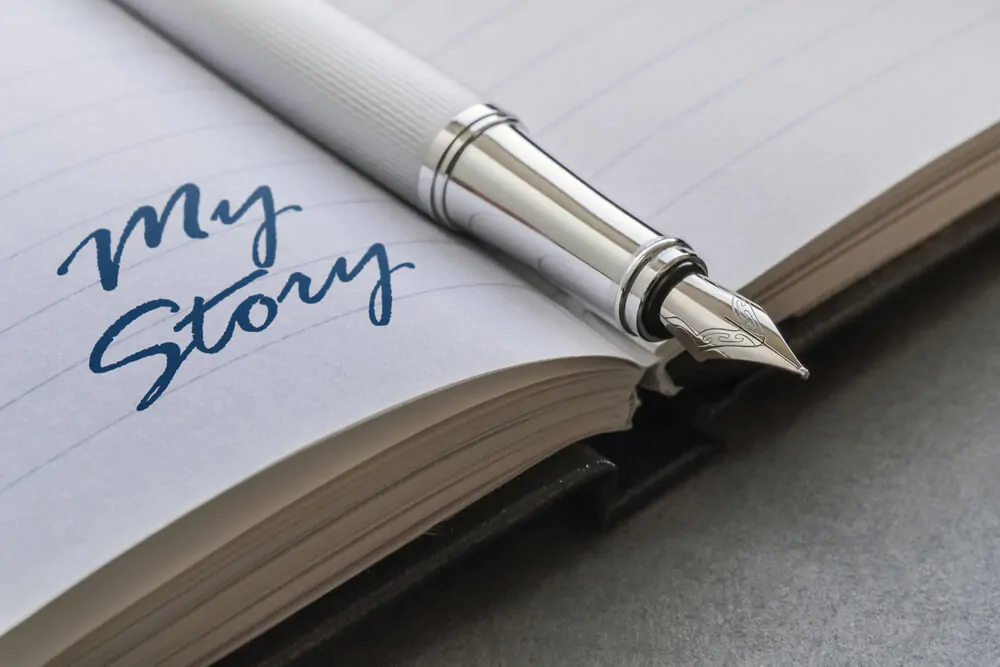
In this essay, Emily Flake muses on the parasocial relationship with have with the people we hate-follow on social media. She recounts her obsession with a particular family of influencers and how looking at them made her more aware of her own insecurities and feelings of inadequacy:
The woman in the photograph looks out at me with a face full of exhaustion and bliss. In her hands, she cradles the purplish, bloody bundle of a just-born child. It’s a beautiful, celebratory image of human existence, as raw and pure and joyful as anything seen through the orderly square of an Instagram post can be. I peer at it in the dark, and hiss-whisper, “How dare you.”
This essay is a great example of how life experiences can be parlayed into a discussion about a cultural shift or another phenomenon. Here, the author discusses his decision with his wife to move for her career while he stayed home and tried his hand at becoming a full-time freelance writer . In addition to the struggles with his new endeavor, he ponders our assumptions about masculinity and what it means to be a provider:
A couple of years back, I quit my job. When I first got this job, my father relaxed. After years of drifting, the boy he’d raised had finally accepted that, like most men, he needed a career so he could support his family. He was proud. And now I was leaving this job because I wanted to write full time and my wife had found a new job that could support us both. I was quitting, and we were moving, so she could become the breadwinner. I couldn’t tell my father this; I still haven’t.
5. Your Brain’s Response to Your Ex According to Neuroscience by Amy Paturel
Paturel buries her thesis statement under several paragraphs of narrative writing and sensory details. This is a personal narrative that functions as the framework for a reported article on the science of what happens in your brain when you are young and fall in love:
He was the first to make me dinner, teach me to surf in ice-cold waters, and unlock the seemingly impenetrable fortress of my body. Together, we formed our identities and defined what love meant. In the process, he ingrained himself into my psyche.
For nearly 20 years, New York Times readers have been able to see a range of personal narrative essay examples on the theme of love and relationships in the paper’s Modern Love column. In this essay, a woman recounts what happened when she and a guy who she’d been dating a few months decided that they were too young for commitment. Rather than making a mistake, they decided to meet again in five years and see if they were ready:
Howard agreed. We settled on meeting at the New York Public Library, near the uptown lion, at 4 p.m. on the first Sunday in April, five years from that spring. We wrote our pledge on a dollar bill, tore it in half, and gave each other the half we’d written on.
Joan Didion writes about her arrival in New York City and her departure eight years later. She talks about her relationship with the city and the ways that we romanticize our youthful experiences:
I was in love with New York. I do not mean ‘love’ in any colloquial way, I mean that I was in love with the city, the way you love the first person who ever touches you and never loves anyone quite that way again.
8. Here Is a Lesson in Creative Writing by Kurt Vonnegut
This short Vonnegut essay is one part writing lesson, one part marketing lesson, one part memoir of the life of a professional writer. You’ve probably seen it quoted before:
Practicing an art, no matter how well or badly, is a way to make your soul grow, for heaven’s sake. Sing in the shower. Dance to the radio. Tell stories. Write a poem to a friend, even a lousy poem. Do it as well as you possibly can. You will get an enormous reward. You will have created something.
During her life, Virginia Woolf struggled with poor mental health and the difficulty of balancing demands on her as a woman with her efforts to write. In this essay, she muses over a small moth in her living room in a way that connects it to her larger struggles:
Yet, because he was so small, and so simple a form of the energy that was rolling in at the open window and driving its way through so many narrow and intricate corridors in my own brain and in those of other human beings, there was something marvelous as well as pathetic about him.
George Orwell is remembered as a political novelist who often worked in allegory. We see an early example of him honing his writing skills in this essay about being forced to shoot a rampaging elephant while stationed in Burma. He links his personal experience to the problem on imperialism and his desire not to be a part of it:
In Moulmein, in Lower Burma, I was hated by large numbers of people — the only time in my life that I have been important enough for this to happen to me. I was a sub-divisional police officer of the town, and in an aimless, petty kind of way anti-European feeling was very bitter. No one had the guts to raise a riot, but if a European woman went through the bazaars alone somebody would probably spit betel juice over her dress. As a police officer, I was an obvious target and was baited whenever it seemed safe to do so.
A personal narrative can be a powerful tool for getting your ideas onto the page. When you begin with highly relatable life experiences, you can segue into any type of essay, from a short memoir to an argumentative essay . Read these and other personal narrative examples to learn more about the form and the best ways to approach it. You might also find our alliteration examples from culture and literature guide helpful.
FAQ About Personal Narrative Examples
The ideal personal narrative draws the reader in with relatable anecdotes and universal observations.
Think about topics that you would want to read about. You can focus on anything from high school from your first time driving as a 16-year-old, to how you met your best friend.

Bryan Collins is the owner of Become a Writer Today. He's an author from Ireland who helps writers build authority and earn a living from their creative work. He's also a former Forbes columnist and his work has appeared in publications like Lifehacker and Fast Company.
View all posts

- Scriptwriting
What is a Narrative Essay — Examples, Format & Techniques
I was in the Amazon jungle the first time I wrote a narrative essay, enlightened and enraptured by the influence of ayahuasca. That’s not true. I’ve never been to South America nor have I ever taken ayahuasca. The purpose of that opening is to show how to craft a narrative essay intro — hook, line, and sinker. Narrative essays rely on hooking the reader, and enticing them to read on. But what is a narrative essay? We’re going to break down everything you need to know about these essays — definition, examples, tips and tricks included. By the end, you’ll be ready to craft your own narrative essay for school or for publication.
What’s a Narrative Essay?
First, let’s define narrative essay.
Narrative essays share a lot of similarities with personal essays, but whereas the former can be fictional or non-fictional, the latter are strictly non-fictional. The goal of the narrative essay is to use established storytelling techniques, like theme , conflict , and irony , in a uniquely personal way.
The responsibility of the narrative essayist is to make the reader feel connected to their story, regardless of the topic. This next video explores how writers can use structural elements and techniques to better engage their readers.
Personal Narrative Essay Examples With Essay Pro
Narrative essays rely on tried and true structure components, including:
- First-person POV
- Personal inspiration
- Focus on a central theme
By keeping these major tenets in mind, you’ll be better prepared to recognize weaknesses and strengths in your own works.
NARRATIVE ESSAY DEFINITION
What is a narrative essay.
A narrative essay is a prose-written story that’s focused on the commentary of a central theme. Narrative essays are generally written in the first-person POV, and are usually about a topic that’s personal to the writer. Everything in these essays should take place in an established timeline, with a clear beginning, middle, and end.
Famous Narrative Essay Examples
- Ticker to the Fair by David Foster Wallace
- After Life by Joan Didion
- Here is a Lesson in Creative Writing by Kurt Vonnegut
Narrative Writing Explained
How to start a narrative essay.
When you go to sleep at night, what do you think of? Flying squirrels? Lost loved ones? That time you called your teacher ‘mom’? Whatever it is, that’s what you need to write about. There’s a reason those ideas and moments have stuck with you over time. Your job is to figure out why.
Once you realize what makes a moment important to you, it’s your job to make it important to the reader too. In this next video, Academy Award-nominated filmmaker J. Christian Jensen explains the power of the personal narrative.
Narrative Writing and the Personal Narrative Essay • Video by TEDx Talks
Anything and everything can be the topic of your essay. It could be as benign as a walk to school or as grandiose as a trip to the moon — so long as that narrative exists within reality. Give your thoughts and opinions on the matter too — don’t be afraid to say “this is what I think” so long as it’s supported by storytelling techniques. Remember, never limit yourself as a writer, just keep in mind that certain topics will be harder to make engaging than others.
Narrative Essay Outline
How to write a narrative essay.
First step, game plan. You’re going to want to map out the story from beginning to end, then mark major story beats in your document.
Like all stories, your narrative essay needs a clear beginning, middle, and end. Each section should generally conform to a specifically outlined structure. For reference, check out the outline below.

Narrative Essay Format • How to Write a Narrative Essay Step by Step
Make sure to reference back to this outline throughout the writing process to make sure you have all your major beats covered.
Purpose of narrative essay writing
Narrative essays give writers the ability to freely express themselves within the structure of a traditional story. Nearly all universities ask applicants to submit a narrative essay with their formal application. This is done for two reasons: they allow institutions to judge the linguistic and grammar capabilities of its applicants, as well as their raw creative side.
If you’re considering studying creative writing in an undergraduate or graduate program, then you’re going to write A LOT of narrative style essays. This process may seem indomitable; How am I supposed to write hundreds of pages about… me? But by the end, you’ll be a better writer and you’ll have a better understanding of yourself.
One thing that all successful essayists have in common is that they make radical, often defiant statements on the world at large. Think Ralph Waldo Emerson, Virginia Woolf, and Langston Hughes for example.
Being a professional essayist isn’t easy, and it’s near-impossible to be one who makes a lot of money. Many essayists work as professors, editors, and curriculum designers as well.
This next video features the late, award-winning essayist Brian Doyle. He explains all the things you need to hear when thinking about writing a story.
Narrative Essay Examples “Lecture” via Boston University
We can learn a lot from the way Doyle “opens” his stories. My favorite is how he begins with the statement, “I met the Dalai Lama once.” How can we not be interested in learning more?
This brings us all the way back to the beginning. Start with a hook, rattle off the line, then reel in the sinker. If you entice the reader, develop a personal plot, and finish with a resolute ending, you’ll have a lot of success in essay writing.
Up Next
Narrative essay topics.
We've curated a collection of narrative essay topics that will spark your creativity and bring your experiences to life. Dive into the rich tapestry of your memories, explore the unique threads of your life, and let your narrative unfold.
Up Next: Narrative Essay Topics →
Write and produce your scripts all in one place..
Write and collaborate on your scripts FREE . Create script breakdowns, sides, schedules, storyboards, call sheets and more.
- Pricing & Plans
- Product Updates
- Featured On
- StudioBinder Partners
- The Ultimate Guide to Call Sheets (with FREE Call Sheet Template)
- How to Break Down a Script (with FREE Script Breakdown Sheet)
- The Only Shot List Template You Need — with Free Download
- Managing Your Film Budget Cashflow & PO Log (Free Template)
- A Better Film Crew List Template Booking Sheet
- Best Storyboard Softwares (with free Storyboard Templates)
- Movie Magic Scheduling
- Gorilla Software
- Storyboard That
A visual medium requires visual methods. Master the art of visual storytelling with our FREE video series on directing and filmmaking techniques.
We’re in a golden age of TV writing and development. More and more people are flocking to the small screen to find daily entertainment. So how can you break put from the pack and get your idea onto the small screen? We’re here to help.
- Making It: From Pre-Production to Screen
- What is a Light Meter — Understanding the Photographer's Tool
- What is Metonymy — Definition, Examples & How to Use It
- What is a Short Story — The Art of Brevity in Literature
- What is an Action Hero — Best Examples & Defining Traits
- What is a Movie Spoiler — Types, Ethics & Rules Explained
- 1 Pinterest
Have a language expert improve your writing
Run a free plagiarism check in 10 minutes, generate accurate citations for free.
- Knowledge Base
- How to write a narrative essay | Example & tips
How to Write a Narrative Essay | Example & Tips
Published on July 24, 2020 by Jack Caulfield . Revised on July 23, 2023.
A narrative essay tells a story. In most cases, this is a story about a personal experience you had. This type of essay , along with the descriptive essay , allows you to get personal and creative, unlike most academic writing .
Instantly correct all language mistakes in your text
Upload your document to correct all your mistakes in minutes

Table of contents
What is a narrative essay for, choosing a topic, interactive example of a narrative essay, other interesting articles, frequently asked questions about narrative essays.
When assigned a narrative essay, you might find yourself wondering: Why does my teacher want to hear this story? Topics for narrative essays can range from the important to the trivial. Usually the point is not so much the story itself, but the way you tell it.
A narrative essay is a way of testing your ability to tell a story in a clear and interesting way. You’re expected to think about where your story begins and ends, and how to convey it with eye-catching language and a satisfying pace.
These skills are quite different from those needed for formal academic writing. For instance, in a narrative essay the use of the first person (“I”) is encouraged, as is the use of figurative language, dialogue, and suspense.
Here's why students love Scribbr's proofreading services
Discover proofreading & editing
Narrative essay assignments vary widely in the amount of direction you’re given about your topic. You may be assigned quite a specific topic or choice of topics to work with.
- Write a story about your first day of school.
- Write a story about your favorite holiday destination.
You may also be given prompts that leave you a much wider choice of topic.
- Write about an experience where you learned something about yourself.
- Write about an achievement you are proud of. What did you accomplish, and how?
In these cases, you might have to think harder to decide what story you want to tell. The best kind of story for a narrative essay is one you can use to talk about a particular theme or lesson, or that takes a surprising turn somewhere along the way.
For example, a trip where everything went according to plan makes for a less interesting story than one where something unexpected happened that you then had to respond to. Choose an experience that might surprise the reader or teach them something.
Narrative essays in college applications
When applying for college , you might be asked to write a narrative essay that expresses something about your personal qualities.
For example, this application prompt from Common App requires you to respond with a narrative essay.
In this context, choose a story that is not only interesting but also expresses the qualities the prompt is looking for—here, resilience and the ability to learn from failure—and frame the story in a way that emphasizes these qualities.
An example of a short narrative essay, responding to the prompt “Write about an experience where you learned something about yourself,” is shown below.
Hover over different parts of the text to see how the structure works.
Since elementary school, I have always favored subjects like science and math over the humanities. My instinct was always to think of these subjects as more solid and serious than classes like English. If there was no right answer, I thought, why bother? But recently I had an experience that taught me my academic interests are more flexible than I had thought: I took my first philosophy class.
Before I entered the classroom, I was skeptical. I waited outside with the other students and wondered what exactly philosophy would involve—I really had no idea. I imagined something pretty abstract: long, stilted conversations pondering the meaning of life. But what I got was something quite different.
A young man in jeans, Mr. Jones—“but you can call me Rob”—was far from the white-haired, buttoned-up old man I had half-expected. And rather than pulling us into pedantic arguments about obscure philosophical points, Rob engaged us on our level. To talk free will, we looked at our own choices. To talk ethics, we looked at dilemmas we had faced ourselves. By the end of class, I’d discovered that questions with no right answer can turn out to be the most interesting ones.
The experience has taught me to look at things a little more “philosophically”—and not just because it was a philosophy class! I learned that if I let go of my preconceptions, I can actually get a lot out of subjects I was previously dismissive of. The class taught me—in more ways than one—to look at things with an open mind.
If you want to know more about AI tools , college essays , or fallacies make sure to check out some of our other articles with explanations and examples or go directly to our tools!
- Ad hominem fallacy
- Post hoc fallacy
- Appeal to authority fallacy
- False cause fallacy
- Sunk cost fallacy
College essays
- Choosing Essay Topic
- Write a College Essay
- Write a Diversity Essay
- College Essay Format & Structure
- Comparing and Contrasting in an Essay
(AI) Tools
- Grammar Checker
- Paraphrasing Tool
- Text Summarizer
- AI Detector
- Plagiarism Checker
- Citation Generator
If you’re not given much guidance on what your narrative essay should be about, consider the context and scope of the assignment. What kind of story is relevant, interesting, and possible to tell within the word count?
The best kind of story for a narrative essay is one you can use to reflect on a particular theme or lesson, or that takes a surprising turn somewhere along the way.
Don’t worry too much if your topic seems unoriginal. The point of a narrative essay is how you tell the story and the point you make with it, not the subject of the story itself.
Narrative essays are usually assigned as writing exercises at high school or in university composition classes. They may also form part of a university application.
When you are prompted to tell a story about your own life or experiences, a narrative essay is usually the right response.
The key difference is that a narrative essay is designed to tell a complete story, while a descriptive essay is meant to convey an intense description of a particular place, object, or concept.
Narrative and descriptive essays both allow you to write more personally and creatively than other kinds of essays , and similar writing skills can apply to both.
Cite this Scribbr article
If you want to cite this source, you can copy and paste the citation or click the “Cite this Scribbr article” button to automatically add the citation to our free Citation Generator.
Caulfield, J. (2023, July 23). How to Write a Narrative Essay | Example & Tips. Scribbr. Retrieved April 4, 2024, from https://www.scribbr.com/academic-essay/narrative-essay/
Is this article helpful?

Jack Caulfield
Other students also liked, how to write an expository essay, how to write a descriptive essay | example & tips, how to write your personal statement | strategies & examples, unlimited academic ai-proofreading.
✔ Document error-free in 5minutes ✔ Unlimited document corrections ✔ Specialized in correcting academic texts

25 Great Nonfiction Essays You Can Read Online for Free
Alison Doherty
Alison Doherty is a writing teacher and part time assistant professor living in Brooklyn, New York. She has an MFA from The New School in writing for children and teenagers. She loves writing about books on the Internet, listening to audiobooks on the subway, and reading anything with a twisty plot or a happily ever after.
View All posts by Alison Doherty
I love reading books of nonfiction essays and memoirs , but sometimes have a hard time committing to a whole book. This is especially true if I don’t know the author. But reading nonfiction essays online is a quick way to learn which authors you like. Also, reading nonfiction essays can help you learn more about different topics and experiences.
Besides essays on Book Riot, I love looking for essays on The New Yorker , The Atlantic , The Rumpus , and Electric Literature . But there are great nonfiction essays available for free all over the Internet. From contemporary to classic writers and personal essays to researched ones—here are 25 of my favorite nonfiction essays you can read today.

“Beware of Feminist Lite” by Chimamanda Ngozi Adichie
The author of We Should All Be Feminists writes a short essay explaining the danger of believing men and woman are equal only under certain conditions.
“It’s Silly to Be Frightened of Being Dead” by Diana Athill
A 96-year-old woman discusses her shifting attitude towards death from her childhood in the 1920s when death was a taboo subject, to World War 2 until the present day.
“Letter from a Region in my Mind” by James Baldwin
There are many moving and important essays by James Baldwin . This one uses the lens of religion to explore the Black American experience and sexuality. Baldwin describes his move from being a teenage preacher to not believing in god. Then he recounts his meeting with the prominent Nation of Islam member Elijah Muhammad.
“Relations” by Eula Biss
Biss uses the story of a white woman giving birth to a Black baby that was mistakenly implanted during a fertility treatment to explore racial identities and segregation in society as a whole and in her own interracial family.
“Friday Night Lights” by Buzz Bissinger
A comprehensive deep dive into the world of high school football in a small West Texas town.
“The Case for Reparations” by Ta-Nehisi Coates
Coates examines the lingering and continuing affects of slavery on American society and makes a compelling case for the descendants of slaves being offered reparations from the government.
“Why I Write” by Joan Didion
This is one of the most iconic nonfiction essays about writing. Didion describes the reasons she became a writer, her process, and her journey to doing what she loves professionally.
“Go Gentle Into That Good Night” by Roger Ebert
With knowledge of his own death, the famous film critic ponders questions of mortality while also giving readers a pep talk for how to embrace life fully.
“My Mother’s Tongue” by Zavi Kang Engles
In this personal essay, Engles celebrates the close relationship she had with her mother and laments losing her Korean fluency.
“My Life as an Heiress” by Nora Ephron
As she’s writing an important script, Ephron imagines her life as a newly wealthy woman when she finds out an uncle left her an inheritance. But she doesn’t know exactly what that inheritance is.
“My FatheR Spent 30 Years in Prison. Now He’s Out.” by Ashley C. Ford
Ford describes the experience of getting to know her father after he’s been in prison for almost all of her life. Bridging the distance in their knowledge of technology becomes a significant—and at times humorous—step in rebuilding their relationship.
“Bad Feminist” by Roxane Gay
There’s a reason Gay named her bestselling essay collection after this story. It’s a witty, sharp, and relatable look at what it means to call yourself a feminist.
“The Empathy Exams” by Leslie Jamison
Jamison discusses her job as a medical actor helping to train medical students to improve their empathy and uses this frame to tell the story of one winter in college when she had an abortion and heart surgery.
“What I Learned from a Fitting Room Disaster About Clothes and Life” by Scaachi Koul
One woman describes her history with difficult fitting room experiences culminating in one catastrophe that will change the way she hopes to identify herself through clothes.
“Breasts: the Odd Couple” by Una LaMarche
LaMarche examines her changing feelings about her own differently sized breasts.
“How I Broke, and Botched, the Brandon Teena Story” by Donna Minkowitz
A journalist looks back at her own biased reporting on a news story about the sexual assault and murder of a trans man in 1993. Minkowitz examines how ideas of gender and sexuality have changed since she reported the story, along with how her own lesbian identity influenced her opinions about the crime.
“Politics and the English Language” by George Orwell
In this famous essay, Orwell bemoans how politics have corrupted the English language by making it more vague, confusing, and boring.
“Letting Go” by David Sedaris
The famously funny personal essay author , writes about a distinctly unfunny topic of tobacco addiction and his own journey as a smoker. It is (predictably) hilarious.
“Joy” by Zadie Smith
Smith explores the difference between pleasure and joy by closely examining moments of both, including eating a delicious egg sandwich, taking drugs at a concert, and falling in love.
“Mother Tongue” by Amy Tan
Tan tells the story of how her mother’s way of speaking English as an immigrant from China changed the way people viewed her intelligence.
“Consider the Lobster” by David Foster Wallace
The prolific nonfiction essay and fiction writer travels to the Maine Lobster Festival to write a piece for Gourmet Magazine. With his signature footnotes, Wallace turns this experience into a deep exploration on what constitutes consciousness.
“I Am Not Pocahontas” by Elissa Washuta
Washuta looks at her own contemporary Native American identity through the lens of stereotypical depictions from 1990s films.
“Once More to the Lake” by E.B. White
E.B. White didn’t just write books like Charlotte’s Web and The Elements of Style . He also was a brilliant essayist. This nature essay explores the theme of fatherhood against the backdrop of a lake within the forests of Maine.
“Pell-Mell” by Tom Wolfe
The inventor of “new journalism” writes about the creation of an American idea by telling the story of Thomas Jefferson snubbing a European Ambassador.
“The Death of the Moth” by Virginia Woolf
In this nonfiction essay, Wolf describes a moth dying on her window pane. She uses the story as a way to ruminate on the lager theme of the meaning of life and death.
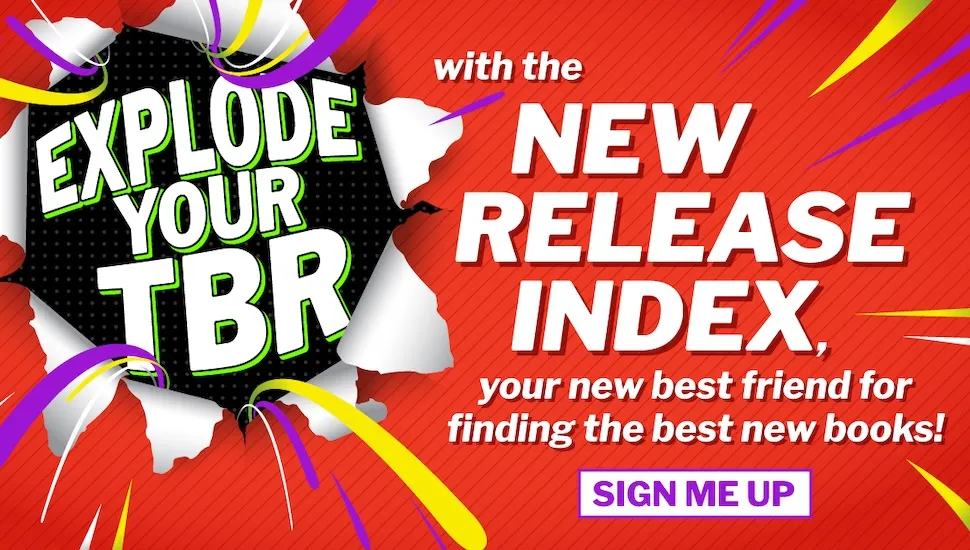
You Might Also Like


click here to read it now
Read this week's magazine

The Top 10 Essays Since 1950
Robert Atwan, the founder of The Best American Essays series, picks the 10 best essays of the postwar period. Links to the essays are provided when available.
Fortunately, when I worked with Joyce Carol Oates on The Best American Essays of the Century (that’s the last century, by the way), we weren’t restricted to ten selections. So to make my list of the top ten essays since 1950 less impossible, I decided to exclude all the great examples of New Journalism--Tom Wolfe, Gay Talese, Michael Herr, and many others can be reserved for another list. I also decided to include only American writers, so such outstanding English-language essayists as Chris Arthur and Tim Robinson are missing, though they have appeared in The Best American Essays series. And I selected essays , not essayists . A list of the top ten essayists since 1950 would feature some different writers.
To my mind, the best essays are deeply personal (that doesn’t necessarily mean autobiographical) and deeply engaged with issues and ideas. And the best essays show that the name of the genre is also a verb, so they demonstrate a mind in process--reflecting, trying-out, essaying.
James Baldwin, "Notes of a Native Son" (originally appeared in Harper’s , 1955)
“I had never thought of myself as an essayist,” wrote James Baldwin, who was finishing his novel Giovanni’s Room while he worked on what would become one of the great American essays. Against a violent historical background, Baldwin recalls his deeply troubled relationship with his father and explores his growing awareness of himself as a black American. Some today may question the relevance of the essay in our brave new “post-racial” world, though Baldwin considered the essay still relevant in 1984 and, had he lived to see it, the election of Barak Obama may not have changed his mind. However you view the racial politics, the prose is undeniably hypnotic, beautifully modulated and yet full of urgency. Langston Hughes nailed it when he described Baldwin’s “illuminating intensity.” The essay was collected in Notes of a Native Son courageously (at the time) published by Beacon Press in 1955.
Norman Mailer, "The White Negro" (originally appeared in Dissent , 1957)
An essay that packed an enormous wallop at the time may make some of us cringe today with its hyperbolic dialectics and hyperventilated metaphysics. But Mailer’s attempt to define the “hipster”–in what reads in part like a prose version of Ginsberg’s “Howl”–is suddenly relevant again, as new essays keep appearing with a similar definitional purpose, though no one would mistake Mailer’s hipster (“a philosophical psychopath”) for the ones we now find in Mailer’s old Brooklyn neighborhoods. Odd, how terms can bounce back into life with an entirely different set of connotations. What might Mailer call the new hipsters? Squares?
Read the essay here .
Susan Sontag, "Notes on 'Camp'" (originally appeared in Partisan Review , 1964)
Like Mailer’s “White Negro,” Sontag’s groundbreaking essay was an ambitious attempt to define a modern sensibility, in this case “camp,” a word that was then almost exclusively associated with the gay world. I was familiar with it as an undergraduate, hearing it used often by a set of friends, department store window decorators in Manhattan. Before I heard Sontag—thirty-one, glamorous, dressed entirely in black-- read the essay on publication at a Partisan Review gathering, I had simply interpreted “campy” as an exaggerated style or over-the-top behavior. But after Sontag unpacked the concept, with the help of Oscar Wilde, I began to see the cultural world in a different light. “The whole point of camp,” she writes, “is to dethrone the serious.” Her essay, collected in Against Interpretation (1966), is not in itself an example of camp.
John McPhee, "The Search for Marvin Gardens" (originally appeared in The New Yorker , 1972)
“Go. I roll the dice—a six and a two. Through the air I move my token, the flatiron, to Vermont Avenue, where dog packs range.” And so we move, in this brilliantly conceived essay, from a series of Monopoly games to a decaying Atlantic City, the once renowned resort town that inspired America’s most popular board game. As the games progress and as properties are rapidly snapped up, McPhee juxtaposes the well-known sites on the board—Atlantic Avenue, Park Place—with actual visits to their crumbling locations. He goes to jail, not just in the game but in fact, portraying what life has now become in a city that in better days was a Boardwalk Empire. At essay’s end, he finds the elusive Marvin Gardens. The essay was collected in Pieces of the Frame (1975).
Read the essay here (subscription required).
Joan Didion, "The White Album" (originally appeared in New West , 1979)
Huey Newton, Eldridge Cleaver, and the Black Panthers, a recording session with Jim Morrison and the Doors, the San Francisco State riots, the Manson murders—all of these, and much more, figure prominently in Didion’s brilliant mosaic distillation (or phantasmagoric album) of California life in the late 1960s. Yet despite a cast of characters larger than most Hollywood epics, “The White Album” is a highly personal essay, right down to Didion’s report of her psychiatric tests as an outpatient in a Santa Monica hospital in the summer of 1968. “We tell ourselves stories in order to live,” the essay famously begins, and as it progresses nervously through cuts and flashes of reportage, with transcripts, interviews, and testimonies, we realize that all of our stories are questionable, “the imposition of a narrative line upon disparate images.” Portions of the essay appeared in installments in 1968-69 but it wasn’t until 1979 that Didion published the complete essay in New West magazine; it then became the lead essay of her book, The White Album (1979).
Annie Dillard, "Total Eclipse" (originally appeared in Antaeus , 1982)
In her introduction to The Best American Essays 1988 , Annie Dillard claims that “The essay can do everything a poem can do, and everything a short story can do—everything but fake it.” Her essay “Total Eclipse” easily makes her case for the imaginative power of a genre that is still undervalued as a branch of imaginative literature. “Total Eclipse” has it all—the climactic intensity of short fiction, the interwoven imagery of poetry, and the meditative dynamics of the personal essay: “This was the universe about which we have read so much and never before felt: the universe as a clockwork of loose spheres flung at stupefying, unauthorized speeds.” The essay, which first appeared in Antaeus in 1982 was collected in Teaching a Stone to Talk (1982), a slim volume that ranks among the best essay collections of the past fifty years.
Phillip Lopate, "Against Joie de Vivre" (originally appeared in Ploughshares , 1986)
This is an essay that made me glad I’d started The Best American Essays the year before. I’d been looking for essays that grew out of a vibrant Montaignean spirit—personal essays that were witty, conversational, reflective, confessional, and yet always about something worth discussing. And here was exactly what I’d been looking for. I might have found such writing several decades earlier but in the 80s it was relatively rare; Lopate had found a creative way to insert the old familiar essay into the contemporary world: “Over the years,” Lopate begins, “I have developed a distaste for the spectacle of joie de vivre , the knack of knowing how to live.” He goes on to dissect in comic yet astute detail the rituals of the modern dinner party. The essay was selected by Gay Talese for The Best American Essays 1987 and collected in Against Joie de Vivre in 1989 .
Edward Hoagland, "Heaven and Nature" (originally appeared in Harper’s, 1988)
“The best essayist of my generation,” is how John Updike described Edward Hoagland, who must be one of the most prolific essayists of our time as well. “Essays,” Hoagland wrote, “are how we speak to one another in print—caroming thoughts not merely in order to convey a certain packet of information, but with a special edge or bounce of personal character in a kind of public letter.” I could easily have selected many other Hoagland essays for this list (such as “The Courage of Turtles”), but I’m especially fond of “Heaven and Nature,” which shows Hoagland at his best, balancing the public and private, the well-crafted general observation with the clinching vivid example. The essay, selected by Geoffrey Wolff for The Best American Essays 1989 and collected in Heart’s Desire (1988), is an unforgettable meditation not so much on suicide as on how we remarkably manage to stay alive.
Jo Ann Beard, "The Fourth State of Matter" (originally appeared in The New Yorker , 1996)
A question for nonfiction writing students: When writing a true story based on actual events, how does the narrator create dramatic tension when most readers can be expected to know what happens in the end? To see how skillfully this can be done turn to Jo Ann Beard’s astonishing personal story about a graduate student’s murderous rampage on the University of Iowa campus in 1991. “Plasma is the fourth state of matter,” writes Beard, who worked in the U of I’s physics department at the time of the incident, “You’ve got your solid, your liquid, your gas, and there’s your plasma. In outer space there’s the plasmasphere and the plasmapause.” Besides plasma, in this emotion-packed essay you will find entangled in all the tension a lovable, dying collie, invasive squirrels, an estranged husband, the seriously disturbed gunman, and his victims, one of them among the author’s dearest friends. Selected by Ian Frazier for The Best American Essays 1997 , the essay was collected in Beard’s award-winning volume, The Boys of My Youth (1998).
David Foster Wallace, "Consider the Lobster" (originally appeared in Gourmet , 2004)
They may at first look like magazine articles—those factually-driven, expansive pieces on the Illinois State Fair, a luxury cruise ship, the adult video awards, or John McCain’s 2000 presidential campaign—but once you uncover the disguise and get inside them you are in the midst of essayistic genius. One of David Foster Wallace’s shortest and most essayistic is his “coverage” of the annual Maine Lobster Festival, “Consider the Lobster.” The Festival becomes much more than an occasion to observe “the World’s Largest Lobster Cooker” in action as Wallace poses an uncomfortable question to readers of the upscale food magazine: “Is it all right to boil a sentient creature alive just for our gustatory pleasure?” Don’t gloss over the footnotes. Susan Orlean selected the essay for The Best American Essays 2004 and Wallace collected it in Consider the Lobster and Other Essays (2005).
Read the essay here . (Note: the electronic version from Gourmet magazine’s archives differs from the essay that appears in The Best American Essays and in his book, Consider the Lobster. )
I wish I could include twenty more essays but these ten in themselves comprise a wonderful and wide-ranging mini-anthology, one that showcases some of the most outstanding literary voices of our time. Readers who’d like to see more of the best essays since 1950 should take a look at The Best American Essays of the Century (2000).

- You are a subscriber but you have not yet set up your account for premium online access. Contact customer service (see details below) to add your preferred email address and password to your account.
- You forgot your password and you need to retrieve it. Click here to retrieve reset your password.
- Your company has a site license, use our easy login. Enter your work email address in the Site License Portal.

18 Narrative and Memoir Essays
Narrative writing.

Human beings tell stories every day. We understand most of nature through stories. Though facts can be memorized, stories — the details, the description, the experience — make us believe.
Therefore, as we begin to study writing, we need to begin with the properties of the story. How do good storytellers make us believe? How can good writing draw a reader into a story? How can we harness the power of the story to make a point, even in a dry, academic context?
The purpose of narrative writing is to tell stories. This is a form we are familiar with, as any time we tell a story about an event or incident in our day, we are engaging in a form of narration. In terms of writing, narration is the act of describing a sequence of events. Sometimes this is the primary mode of an essay—writing a narrative essay about a particular event or experience, and sometimes this is a component used within an essay, much like other evidence is offered, to support a thesis. This chapter will discuss the basic components of narration, which can be applied either as a stand-alone essay or as a component within an essay.
Ultimately, narrative writing tries to relay a series of events in an emotionally engaging way. You want your audience to be moved by your story, which could mean through laughter, sympathy, fear, anger, and so on. The more clearly you tell your story, the more emotionally engaged your audience is likely to be.
WHERE DO WE FIND NARRATIVE?
We talk about narrative writing in many ways. Books will introduce it as Narration, Narrative, and Storytelling. Narrative creeps into most of the other kinds of writing we learn about, too. Persuasive essays use short stories — often called anecdotes — to engage a reader’s attention and sympathy. Consider the difference between these two openings to the same essay:
Which opening makes you want to read more? The second one engages its readers with a story — and we’re hard-wired, as humans, to want to hear the end of a story.
Television plays on this characteristic all the time. Think of your favorite show and the maddening, brief preview that starts before the credits roll. It’s always a quick snippet that makes you stay tuned because the writers and producers know their audience will sit through several minutes of mindless commercials just to find out how the story will continue.
In our own writing, we can use stories in just the same way. We can draw our readers into our own experiences, even if they’ve never been through anything even similar to what we have, by telling our own stories.
HOW DO WE WRITE A NARRATIVE?
A narrative essay is a piece that tells one consistent, cohesive story. In academic writing, a narrative essay will also always convey a lesson, a moral, or a point that the writer wishes the reader to take.
When we say “moral,” some people think of after-school specials and having “good behavior” tips crammed down their throat. However, the most powerful lessons conveyed through writing are often done with great subtlety. True, the punishing pace of writing expected in a college course may not leave enough time to develop a nuanced story — no one is going to churn out War and Peace or even The Hobbit in ten weeks — but not every story has to have the moral stated clearly, in bold font, at the very beginning.
Think about it this way: When you were a kid, if your grandmother had sat you down and said, “Listen. We’re now going to have a thirty-minute conversation about how it’s really bad if you start smoking,” would you have listened? Probably not. If, however, your grandmother took you to visit your uncle Larry, who had terminal lung cancer, and then casually mentioned as you left that Larry had been smoking since he was your age — would you get the lesson? Would you remember it? Do you remember better the 200 lectures you had as a teenager about not being a bully, or do you remember the one time that you witnessed its effects firsthand?
In a narrative, we want to pull that same kind of trick on our readers: get our point across, but do it in a way that engages the imagination and attention. Use the power of the story.
The narrative relies on the same components that all good writing does: it needs detail, clear organization, and a central purpose (AKA our friends Development, Organization, and Unity).
NARRATIVE DEVELOPMENT: BRING THE DETAILS
Consider this passage from the very first Sherlock Holmes mystery, “A Study in Scarlet,” which describes a major character:
The author includes detail upon detail to describe this gentleman. He could have simply said, “He was dying from hunger and from thirst,” which would tell us everything we need to know. Instead, he describes how these feelings have had an effect upon the man — he is gaunt , he’s starting to look like a skeleton, and he can barely stand without the support of his rifle.
Think of the best book you’ve ever read (or the best television show you’ve ever watched, or the movie you love), and you may be able to relate to this. Good description is the difference between hearing a game on the radio and watching it live in the stadium (or on a ginormous 3-D television). The very breath of life in a narrative will always be your ability to describe a scene.

This relies on the use of specific language. As you read through the revision section, you were encouraged to avoid phrases that your audience might find misleading. Consider this as you write a story. With every sentence, ask, “What does my audience know? What do they think?” If you say a car is “beautiful,” will your audience think of a 2018 Hybrid Honda Accord or of a 1966 Chevelle (pictured at right)? If there’s some doubt, change your words to reflect your meaning.
You may have heard the advice that asks you to “show, not tell” in writing. This is what we mean: be so descriptive in telling a story that the reader feels s/he is there beside you, seeing the swimming pool or the school’s front doors or the new car or the new child with his/her own eyes.
NARRATIVE ORGANIZATION
Narrative traditionally follows time order, or chronological order , throughout. This seems obvious when you think about it — we tell stories in time order, starting (usually) at the beginning and working through to the end.
In an essay, pieces of the story can be organized into timespans by paragraph. For instance, if I’m describing a particularly harrowing day at work, I might have a paragraph just for the morning, and then a paragraph about my terrible lunch break, and then a paragraph about my afternoon.
Narrative essays usually can’t cover more ground than a day or two. Instead of writing about your entire vacation experience, study abroad month, two years of work at the plant, or 18 years living at home, focus on one particular experience that took place over a day or two. That’s enough for a reader to digest in a few pages, and it will also give you a chance to really lay in details without feeling rushed.
Sometimes, we start stories out of order. Many popular movies and television shows do this regularly by showing a clip of something that happens later before starting the whole show. If you’ve ever seen an episode of NCIS, you’ll be familiar with this technique: they start each section of the show with a photo of the ending scene, then start an hour or two before that scene in the live-action. Shows often jump to “One Week Earlier” between commercial breaks.
Think of the emotional impact that has upon you as a viewer. Again, it’s a trick the writers pull with their story to drive you through the boring/silly/pointless/insulting commercials so that you’ll stay with them. We want to know how the characters get to that end.
You can manipulate your audience in this way, too, but be careful; giving away too much of the ending may sometimes make a reader simply put down what they’re reading. It’s safer (though not always better) to just start at the beginning and write things down as they happened. Particularly in a first draft, sticking to the natural story order will be a good way to make sure nothing gets missed.
Chronological order , the order in which events unfold from first to last, is the most common organizational structure for narratives. Stories typically have a beginning, a middle, and an end. Certain transitional words and phrases aid in keeping the reader oriented in the sequencing of a story. Some of these phrases are listed below.
Figure 5.2 Transition Words and Phrases for Expressing Time
The following are the other basic components of a narrative:
• Plot . The events as they unfold in sequence.
• Characters . The people who inhabit the story and move it forward. Typically, each narrative has there are minor characters and main characters. The minor characters generally play supporting roles to the main character, or the protagonist.
• Conflict . The primary problem or obstacle that unfolds in the plot, which the protagonist must solve or overcome by the end of the narrative. The way in which the protagonist resolves the conflict of the plot results in the theme of the narrative.
• Theme . The ultimate message the narrative is trying to express; it can be either explicit or implicit.
Writing at Work
When interviewing candidates for jobs, employers often ask about conflicts or problems a potential employee had to overcome. They are asking for a compelling personal narrative. To prepare for this question in a job interview, write out a scenario using the narrative moved structure. This will allow you to troubleshoot rough spots as well as better understand your own personal history. Both processes will make your story better and your self-presentation better, too.
Narrative Anecdotes
An anecdote is a short, personal narrative about something specific. It is often used as a component in an essay, acting as evidence to support your thesis, as an example to demonstrate your point, and/or as a way to establish your credibility. It always has a point in telling it.
Elements of an Anecdote
1. Who, Where, When
Have you ever wondered why children’s stories begin something like this?
Once upon a time, in a galaxy far, far away, the teachers were revolting …
It is the start of a simple narrative. It also contains all the elements of a beginning to any narrative: when, where, and who. An anecdote, because it is short, will begin similarly:
One day, while I was sitting at a stop sign waiting for the light to change…
This little particle of an anecdote tells when, who, and where before the first sentence even ends.
Note : An anecdote sets up a particular incident; it does not tell about a long period of time.
2. What Happened (Sequence of Events)
Any narrative also includes a sequence of events. You should be able to read an anecdote and tell what happens first, what happens next, and so on. In the following anecdote, the bolded words suggest each event in the sequence.
Example Anecdote:
My first day of college I parked in the “South Forty,” which is what everyone called the huge parking lot on the edge of the campus. It was seven forty-five in the morning, hazy and cool. I walked across the parking lot, crossed a busy street, walked over a creek, through a “faculty” parking lot, crossed another street, and came to the first row of campus buildings. I walked between buildings, past the library and the student mall. I passed many quiet, nervous-looking students along the way. Many of them smiled at me. One trio of young girls was even chuckling softly among themselves when they all smiled and said “Hi” to me at once. By the time I got to my classroom, far on the other side of campus from the parking lot, I was smiling and boldly saying “Hi” to everyone, too, particularly the girls. Every single one of them smiled or responded with a “Hi” or made a friendly comment or even chuckled happily. It was my first day of college.
When I found the building I was looking for, a friend from high school appeared. She was in my first class! I smiled at her and said, “Hi!” She looked at me. She smiled. Then she laughed. She said, “Why are you wearing a sock on your shirt?” I looked down. A sock had come out of the dryer clinging to my shirt.
3. Implied Point
Most of us want to make sure that we “get the point across” to whatever story we are telling, assuming it has a point. To do this, we tend to explain what we are telling. It is sometimes very difficult to stop. However, stopping in a timely way allows the reader to draw his or her own conclusions.
Show, don’t tell
In the anecdote above, I am very tempted to tell the reader what I felt at the moment I realized that everyone was laughing AT me rather than just being friendly. For the ending, where the point is in this case, it is best to let the reader infer (draw conclusions, fill in the blanks) what happens implicitly rather than to state explicitly what the point is, or what the narrator felt, or anything else.
The more indirect you are about your object or place the better. In the anecdote above, it might be obvious that my object is a sock or my place is a parking lot. The point is, it is not an anecdote “about” a sock; it is referred to indirectly.
How do we show rather than tell? First, describe what you see (I don’t really see anything with “I was SO embarrassed…”) or what you smell, hear, or taste, but NOT what you feel. An easy way to check whether you are showing or telling is to go through your anecdote and underline the verbs. If the verbs are “be”-verbs (is, was, were, etc.) or verbs that describe actions we cannot see (“I thought…” “I believed…” “I imagined…” “it made me upset…” and so on) then you are probably telling. In the sentence above I used “walked,” “lecturing,” “ripped,” and “said.”
Most Common Question:
“What makes stories or anecdotes interesting and something I can relate to?”
Actually, it is a simple principle, even though it may not be obvious. We “relate” or “connect” most easily to situations we recognize and so fill in the blanks. If you “tell” me, for example, “I was SO embarrassed …” then you have not let me fill in MY embarrassment. On the other hand, if you “show” me a scene, it allows me to fit my own experience into it:
“I walked past the corner of the aluminum whiteboard tray while lecturing to a class. It ripped my pants. After a moment I said, ‘Class dismissed.’”
The writer of those statements, hopes the reader will fill in some similarly embarrassing moment without the writer clearly stating that this is what is supposed to be done. The connection, the act of “filling in,” is what people tend to refer to as “relating to.”
Interestingly, it does not even matter whether or not readers fill in what the writer intend for them to fill in; it is the act of filling in our own experiences that makes us “relate” to an incident. From a writer’s perspective, that means we should show rather than tell.
Second, resist the temptation to “explain.” Let the reader fill in the blanks! It is so much more personal when the reader participates by filling in.
Assignment 1
Write an anecdote that contains who, where, when, and what happens (a sequence of events). Think about an anecdote that involves , alludes to, or otherwise includes your object or place ; it does not have to be “about” your place. It also does not have to be “true” in the strict sense of the word; we will not be able to verify any believable details if they add to the effect of the anecdote. Type it out. Keep it simple and to the point.
What are ‘clichés’ and why can’t we use them?
Clichés are figurative phrases and expressions that you have probably heard a million times. For our purposes, there are two kinds of clichés: the ones that jump out at you and the ones that we use without thinking.
If you are paying attention, you will notice that the two sentences above contain at least 3 clichés. You might also notice that clichés are best suited to spoken language, because they are readily available and sometimes when we speak, we don’t have time to replace a common expression with a unique one. However, we DO have time to replace clichés while we are writing.
The problem with clichés in writing is that they are too general when we should be much more specific. They also tend to tell rather than show. In the first sentence above, we have most likely heard the phrase, “have probably heard a million times.” In speech, that expression works. In writing, it should be literal rather than figurative. The first sentence is better this way:
Clichés are figurative phrases and expressions that we have heard so many times that we all share some understanding of what they mean.
Not exactly what you thought when you read it at the beginning of this answer, is it? That is why being literal and specific in writing is better than figurative and vague as a rule.
Here is a re-write of the second sentence at the start of this answer:
For our purposes, there are two kinds of clichés: the ones that are obvious expressions (like “You can lead a horse to water …”) and the ones that are not part of expressions but seem to “go” easily into a group of words (like “we use without thinking”).
The second type is more difficult to identify and eradicate. Usually it is a group of words we have heard before that doesn’t add anything to a statement. For example, instead of “We watched the donuts roll down the street every night,” you might be tempted to add to it this way: “We watched the donuts roll down the street each and every night.” Avoid clichés in your writing.
To see more see more commonly used clichés and for guidance on how to rewrite them, see this handout (https://writingcenter.unc.edu/cliches/)from The University of North Carolina, Chapel Hill, Writing Center.
Some Other Rhetorical Tips
- To create strong details, keep the human senses in mind. You want your reader to be immersed in the world that you create, so focus on details related to sight, sound, smell, taste, and touch as you describe people, places, and events in your narrative.
- Create tension by making the reader nervous about what is going to happen through sentence structure, tone, and voice.
- Add dialogue to show the immediacy and drama of the personal interactions (re-creating conversations as necessary to make your narrative work).
- Name specific objects to re-create the scene by selecting details that leave the readers with a dominant impression of how things were.
- Show people in action by describing precise movements and dialogue to convey the action of the scene.
External Links:
“ Sixty-nine Cents ” (https://tinyurl.com/ybjasq9c) by Gary Shteyngart: In “Sixty-nine Cents,” author Gary Shteyngart describes a coming-of-age experience as a first-generation Russian-Jewish immigrant in modern America.
Sherman Alexie grew up on the Spokane Reservation in Washington State. He chronicles his challenges in school, starting in first grade, in Indian Education (https://tinyurl.com/hlshngr).
Sandra Cisneros offers an example of a narrative essay in “ Only Daughter ” (https://tinyurl.com/yc4srod7) that captures her sense of her Chicana-Mexican heritage as the only daughter in a family of seven children. The essay is also available here (https://tinyurl.com/y7hzxhz6).
Annie Dilliard offers an example of a narrative essay in an excerpt, often entitled “ The Chase ” (https://tinyurl.com/ycsen7r4) from her autobiography An American Childhood , outlining a specific memorable event from her childhood. This essay is also available here (https://tinyurl.com/y7udsl88).
NARRATIVE UNITY
The final consideration in putting together a narrative essay should be unifying it around a single theme or lesson. As you draft, you may already have this lesson in mind: everyone should wear a seatbelt. However, remember that your reader needs to make up her own mind. Don’t insult a reader by beating them up with your lesson, and don’t leave them guessing about the meaning of your piece by leaving it out completely.
Many writers include a paragraph of reflection after telling a personal story in an essay that lets a reader know, directly, the significance that the story has on the writer’s life. This can be a good way to get a lesson across. Showing what you’ve learned or found important in an event will provide the reader with a clue about the overall meaning of the story.
You should use “I” in a personal, narrative essay . There are types of academic writing where “I” is inappropriate, but this is not one of those times. In fact, the best narratives will often be the most personal, the stories that avoid hiding behind “you” or “they” and instead boldly tell the writer’s own story.
NARRATIVE OUTLINES
The typical narrative essay follows an outline that should seem like common sense:
- Paragraph 1: Introduction
- Paragraph 2: Event #1
- Paragraph 3: Event #2
- Paragraph 4: Event #3
- Paragraph 5: Conclusion
This outline is flexible. Perhaps the first event in your story will take significant space to describe; it may need 2 paragraphs of its own. Maybe there are smaller events that happen within the larger events. Maybe for your piece, it makes sense to jump right into the story instead of spending an introduction paragraph to give some setup. What matters most is that a reader can easily follow the piece from beginning to end and that she will leave with a good understanding of what you wanted the reader to learn.
Student Sample Essay
My College Education
The first class I went to in college was philosophy, and it changed my life forever. Our first assignment was to write a short response paper to the Albert Camus essay “The Myth of Sisyphus.” I was extremely nervous about the assignment as well as college. However, through all the confusion in philosophy class, many of my questions about life were answered.
I entered college intending to earn a degree in engineering. I always liked the way mathematics had right and wrong answers. I understood the logic and was very good at it. So when I received my first philosophy assignment that asked me to write my interpretation of the Camus essay, I was instantly confused. What is the right way to do this assignment, I wondered? I was nervous about writing an incorrect interpretation and did not want to get my first assignment wrong. Even more troubling was that the professor refused to give us any guidelines on what he was looking for; he gave us total freedom. He simply said, “I want to see what you come up with.”
Full of anxiety, I first set out to read Camus’s essay several times to make sure I really knew what was it was about. I did my best to take careful notes. Yet even after I took all these notes and knew the essay inside and out, I still did not know the right answer. What was my interpretation? I could think of a million different ways to interpret the essay, but which one was my professor looking for? In math class, I was used to examples and explanations of solutions. This assignment gave me nothing; I was completely on my own to come up with my individual interpretation.
Next, when I sat down to write, the words just did not come to me. My notes and ideas were all present, but the words were lost. I decided to try every prewriting strategy I could find. I brainstormed, made idea maps, and even wrote an outline. Eventually, after a lot of stress, my ideas became more organized and the words fell on the page. I had my interpretation of “The Myth of Sisyphus,” and I had my main reasons for interpreting the essay. I remember being unsure of myself, wondering if what I was saying made sense, or if I was even on the right track. Through all the uncertainty, I continued writing the best I could. I finished the conclusion paragraph, had my spouse proofread it for errors, and turned it in the next day simply hoping for the best.
Then, a week or two later, came judgment day. The professor gave our papers back to us with grades and comments. I remember feeling simultaneously afraid and eager to get the paper back in my hands. It turned out, however, that I had nothing to worry about. The professor gave me an A on the paper, and his notes suggested that I wrote an effective essay overall. He wrote that my reading of the essay was very original and that my thoughts were well organized. My relief and newfound confidence upon reading his comments could not be overstated.
What I learned through this process extended well beyond how to write a college paper. I learned to be open to new challenges. I never expected to enjoy a philosophy class and always expected to be a math and science person. This class and assignment, however, gave me the self-confidence, critical-thinking skills, and courage to try a new career path. I left engineering and went on to study law and eventually became a lawyer. More important, that class and paper helped me understand education differently. Instead of seeing college as a direct stepping stone to a career, I learned to see college as a place to first learn and then seek a career or enhance an existing career. By giving me the space to express my own interpretation and to argue for my own values, my philosophy class taught me the importance of education for education’s sake. That realization continues to pay dividends every day.
Most People Don’t Understand Memoirs
In 2006, James Frey wrote a memoir about parts of his life when he was under the influence of drugs called A Million Little Pieces , and after Oprah had him on her show to discuss the book – it was featured in her popular book club, of course – she was told that he “lied” about certain parts. Well, he didn’t lie. Memoirs contain what we remember. What we remember isn’t always “fact.” What I always say is that if you have all of your family members report what happened at a family gathering – like a birthday party or Christmas – whose report would be correct? No ones! That’s what a memoir is. It’s still nonfiction because it’s what the person remembers, but it’s not false on purpose. If I remember that my sister responded to me in a snotty way one day and my other sister didn’t think so, no one is correct. It’s just my memory versus hers.
Now, typically, memoirs encompass just a chunk of someone’s life, like when James Frey wrote about his drug years, but sometimes, some famous person in their 70s (or older) will write his/her memoir. No matter what, it’s simply what they remember, and I suppose if someone’s on drugs or has an awful memory, the stories could appear to be false. But they aren’t. That’s why they say, “life is stranger than fiction.”
Memoirs are part of the nonfiction category of literature; they contain a lot of description and detail, and they are typically very, very personal in content.
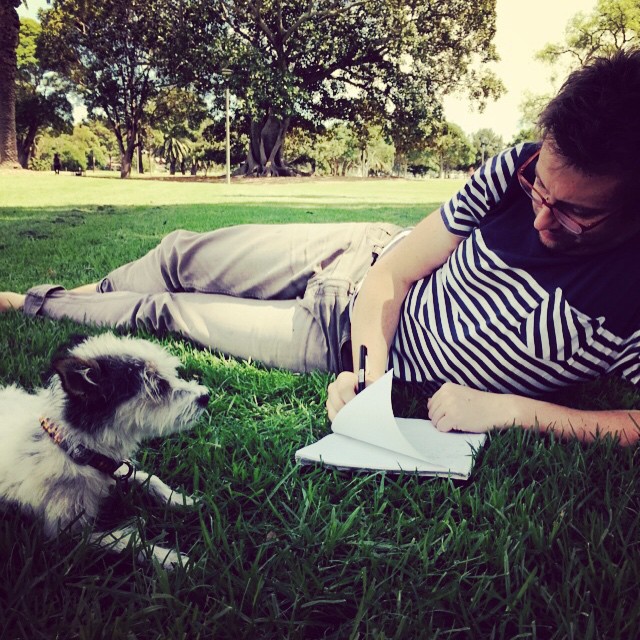
The Bits and Pieces of Memoir
The memoir is a specific type of narrative. It is autobiographical in nature, but it is not meant to be as comprehensive as a biography (which tells the entire life story of a person). Instead, a memoir is usually only a specific “slice” of one’s life. The time span within a memoir is thus frequently limited to a single memorable event or moment, though it can also be used to tell about a longer series of events that make up a particular period of one’s life (as in Cameron Crowe’s film memoir Almost Famous ). It is narrative in structure, usually describing people and events that ultimately focuses on the emotional significance of the story to the one telling it. Generally, this emotional significance is the result of a resolution from the conflict within the story. Though a memoir is the retelling of a true account, it is not usually regarded as being completely true. After all, no one can faithfully recall every detail or bit of dialogue from an event that took place many years ago. Consequently, some creative license is granted by the reader to the memoirist recounting, say, a significant moment or events from his childhood some thirty years, or more, earlier. (However, the memoirist who assumes too much creative license without disclosing that fact is vulnerable to censure and public ridicule if his deception is found out, as what happened with James Frey and his memoir, A Million Little Pieces .)
Furthermore, names of people and places are often changed in a memoir to protect those who were either directly or indirectly involved in the lives and/or event(s) being described.
Why read memoirs?
To learn about other people’s lives and their thoughts about events that have occurred. Memoirs are a personalized look at history.
How to write memoirs?
Reflect n your life. write what you remember about events that matter to you from your unique point-of-view.
Dialogue is another way to bring life to your writing. Dialogue is conversation or people speaking in your story. An engaging dialogue goes beyond what is simply being said to include descriptions of non-verbal communication (facial expressions, body movement, changes in tone, and speed of speech) and characterization. The way people speak and interact while talking reveals much about them and the situation.
Writing a natural-sounding dialogue is not easy. Effective dialogue must serve more than one purpose – it should:
- Drive the plot forward,
- Reveal information about the characters, and
- Build tension or introduce conflict.
Sample Dialogue
“So, what was it really like?” I asked.
“I’ve told you. It was amazing.”
I shifted to my side so I could look at her. “You have to give me more than that,” I insisted, “and not the mom and dad version.”
Liv mirrored my move to her side and propped up her head with her arm. Her blue eyes searched my greens, looking for the right words. “I shouldn’t–”
We broke our gaze as we heard our mom call for us. Once again, I didn’t get the truth.
Basic Dialogue Rules
- “I want to go to the beach,” she said.
- He asked, “Where’s the champagne?”
- “That is,” Wesley said, “that neither you nor me is her boy.”
- Even if the speaker says only one word, with no accompanying attribution or action, it is a separate paragraph.
- Start a new paragraph when you wish to draw the reader’s attention to a different character, even if that character doesn’t actually speak.
- For internal dialogue, italics are appropriate.
Example Memoir
Chocolate Can Kill You
Just when you think your life could not get any better, the Great One Above throws you for a loop that causes you to think upon your life, yourself, and your “little” obsession with chocolate. I am somewhat ashamed of this story, but it taught me so much. I still remember Alisa’s face when I came crying into the Valley City gym, I can hear Dad’s echoing “Are you OKAY?” consistently in my mind as if it had been a childhood scolding, and I see the image of the snow coming at me at 70mph every time I drive on a highway now.
In 1997, the morning after Valentine’s Day, I took off to see my sister in Valley City. She was there because of a wrestling meet. She is one of their prized assistants and without her, they would never get to see how goofy they look in tights. It was a crisp morning, and I cannot remember if I filled the bronco’s tank, but I did purchase a Twix bar before heading out on I-94. I vaguely remember thinking, Gee a seat belt would be good, even though the roads were as clean as they could have been in a North Dakota February. On that ten-degree morning, I met up with no one on the highway.
I was just bee-bopping along the left side of the road, listening to the radio and singing aloud as if I was Mariah Carey. It was at this time that I chomped into my first Twix bar.
In an attempt at a different radio station or something or another, I dropped the last bar between my legs onto the floor of the black beastly bronco.
This is where I become a stupid human. I tried to recapture the chocolate bar thinking, or maybe not even thinking, It will only take me a second. Whoever has said that seconds count in any accident WAS RIGHT! All of a sudden, I look up to see that I am driving 70 mph into the median’s snowdrifts. I cranked the wheel, thinking I could just drive back onto the highway. I mumble a few swear words and realize I am going 70 MPH IN A VERY DEEP SNOWDRIFT! I take my foot off the accelerator and while the front end slows, the back end has accumulated too much energy or velocity (a good physics question) and begins to lift upwards. I close my eyes, cross my arms across my chest, and crouch back into my seat and start to feel the bronco as well as myself turn and twist and hover for what seemed an eternity in slow motion. I did not open my eyes once.
And then all of a sudden, the small jolted car lands- PLOP – ON ITS WHEELS! My chair has completely reclined, and I sit up seeing smoke coming from my engine. I forget how to work my car and instinctively get out as if to show God I am alive. I stand on top of the drift becoming taller than my boxy 4×4. There are small dents in the front where you would open the hood but that is the biggest damage I can see.
“Are you OKAY?” An old couple are parked and honking at me from the other side of the highway going towards Fargo. They tell me to come with them and turn off the engine. I grab my parka and make my way through the snow to sit down in the back seat of the long car and take in that old people smell. This is when I quietly cry.
“You did a flip! It’s amazing you walked away from it,” says the old man and I think to myself sarcastically to calm down, Yeah I tried to do that. I ask them to take me to Valley City trying not to sound three and a half. Another major thought echoes What will Dad say?
They turned around at the next available bridge which was a mile away and the lady told me the exit so I could give it to the people that will tow my little bruised bronco. They talked to themselves as I tried to think of what exactly happened, how glad I was to be alive, and how I felt about it. Once inside the gymnasium, I found Alisa’s eyes and she instantly frowned and looked scared.
“Did you and Jason fight?” No, I try to say but I am crying in front of a large crowd who all seem more interested in me now than the matches. I sit down beside her and say:
“I did a flip… the bronco… flipped … it did a 360.”
“The bronco did a WHAT! ARE YOU OKAY!” She panics. I go to call Dad as she tells her friends, and they also feel sympathetic and are quite amazed. I don’t know how I managed to remember my calling card number, but I reached Mom and Dad just waking up. Once again Dad frightens me with his voice and vows to be there as soon as possible and tells me to call the highway patrol.
I was the only accident that whole day on the highway, I think, so I looked pretty silly.
Mom and Dad showed up an hour later. Mom was half-awake, and Dad looked like he’d been chugging coffee left and right. They had seen the bronco being towed incorrectly towards Fargo, so Dad feared the transmission was screwed up again much less the rest of the car. We took off for Fargo and stopped at the spot seeing the tracks lead into the snow, then 25 feet of no tracks, and suddenly a large indentation where the bronco had sat down.
Once at the Mobile on I-29, Dad jumped into the bronco to try to start it. It revved right up. I shook my head and thought of the motto, Built Ford Tough. Only the alignment and steering was off from me trying to turn it back onto the road, and the steam I had seen was the radiator fluid splashing onto the hot engine.
We had to meet with a highway patrolman, so the bronco could get a sticker and photos could be taken. I also, fortunately for the taxpayers, had to pay a Care of Vehicle bill of thirty dollars which means that the government basically can fine someone for trashing his/her own vehicle. This pissed me off incredibly after a day like I had just had. My mom had to remind me though that at least it wasn’t a medical bill.
The highway patrolman reminds me how valuable it was that I had had a seat belt on because I would have for sure gone through the windshield with that type of event and all the tossing that I had endured. That does not make replaying this event in my memory any better. As if God was saying: “No, not yet.”
It’s a common joke to not let me eat while I am driving.
That day made me incredibly grateful for my life, and for the people who came to my aid, especially my parents for spending their whole Saturday with me. Whether we were trying to contact the highway patrolman, paying the tower and the ticket, or comforting me- they never complained. Who knew chocolate could lead to such a life-threatening, yet philosophical day?
Time to Write
Purpose: This assignment will demonstrate the understanding of how to write a memoir
Task: This assignment frames a single event for the memoir essay.
Write a Memoir Essay. This essay should clearly identify a significant event or series of closely tied events that convey the significance of that event or has somehow shaped your personal perspective. Remember that you are writing for an audience that doesn’t share your knowledge of the event(s), people, setting, etc. It is up to you to make your memoir come to life.
Key Features of a Memoir:
- Invoke the 5 senses
- Use narrative suspense
- use metaphor
- include significant details
- provide descriptive language
- use effective dialogue
- include transitions
Key Grading Considerations
- The rhetorical purpose is clear, focused, and appropriate to the audience and assignment.
- The purpose is focused on the memoir.
- Shows engagement with issues of story, language, rhetoric, or thinking deeply about a personal event.
- The theme relates to a personal experience but also illustrates more universal principles.
- Transitions
- Learning Point Thesis Statement
- Topic Sentences
- Some Narrative Elements that flow with the paper
- Clear introduction, event story, and conclusion
- Dialogue is used
- Descriptions and quotes to help visualize the event
- Correct, appropriate, and varied integration of textual examples, including in-text citations
- Limited errors in spelling, grammar, word order, word usage, sentence structure, and punctuation
- Good use of academic English
- Demonstrates cohesion and flow
- Uses the rules of dialogue
- Date format
Attributions
- Memoir Content Adapted from Excelsior Online Writing Lab (OWL). (2020). Excelsior College. Retrieved from https://owl.excelsior.edu/ licensed under a Creative Commons Attribution-4.0 International License .
- Narrative Writing Content Adapted from BETTER WRITING FROM THE BEGINNING . (2020). Jenn Kepka. Retrieved from Better Writing from the Beginning licensed under a Creative Commons Attribution-4.0 International License .
English 101: Journey Into Open Copyright © 2021 by Christine Jones is licensed under a Creative Commons Attribution-NonCommercial-ShareAlike 4.0 International License , except where otherwise noted.
Share This Book
Narrative Essay
Narrative Essay Examples
10+ Interesting Narrative Essay Examples Plus Writing Tips!

People also read
Narrative Essay - A Complete Writing Guide with Examples
Writing a Personal Narrative Essay: Everything You Need to Know
Best Narrative Essay Topics 2023 for Students
Crafting a Winning Narrative Essay Outline: A Step-by-Step Guide
Many students struggle with crafting engaging and impactful narrative essays. They often find it challenging to weave their personal experiences into coherent and compelling stories.
If you’re having a hard time, don't worry!
We’ve compiled a range of narrative essay examples that will serve as helpful tools for you to get started. These examples will provide a clear path for crafting engaging and powerful narrative essays.
So, keep reading and find our expertly written examples!
- 1. Narrative Essay Definition
- 2. Narrative Essay Examples
- 3. Narrative Essay Examples for Students
- 4. Narrative Essay Topics
- 5. Narrative Essay Writing Tips
Narrative Essay Definition
Writing a narrative essay is a unique form of storytelling that revolves around personal experiences, aiming to immerse the reader in the author's world. It's a piece of writing that delves into the depths of thoughts and feelings.
In a narrative essay, life experiences take center stage, serving as the main substance of the story. It's a powerful tool for writers to convey a personal journey, turning experiences into a captivating tale. This form of storytelling is an artful display of emotions intended to engage readers, leaving the reader feeling like they are a part of the story.
By focusing on a specific theme, event, emotions, and reflections, a narrative essay weaves a storyline that leads the reader through the author's experiences.
The Essentials of Narrative Essays
Let's start with the basics. The four types of essays are argumentative essays , descriptive essays , expository essays , and narrative essays.
The goal of a narrative essay is to tell a compelling tale from one person's perspective. A narrative essay uses all components you’d find in a typical story, such as a beginning, middle, and conclusion, as well as plot, characters, setting, and climax.
The narrative essay's goal is the plot, which should be detailed enough to reach a climax. Here's how it works:
- It's usually presented in chronological order.
- It has a function. This is typically evident in the thesis statement's opening paragraph.
- It may include speech.
- It's told with sensory details and vivid language, drawing the reader in. All of these elements are connected to the writer's major argument in some way.
Before writing your essay, make sure you go through a sufficient number of narrative essay examples. These examples will help you in knowing the dos and don’ts of a good narrative essay.
It is always a better option to have some sense of direction before you start anything. Below, you can find important details and a bunch of narrative essay examples. These examples will also help you build your content according to the format.
Here is a how to start a narrative essay example:
Sample Narrative Essay
The examples inform the readers about the writing style and structure of the narration. The essay below will help you understand how to create a story and build this type of essay in no time.
Here is another narrative essay examples 500 words:
Narrative Essay Examples for Students
Narrative essays offer students a platform to express their experiences and creativity. These examples show how to effectively structure and present personal stories for education.
Here are some helpful narrative essay examples:
Narrative Essay Examples Middle School
Narrative Essay Examples for Grade 7
Narrative Essay Examples for Grade 8
Grade 11 Narrative Essay Examples
Narrative Essay Example For High School
Narrative Essay Example For College
Personal Narrative Essay Example
Descriptive Narrative Essay Example
3rd Person Narrative Essay Example
Narrative Essay Topics
Here are some narrative essay topics to help you get started with your narrative essay writing.
- When I got my first bunny
- When I moved to Canada
- I haven’t experienced this freezing temperature ever before
- The moment I won the basketball finale
- A memorable day at the museum
- How I talk to my parrot
- The day I saw the death
- When I finally rebelled against my professor
Need more topics? Check out these extensive narrative essay topics to get creative ideas!
Narrative Essay Writing Tips
Narrative essays give you the freedom to be creative, but it can be tough to make yours special. Use these tips to make your story interesting:
- Share your story from a personal viewpoint, engaging the reader with your experiences.
- Use vivid descriptions to paint a clear picture of the setting, characters, and emotions involved.
- Organize events in chronological order for a smooth and understandable narrative.
- Bring characters to life through their actions, dialogue, and personalities.
- Employ dialogue sparingly to add realism and progression to the narrative.
- Engage readers by evoking emotions through your storytelling.
- End with reflection or a lesson learned from the experience, providing insight.
Now you have essay examples and tips to help you get started, you have a solid starting point for crafting compelling narrative essays.
However, if storytelling isn't your forte, you can always turn to our essay writing service for help.
Our writers are specialists that can tackle any type of essay with great skill. With their experience, you get a top-quality, 100% plagiarism free essay everytime.
So, let our narrative essay writing service make sure your narrative essay stands out. Order now!

Write Essay Within 60 Seconds!

Caleb S. has been providing writing services for over five years and has a Masters degree from Oxford University. He is an expert in his craft and takes great pride in helping students achieve their academic goals. Caleb is a dedicated professional who always puts his clients first.

Paper Due? Why Suffer? That’s our Job!
Keep reading


Maya Angelou
Maya Angelou (born Marguerite Ann Johnson; April 4, 1928 – May 28, 2014) was an American author and poet. She published seven autobiographies, three books of essays, and several books of poetry, and is credited with a list of plays, movies, and television shows spanning more than fifty years. She received dozens of awards and over thirty honorary doctoral degrees. Angelou is best known for her series of seven autobiographies, which focus on her childhood and early adult experiences. The first, I Know Why the Caged Bird Sings (1969), tells of her life up to the age of seventeen, and brought her international recognition and acclaim. Angelou's long list of occupations has included pimp, prostitute, night-club dancer and performer, cast-member of the musical Porgy and Bess, coordinator for Martin Luther King, Jr.'s Southern Christian Leadership Conference, author, journalist in Egypt and Ghana during the days of decolonization, and actor, writer, director, and producer of plays, movies, and public television programs.
#AmericanWriters #BlackWriters #FemaleWriters
- Skip to main content
- Skip to primary sidebar
EveryWriter
A New Community of Writers
100 Greatest Narrative Essay Topics
January 5, 2024 by Richard Leave a Comment

Welcome to our 100 Greatest Narrative Essay topics of all time list. These topics are written about over and over again by students and writers all over the world, and they are made new every time someone tells their story. Sharing personal stories can be a powerful way to connect with others. Whether it’s a humorous anecdote or an impactful life event, narrative essays give readers a glimpse into someone else’s world while reminding them of our shared humanity.
So, if you are having a hard time coming up with a topic to write about, try these 100. We seek to provide inspiration for your personal narrative essay. It compiles a list of 100 narrative essay topics ranging from lighthearted tales about childhood memories to profound life-changing events. With so many options, readers are sure to find an experience in their own lives that they can transform into an engaging first-person story.
Some of these narrative essay ideas evoke positive emotions – like achieving a major accomplishment, traveling somewhere new, or meeting someone influential. Other prompts allow reflection on challenging experiences – like encountering failure, coping with loss or illness, or facing down fears. The list also includes topics perfect for humor pieces – because the best personal narratives often share smiles and laughter too.
Readers can take a look at the list and see which topic speaks to them. Then they can start drafting their own unique story. Because each person’s tale offers its own dose of wisdom, inspiration, and connection. The stories readers craft based on these ideas will surely impact others.
Here are 100 potential narrative essay topics:
- A time I overcame a fear
- The day I met my best friend
- A family vacation that went wrong
- The experience of learning to ride a bike
- Attending my first concert
- My most difficult class in school so far
- My proudest accomplishment
- A time I failed at something
- My experience learning a new language
- Meeting someone famous
- My experience as a camp counselor
- My favorite family holiday tradition
- The first time I traveled alone
- A challenging hike I went on
- Moving to a new place
- Getting my first pet
- Being bullied as a child
- My first day of high school
- My experience playing on a sports team
- The day I got my driver’s license
- Something funny my parent or sibling did
- Working an unpleasant job as a teenager
- Volunteering in my community
- The day I became an older sibling
- A parenting lesson my parents taught me
- Attending my first homecoming dance
- My favorite birthday celebration
- A cooking disaster story
- My experience getting stitches or breaking a bone
- A mentor who impacted my life
- My most memorable act of kindness from a stranger
- The adoption of my pet
- My experience being homeschooled
- Starting a new hobby as an adult
- My fondest childhood memory
- My first heartbreak
- My experience with online school
- My journey recovering from an injury
- Being a working student
- Writing my first poem or short story
- My scariest nightmare
- Making a move to live on my own
- Coping with my parents’ divorce
- My adventure backpacking overseas
- My most memorable day playing childhood games
- The time I performed on stage
- A cherished family tradition
- My proudest moment as a parent
- Meeting my grandparents for the first time
- My experience being an older sibling
- My fondest memory of a family pet
- My most memorable birthday
- My most humbling moment
- My first experience with snow
- A difficult goodbye
- My favorite place to spend time as a child
- Winning an award
- My favorite holiday gathering
- Studying abroad in college
- Moving to a new city after graduation
- My experience voting for the first time
- A favorite item from my childhood
- My experience overcoming sickness or surgery
- My favorite family vacation
- A memorable weekend road trip
- My first paying job
- My experience on the first day of a new school
- Celebrating a cultural holiday
- How I learned to overcome a bad habit
- Staying up all night with friends
- Attending prom
- My experience being home alone
- Getting elected as a group leader
- Preparing for a major storm
- Learning a lesson about honesty
- The day I rescued an animal
- My first impression of a famous landmark
- My most memorable celebrity encounter
- My experience with online dating
- My first car buying experience
- Deciding my college major
- Changing career paths
- My experience with unrequited love
- Meeting an idol or someone I admire
- My experience dealing with loss
- My biggest regret
- My proudest problem solving moment
- My favorite concert experience
- My experience with an act of heroism
- My first time trying an extreme sport
- How I overcame my biggest fear
- My experience with an ethical dilemma
- My most spiritual experience
- My most terrifying moment
- A major turning point in my life
- My best day ever
- My worst day ever
- My experience immigrating to a new country
- My experience parenting multiples (twins, triplets etc)
- My funniest travel mishap
As evident, there is no shortage of engaging topics for personal narrative essays. The experiences humans accumulate throughout their lives – whether they make one laugh, cry, or change who one is – are what connects people at one’s core. Hopefully this list has provided some inspiration. Now one can take a chosen story and make it shine by adding rich details, thoughtful reflection, a meaningful central message, and a unique voice. After all, the magic manifests through the telling, and every individual has a one-of-a-kind tale only they can share. So embrace the memories and truths to craft an essay that resonates. Who knows which lives one’s words might touch or perspectives they may broaden? When more narratives are exchanged, perhaps we will begin to see that while specific adventures may differ, at heart most seek similar things – joy, purpose, wisdom, catharsis. And by reading others’ stories, people expand their wells of compassion. So take up the pen and start composing the next great personal narrative. Those words cannot wait to be read!
Related posts:
- 1000 Writing Prompts
- Writing Prompts for High School Students
- Daily Writing Prompts
- Daily writing prompts for high school
- 31 Creepy Writing Prompts for Every Day of October
About Richard
Richard Everywriter (pen name) has worked for literary magazines and literary websites for the last 25 years. He holds degrees in Writing, Journalism, Technology and Education. Richard has headed many writing workshops and courses, and he has taught writing and literature for the last 20 years.
In writing and publishing he has worked with independent, small, medium and large publishers for years connecting publishers to authors. He has also worked as a journalist and editor in both magazine, newspaper and trade publications as well as in the medical publishing industry. Follow him on Twitter, and check out our Submissions page .
Reader Interactions
Leave a reply cancel reply.
Your email address will not be published. Required fields are marked *
Save my name, email, and website in this browser for the next time I comment.
Privacy Overview
Tapping to Agree I hereby consent to the use of cookies, confirm that I have read Cookie Policy and allow this website to collect and process my personal data in a safe and secure way
- Essay Writers for Hire
- Pay For Essays
- Plagiarism Free Essays
- Business Essay Writing Service
- Scholarship Essay Writing
- Masters Essay Writing Service
- Essay Editing
- Persuasive Essay Writing Service
- Personal Statement Writing Service
- College Paper Writing
- Coursework Writing
- Dissertation Editing
- Write My Dissertation
- Essays for Sale
- Buy Research Paper
- Research Paper Help
- Pay For Research Paper
- Write My Research Paper
- Research Paper Editing
- Write My Philosophy Research Paper
- Write My Assignment
- Conclusion Generator
- Paraphrasing Tool
- Essay Maker
- Testimonials
- How It Works
- Essay Writing
Studying Famous Narrative Essays
When you are asked to write a personal narrative essay, whether it is as a part of your college admissions package, for scholarship competition, or for an assignment in an English composition class, your first understanding must be that this is not the simplistic essay that you may have written in middle or high school, speaking to your most memorable Christmas or your best vacation, or the scariest moment in your life. These are essays that must relate significant experiences and/or incidents in your life that changed you in some way, which caused you to understand one of life’s “rules” or principles, or that resulted in the development of values or beliefs that you will hold from this point forward.
Read also: If you're thinking “ I don't want to do my homework ” - GrabMyEssay is here to help, trust your assignment to us.
Another type of narrative essay assignment you may receive is to tell someone else’s story. While this is often an assignment for journalism classes, it may also appear in an English comp, history, or sociology course as well. These will involve an interview with the subject, of course.
It may be difficult to come up with narrative essay ideas for each one of these types of tasks, but studying famous narrative essays of others can certainly provide not only ideas but methods of presentation that are engaging and compelling for your reader.
Examples of Great Narrative Essays
There are a huge number of published narrative essays all over the Internet, but here are a few examples you may want to study, especially to see how the introductions are written in such a way as to hook the reader’s attention from the first sentence forward.
The first, “After Life,” by Joan Didion, is a personal narrative that describes her reaction to her husband’s sudden and unexpected death.
“Soldiers Face Neglect,” is the story of several returning Iraq and Afgan War veterans and their struggles to secure proper medical treatment through the Veterans Administration in Washington, D.C.
Most of us alive today do not remember return soldiers from World War II. Bruce DeSilva, however, recalls life with his father and the emotional war wounds with which his father lived the rest of his life. He tells the narrative of his father in, “A Father’s Deepest War Wound.”
Finally, you should read the 7-part narrative titled “Enrique’s Journey,” by Sonia Nazario, the tale of a teenager’s trek from crime-ridden Honduras to find his mother, an illegal immigrant in the United States. This piece won a Pulitzer Prize.
Each of these narratives tells a compelling story of either a personal experience or that of another – an experience that has impacted their lives forever. While your story may not be as impactful as theirs, you can see how a narrative is developed – how a story is woven into a piece of writing that is impossible for a reader to put down. And that is what you want from your story, especially if you are struggling with how to write a personal narrative for college admissions or a scholarship.
Identifying Your Personal Narrative Topic
If your essay is for admissions or scholarship, you will have options of prompts. Be sure to read them carefully. While each one will want you to focus on something from your personal life, they are all just a bit different. And if you are using the “Common Application” process, you can actually get those prompts online right now and have as long as you want to study them and make your selection. Many students do this, and it is a wise move. Other major universities publish theirs as well, or you can access any college or university and get its application package online. The essay prompt(s) will be included.
Creativity is a Must
Many students groan when they hear the term “creative writing,” but that is much of what a winning personal narrative is all about. If you struggle with creative writing, there are solutions. Once you have identified the story you will tell, write it up as a rough draft. Be careful to include every bit of detail that tells your story completely. At this point, you should seek some help, as most students do. Some have trusted friends or family members who are skilled creative writers; others turn to reliable writing services that have creative writers on staff. These experienced pros know how to put the creative pizazz into your narrative, in order to make it wonderfully engaging and memorable for the readers.
Useful information: Case study services could help you to get a perfect paper right on time.
What Else Should You Know
Often, a narrative can turn into a persuasive or argumentative essay that presents a call to action either within or at the end of the essay. Re-read the essay, “Soldiers Face Neglect.” In it you will find a number of calls for the U.S. Government, and the Veterans Administration in particular, to clean up its act relative to care for veterans in outpatient treatment centers. Present an argument through a narrative is a strong presentation and makes that argument certainly more powerful. If you write a narrative for an English comp class, consider a story that will also become an argument – it will put a great “twist” on that narrative.
Blog writer for GrabMyEssay
Andy Preisler
I’m Andy Preisler, and I’m super happy to be joining the blog team at GrabMyEssay.com!
While I hail from Fayetteville, Arkansas (I know, not the most progressive state!), I left the Southern life behind me many years ago when I went to college for my first degree. I’ve received it in University of Arkansas, Fayetteville and I’m really proud of this. Since then, I have studied in the U.S., and later on, continued my education in Loughborough University, UK, where I actually my second Bachelor’s Degree along the way.
With my perpetual studies (my parents wonder if it will ever stop), I have become a bit of an expert on college life – academic, social, and financial – and love sharing my experiences and my methods of “circumventing the system” with others. I will be sharing all of these great tips and strategies with my readers, so stay tuned!
When I am not blogging or enrolling in some new course that interests me, I am backpacking through Europe and staying in hostels, working on my second novel (a riveting murder mystery), and pursuing my interest in music. Yes, I travel with my guitar, and you would be amazed at the amount of cash I can accumulate, just performing on the streets of European cities (they are so much more tolerant of vagabond musicians).
My other passion is environmental. In my short 27 years of life on this planet, I have witnessed the extinction of species, the destruction of rain forests, and irreparable harm to our oceans. I contribute both time and money to several international environmental organizations, because we all must do our part to save Mother Earth.
But I digress! If you are interested in the “ins and outs” of college life, and want some great tales of navigating through the game of “degree attainment,” as well as tips for easing the pain of those pesky essay and paper assignments, follow my blog!
I would love to hear from you, to give you advice, and to lend a listening ear. You can contact me at [email protected] anytime! And follow my posts – you won’t be disappointed!
- 10 Things I Now Know About Narrative Essay Writing
- Boring Essays? Change up Your Transition Words and Phrases for Essays!
- What is the Purpose of a Persuasive Essay?
- An Explanation of the Purpose of a Descriptive Essay
- How To Write A Personal Narrative Essay For College
- Transition Words for Persuasive Essays
- Narrative Essay Vs Descriptive Essay
- The Autobiographical Narrative Essay
- First Person Essay
- How to Organize a Compare and Contrast Essay
- The Compare and Contrast Essay Prompts
- Good Words for Definition Essay Assignments
- How To Write A Descriptive Essay About A Person
- The Personal Narrative Essay Outline
- Descriptive Essay Prompts and Writing Tips
- Essay Topics
- Research Paper Guides
- Research Paper Topics
- Dissertation Writing Guide
- Academic Writing Tips
Try our service with 15% Discount for your first order! Try our service with 15% Discount for your first order! Try our service with 15% Discount for your first order!

IMAGES
VIDEO
COMMENTS
Here are the eight winning essays, as well as runners-up and honorable mentions. 72. Our main inspiration for this contest was the long-running New York Times Magazine Lives column. All of the ...
1. David Sedaris - Laugh, Kookaburra. A great family drama takes place against the backdrop of the Australian wilderness. And the Kookaburra laughs…. This is one of the top essays of the lot. It's a great mixture of family reminiscences, travel writing, and advice on what's most important in life.
6. "Self-Reliance" — Ralph Waldo Emerson. One of Emerson's most influential essays, you can read it online or in nearly every collection of his works. While his prose's formality may be a shock ...
A narrative essay delivers its theme by deliberately weaving the motifs through the events, scenes, and details. While a narrative essay may be entertaining, its primary purpose is to tell a complete story based on a central meaning. Unlike other essay forms, it is totally okay—even expected—to use first-person narration in narrative essays.
The Glass Castle by Jeannette Walls. Brain on Fire by Susannah Cahalan. Irritable Hearts by Mac McClelland. The Empathy Exams by Leslie Jamison. Hunger by Roxane Gay. A Sliver of Light by Shane Bauer, Joshua Fattal and Sarah Shourd. 100 more great nonfiction books. Great examples of short memoir essays and personal narrative in creative nonfictio.
Robin Wall Kimmerer, Braiding Sweetgrass (2013) Of every essay in my relentlessly earmarked copy of Braiding Sweetgrass, Dr. Robin Wall Kimmerer's gorgeously rendered argument for why and how we should keep going, there's one that especially hits home: her account of professor-turned-forester Franz Dolp.When Dolp, several decades ago, revisited the farm that he had once shared with his ex ...
2. "Why I Hate Mother's Day" by Anne Lamott. The author of the classic writing text Bird by Bird digs into her views on motherhood in this piece from Salon. At once a personal narrative and a cultural commentary, Lamott explores the harmful effects that Mother's Day may have on society—how its blind reverence to the concept of motherhood erases women's agency and freedom to be flawed ...
The English language is 'in a bad way', Orwell argues in this famous essay from 1946. As its title suggests, Orwell identifies a link between the (degraded) English language of his time and the degraded political situation: Orwell sees modern political discourse as being less a matter of words chosen for their clear meanings than a series of stock phrases slung together.
Overview. Our Personal Narrative Essay Contest is inspired by The New York Times's Lives column, which ran from 1996 to 2017 and featured "short, powerful stories about meaningful life ...
1. Me Talk Pretty One Day - David Sedaris. David Sedaris has entranced audiences with his personal narrative essays for decades. The subject matter of his essays includes everything from stories about growing up in Raleigh, North Carolina, exploring his heritage, his youthful rampant drug use and other experiences that many people would have a hard time disclosing so openly and humorously.
6 Excellent Personal Narrative Examples While there are fantastic examples of stellar essays lurking in nearly every corner of the Internet—and I'm thinking beyond the usual suspects like The New York Times, Oprah and The Washington Post — when I teach my personal essay writing course, I frequently turn to the following examples for the reasons cited below.
For good narrative essay examples, these application prompts are a great place to start. ... The Raven by Edgar Allan Poe and The Rime of the Ancient Mariner by Samuel Taylor Coleridge are two of the world's most famous narrative poems. Scripts and Screenplays. Narratives told via film or television have added complexities. Action, or screen ...
A narrative essay is a prose-written story that's focused on the commentary of a central theme. Narrative essays are generally written in the first-person POV, and are usually about a topic that's personal to the writer. Everything in these essays should take place in an established timeline, with a clear beginning, middle, and end.
Interactive example of a narrative essay. An example of a short narrative essay, responding to the prompt "Write about an experience where you learned something about yourself," is shown below. Hover over different parts of the text to see how the structure works. Narrative essay example.
Besides essays on Book Riot, I love looking for essays on The New Yorker, The Atlantic, The Rumpus, and Electric Literature. But there are great nonfiction essays available for free all over the Internet. From contemporary to classic writers and personal essays to researched ones—here are 25 of my favorite nonfiction essays you can read today.
Fortunately, when I worked with Joyce Carol Oates on The Best American Essays of the Century (that's the last century, by the way), we weren't restricted to ten selections. So to make my list ...
This is an essay to savor and uncover gems in every crafted sentence. 5. The Death of the Moth by Virginia Woolf. Wool's personal essay covers a tiny moth's last hours, but simultaneously tackles the enormity of life and death. We meet the moth right away and he "seemed to be content with life.".
An anecdote is a short, personal narrative about something specific. It is often used as a component in an essay, acting as evidence to support your thesis, as an example to demonstrate your point, and/or as a way to establish your credibility. It always has a point in telling it. Elements of an Anecdote. 1.
Narrative Essay Definition. Writing a narrative essay is a unique form of storytelling that revolves around personal experiences, aiming to immerse the reader in the author's world. It's a piece of writing that delves into the depths of thoughts and feelings. In a narrative essay, life experiences take center stage, serving as the main substance of the story. It's a powerful tool for writers ...
'''Maya Angelou''' (born Marguerite Ann Johnson; April 4, 1928 - May 28, 2014) was an American author and poet. She published seven autobiographies, three books of essays, and several books of poetry, and is credited with a list of plays, movies, and television shows spanning more than fifty years. She received dozens of awards and over thirty honorary doctoral degrees. Angelou is best known ...
Here are 100 potential narrative essay topics: A time I overcame a fear. The day I met my best friend. A family vacation that went wrong. The experience of learning to ride a bike. Attending my first concert. My most difficult class in school so far. My proudest accomplishment. A time I failed at something.
Studying Famous Narrative Essays. #narrative essay #essay writing #essay help #essay tips. posted by Andy Preisler 10 Aug 2015. Table of contents: When you are asked to write a personal narrative essay, whether it is as a part of your college admissions package, for scholarship competition, or for an assignment in an English composition class ...